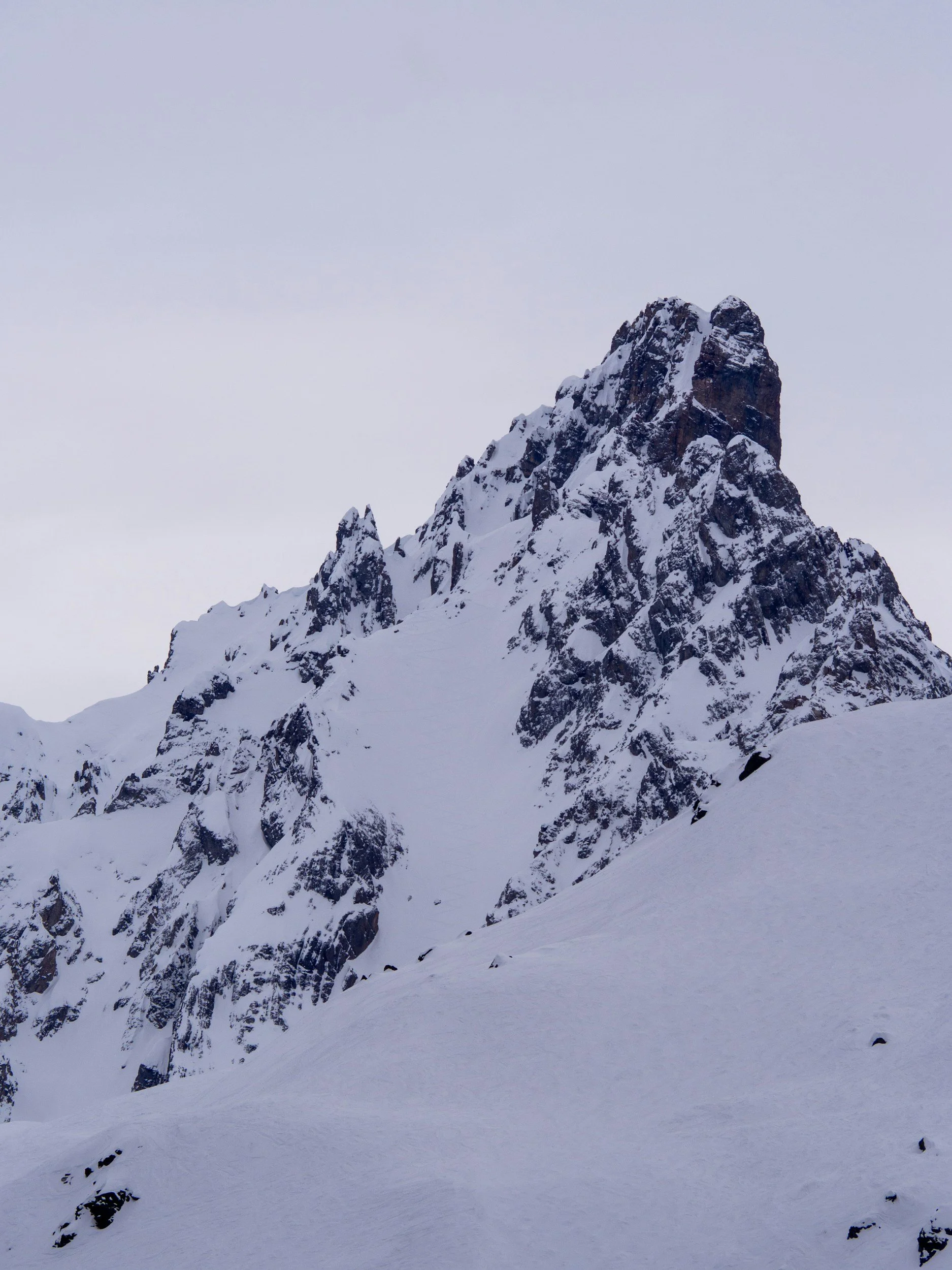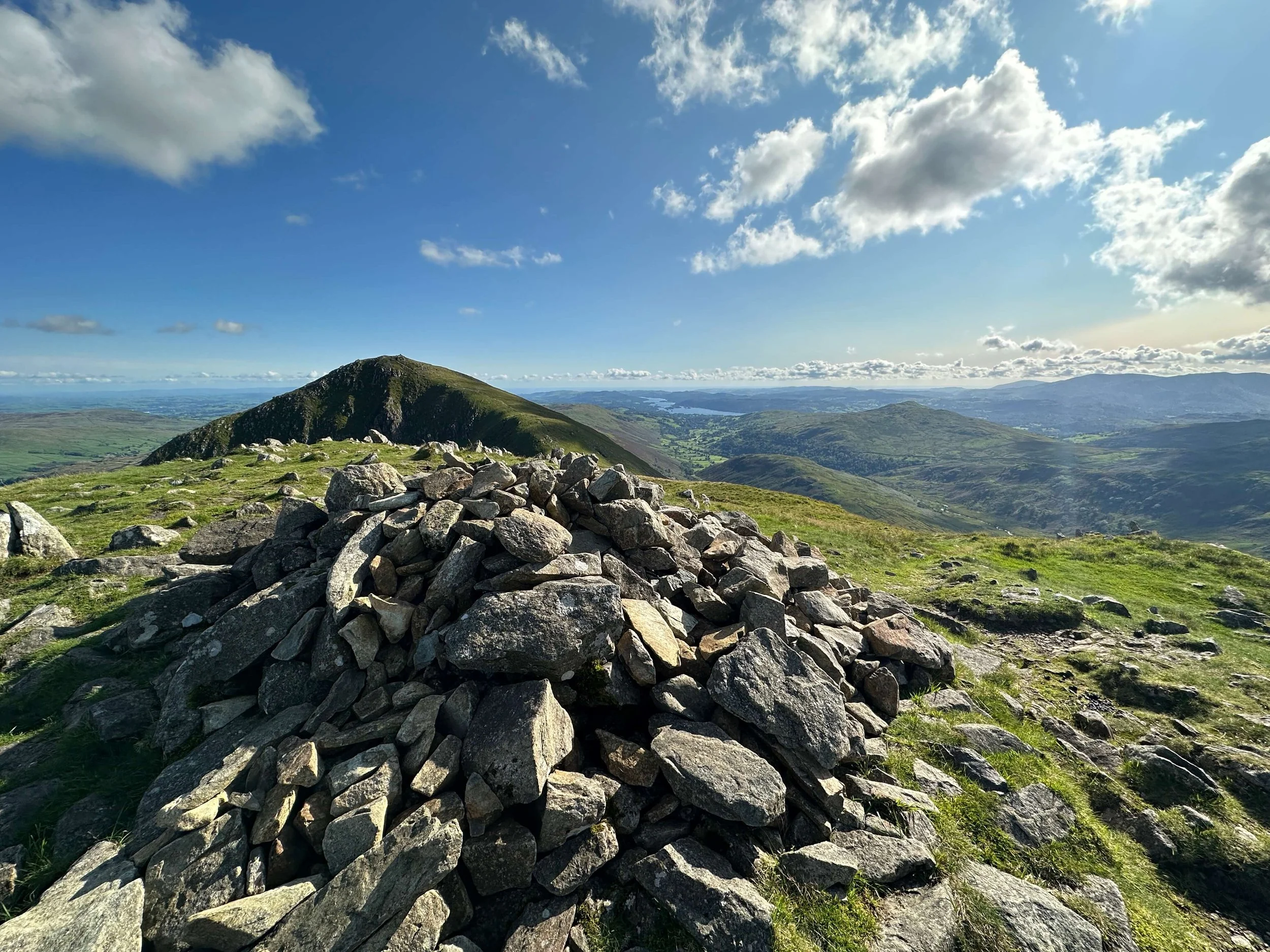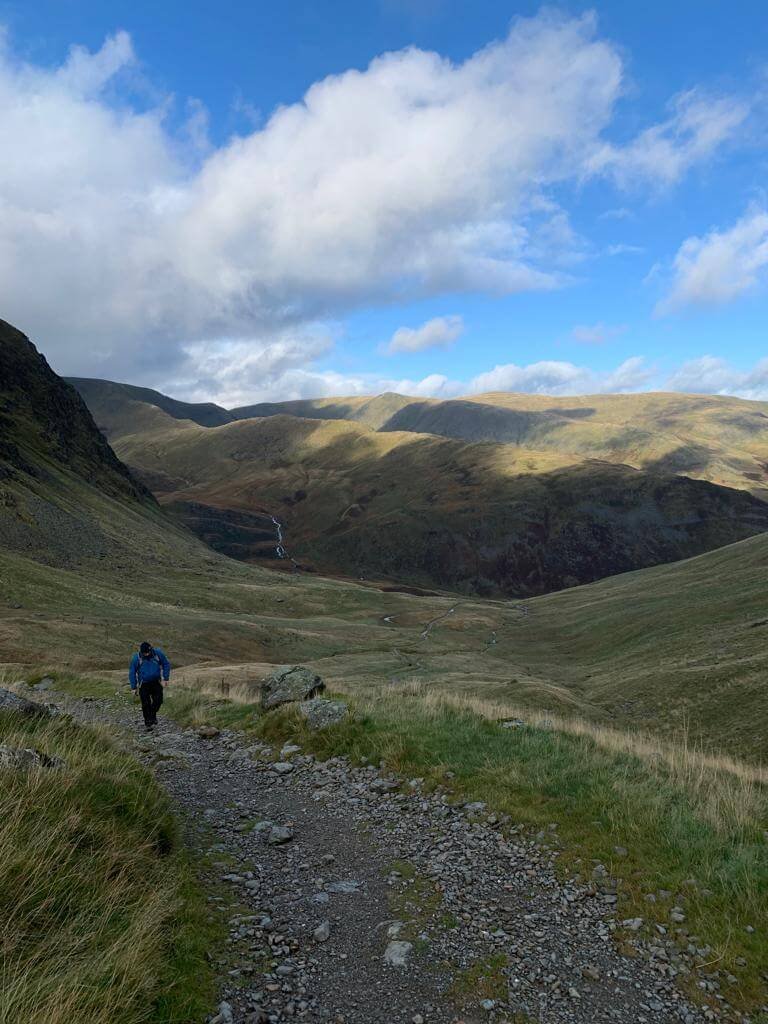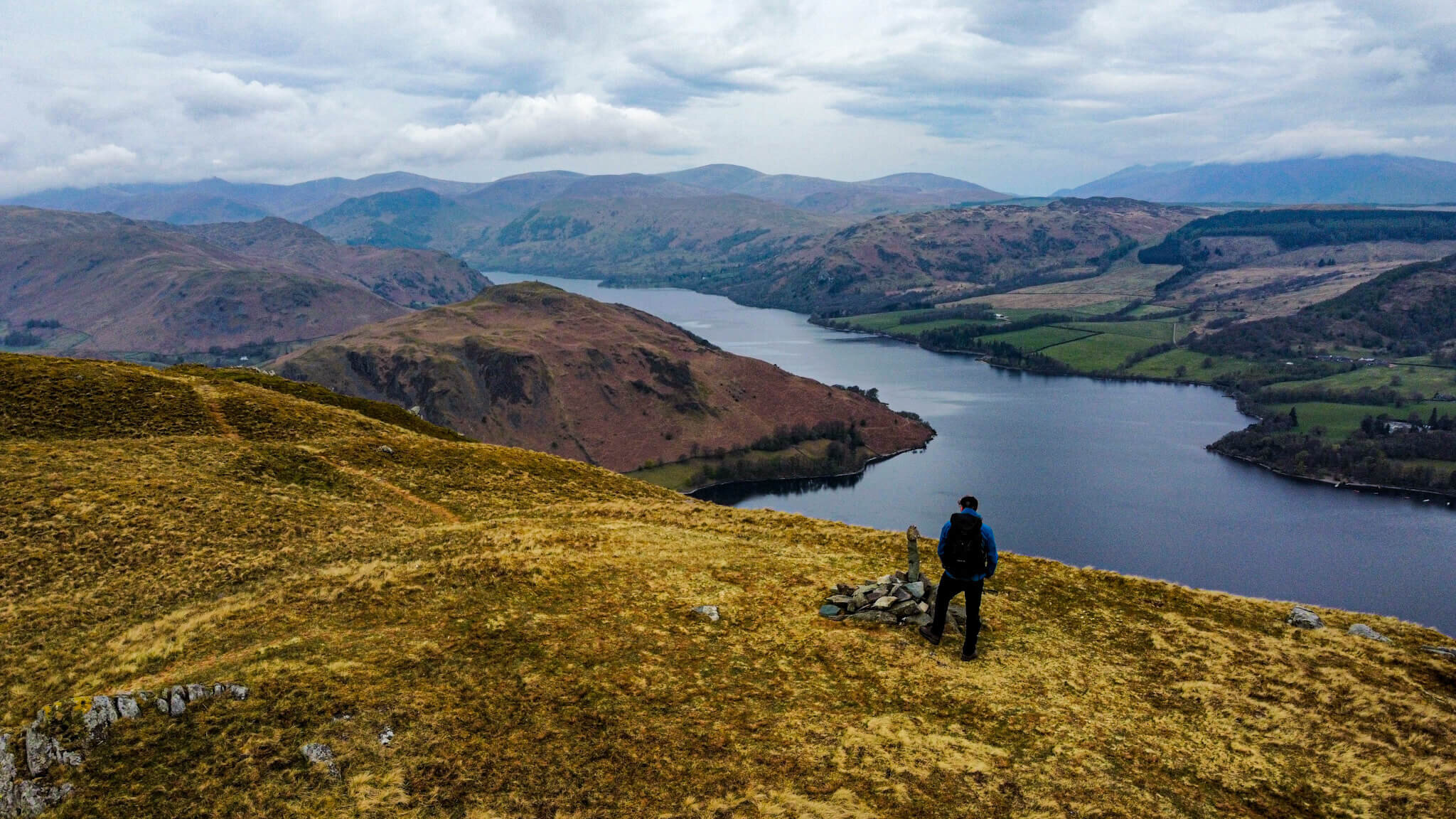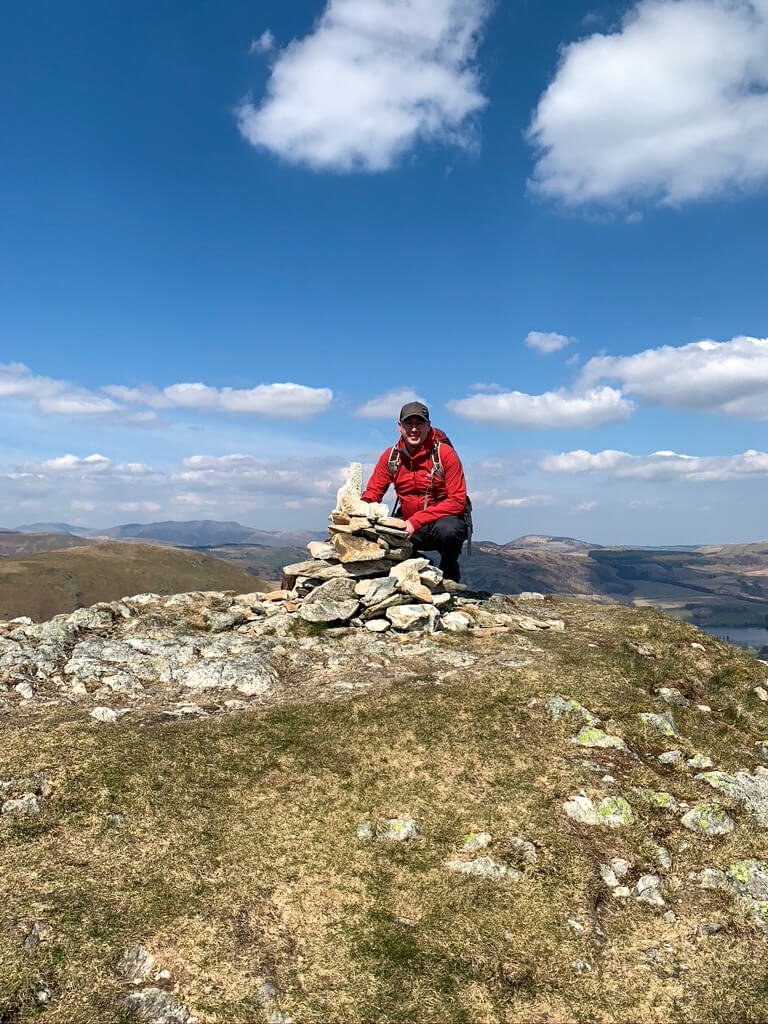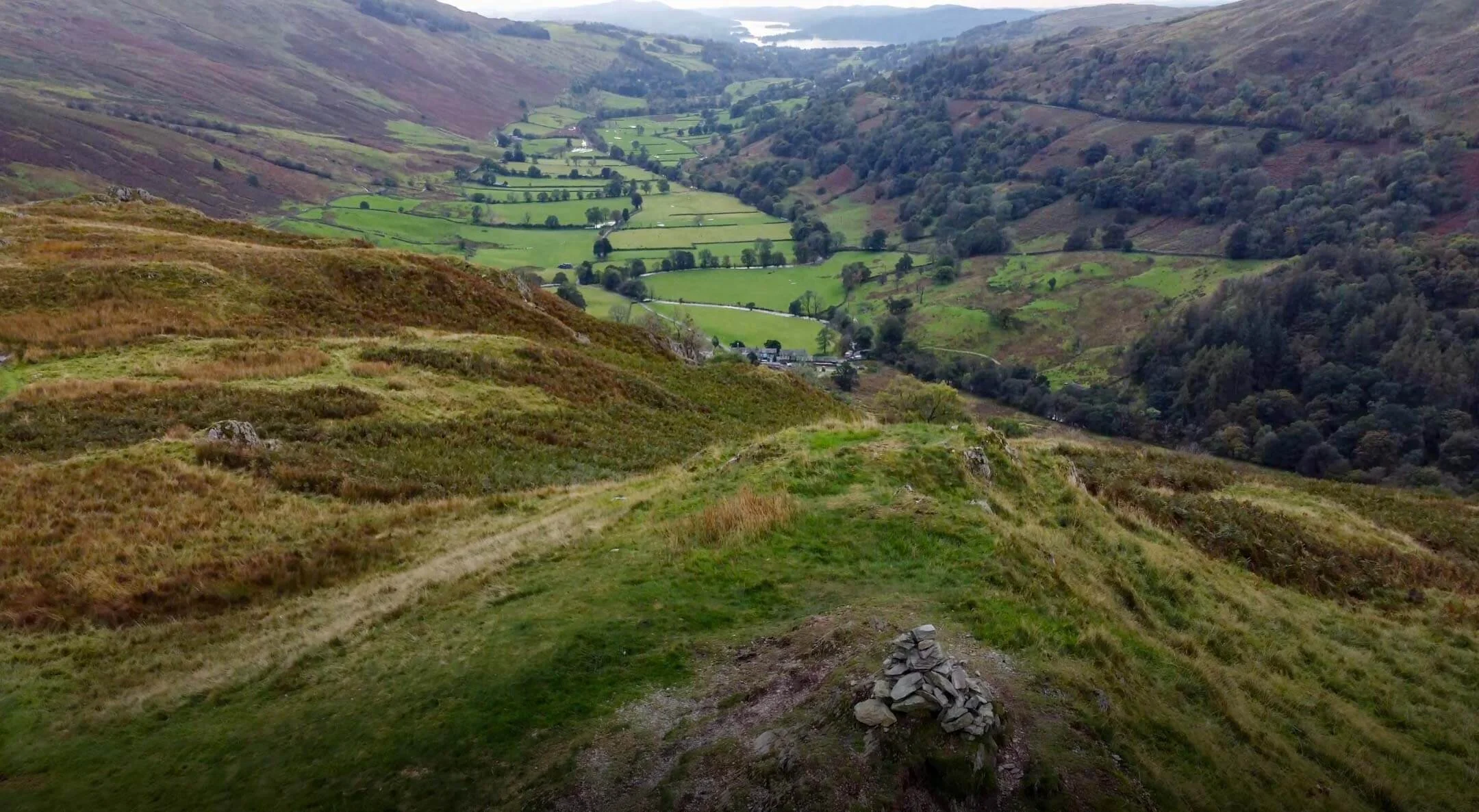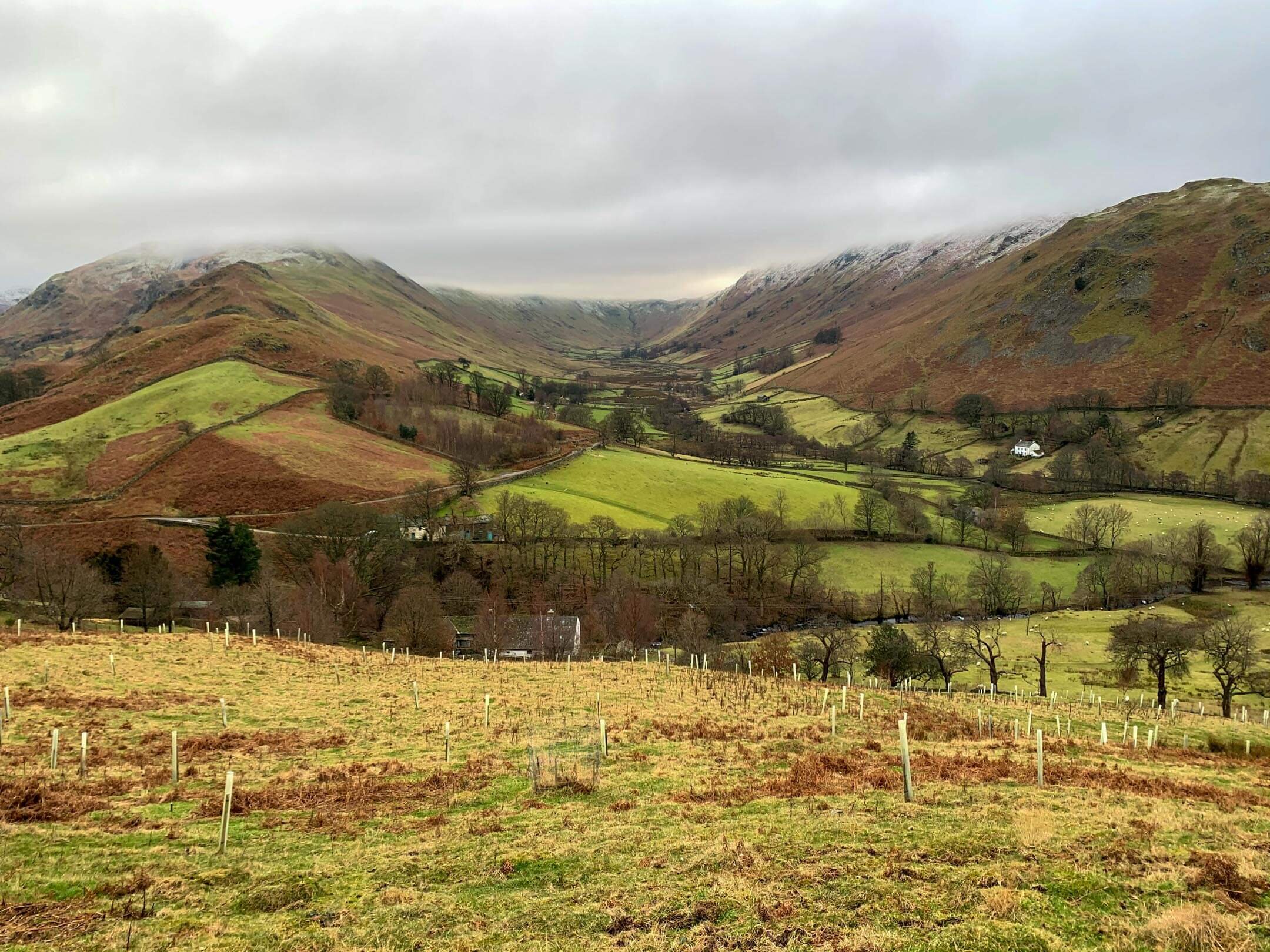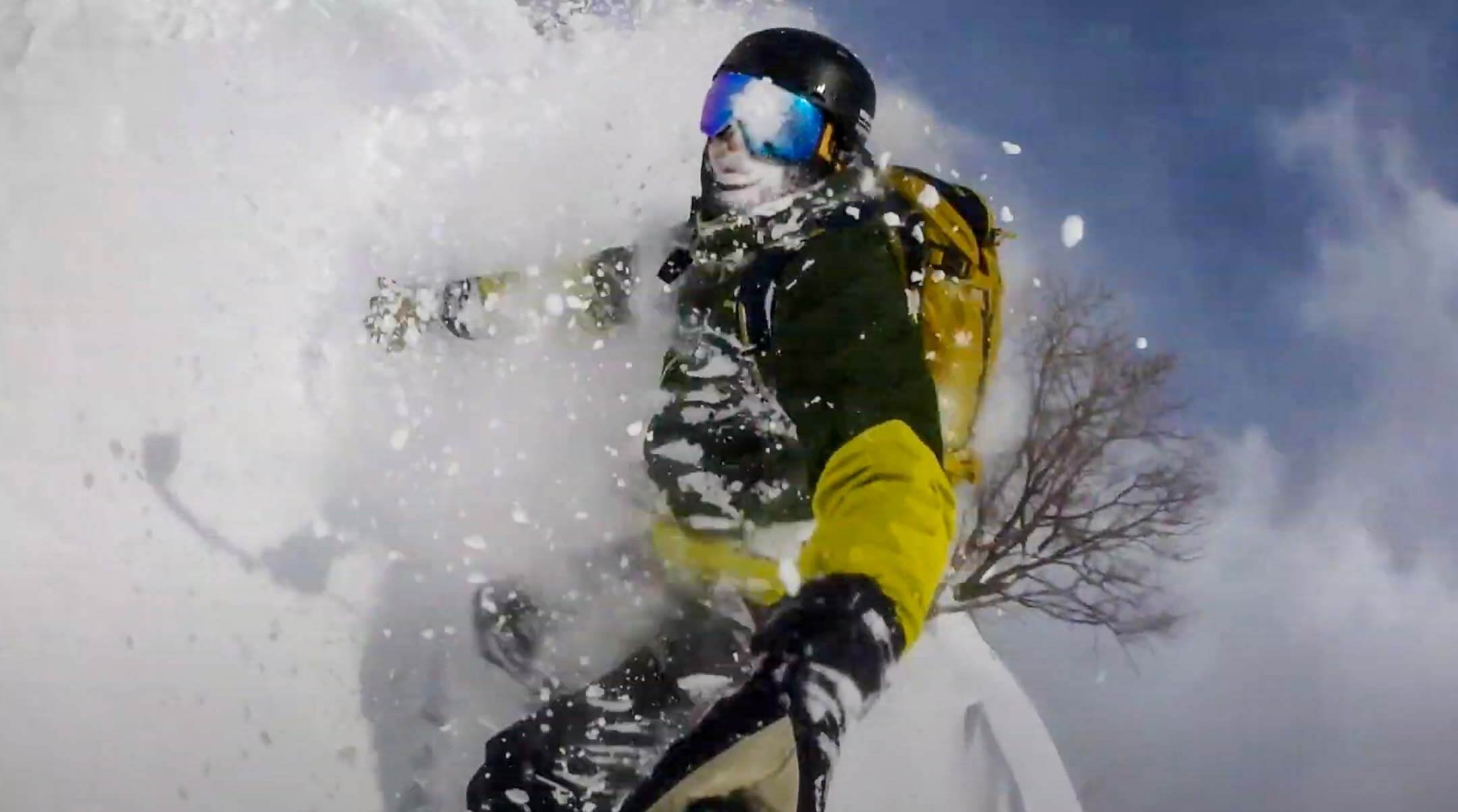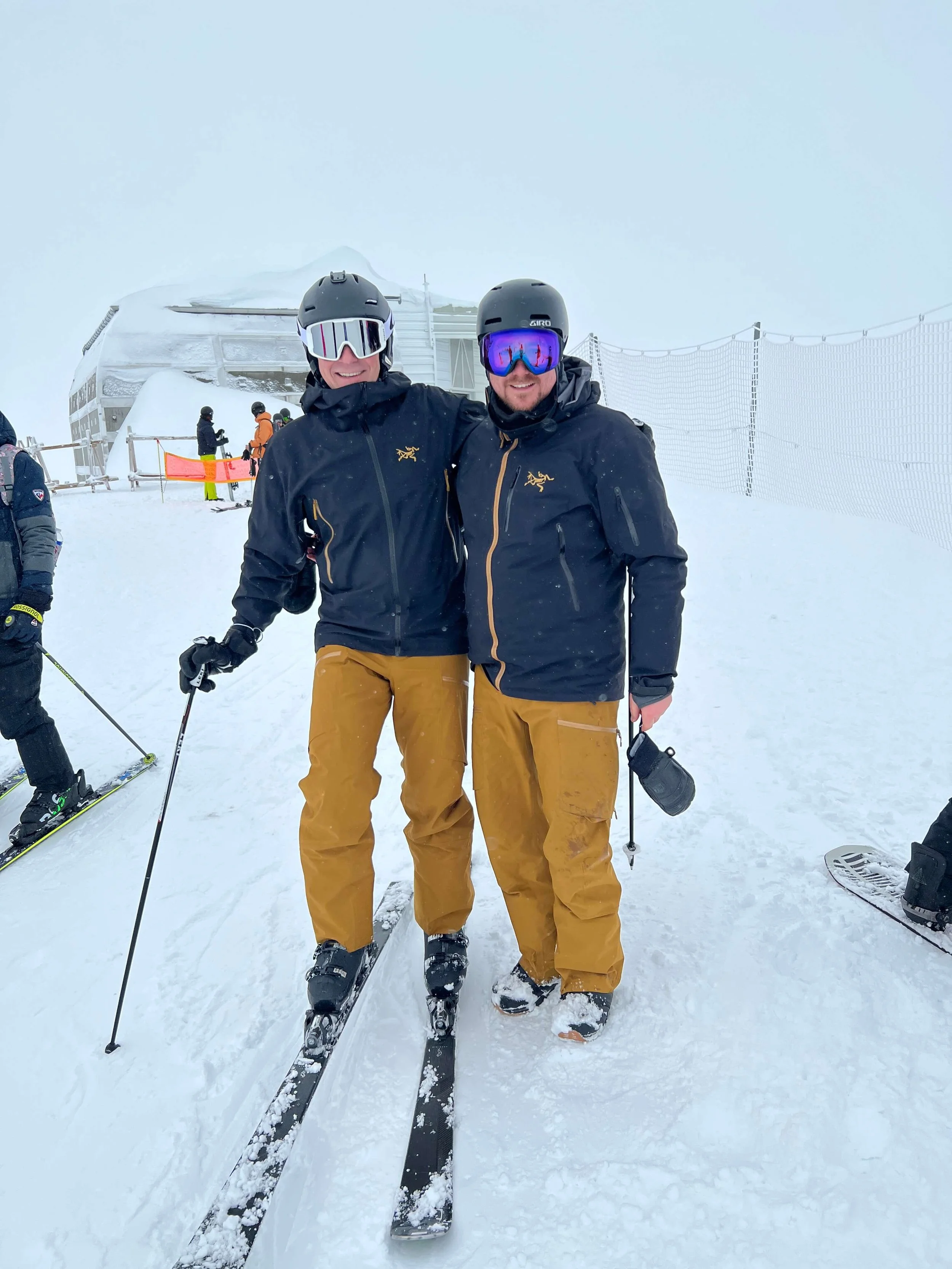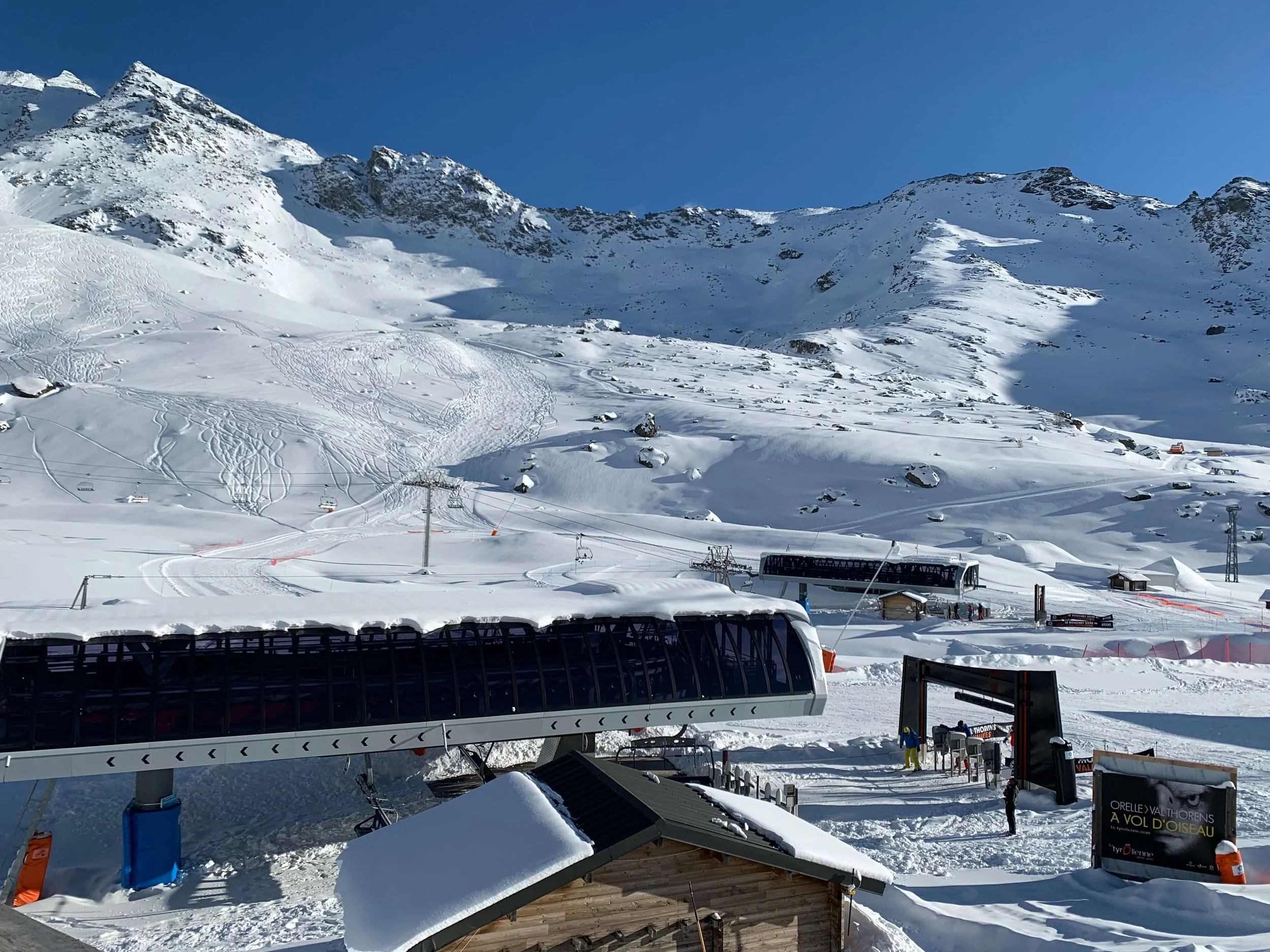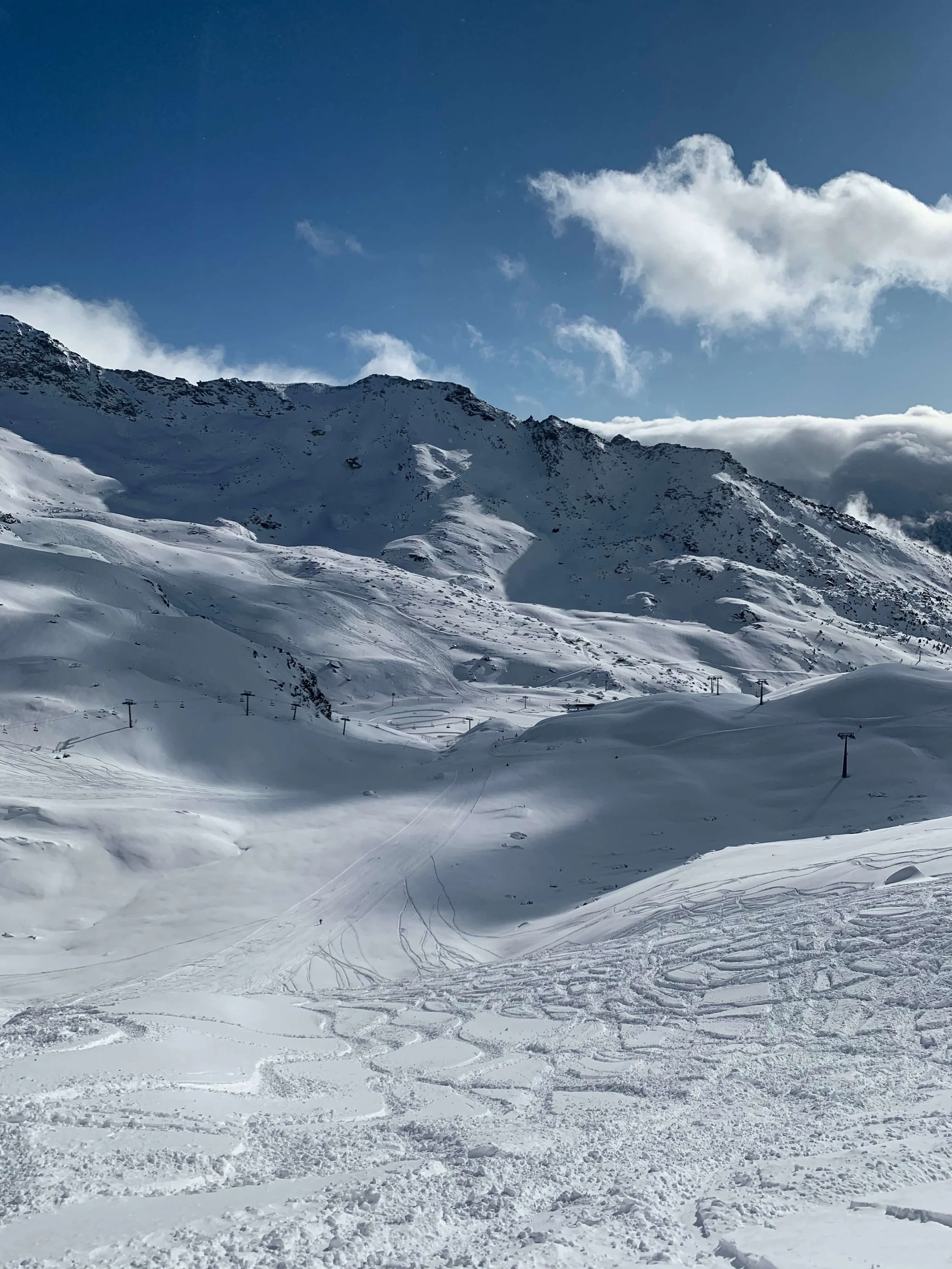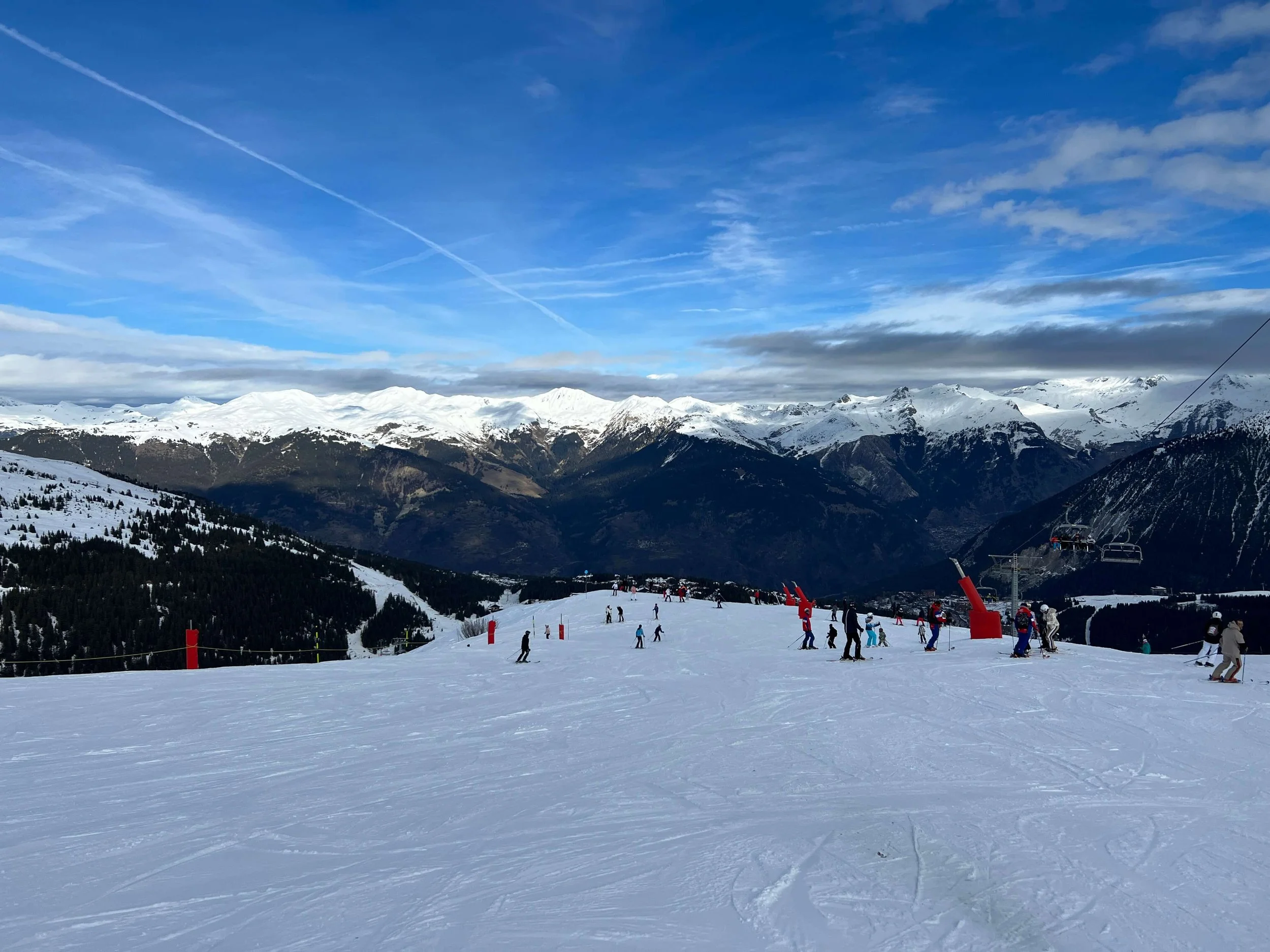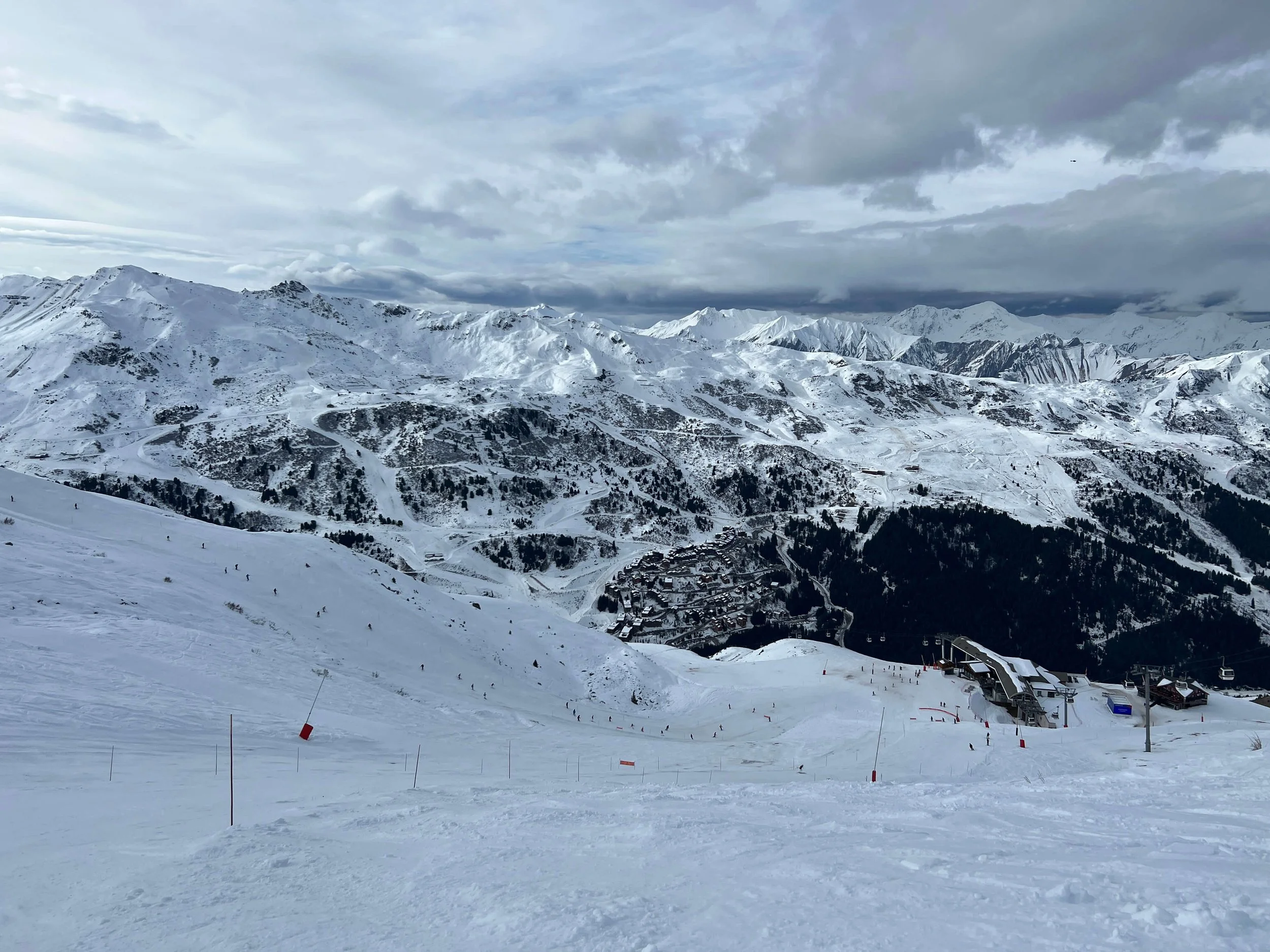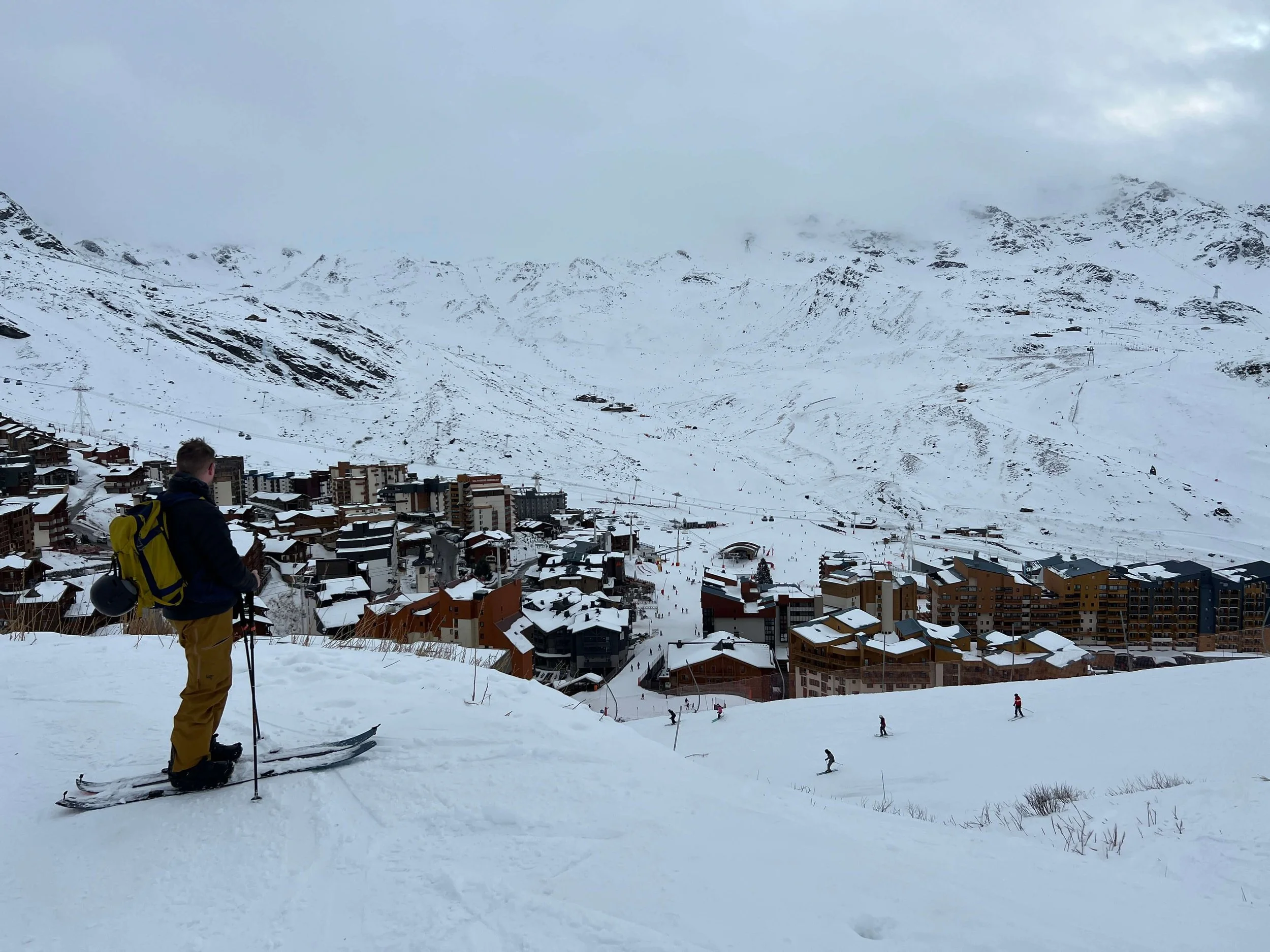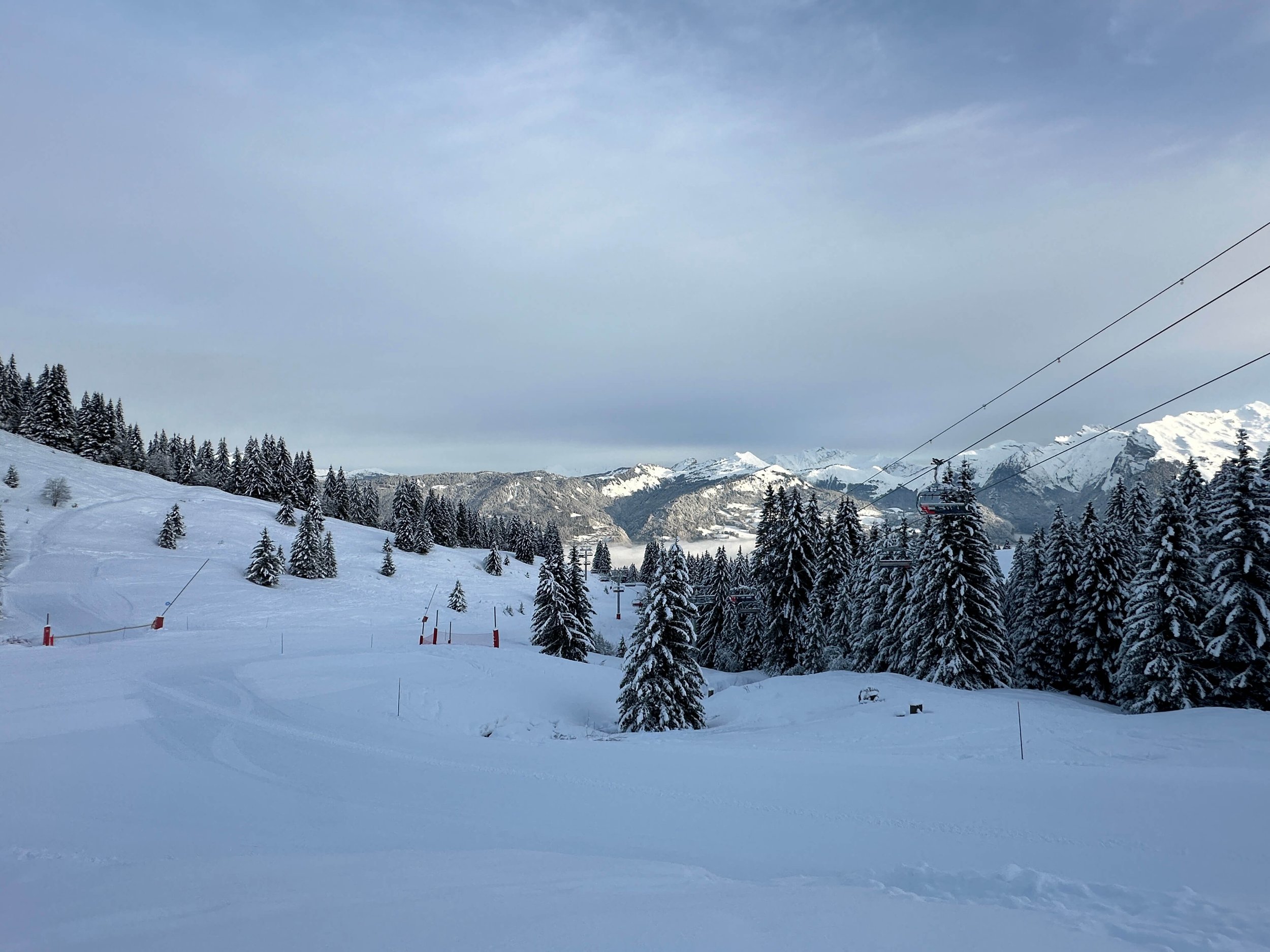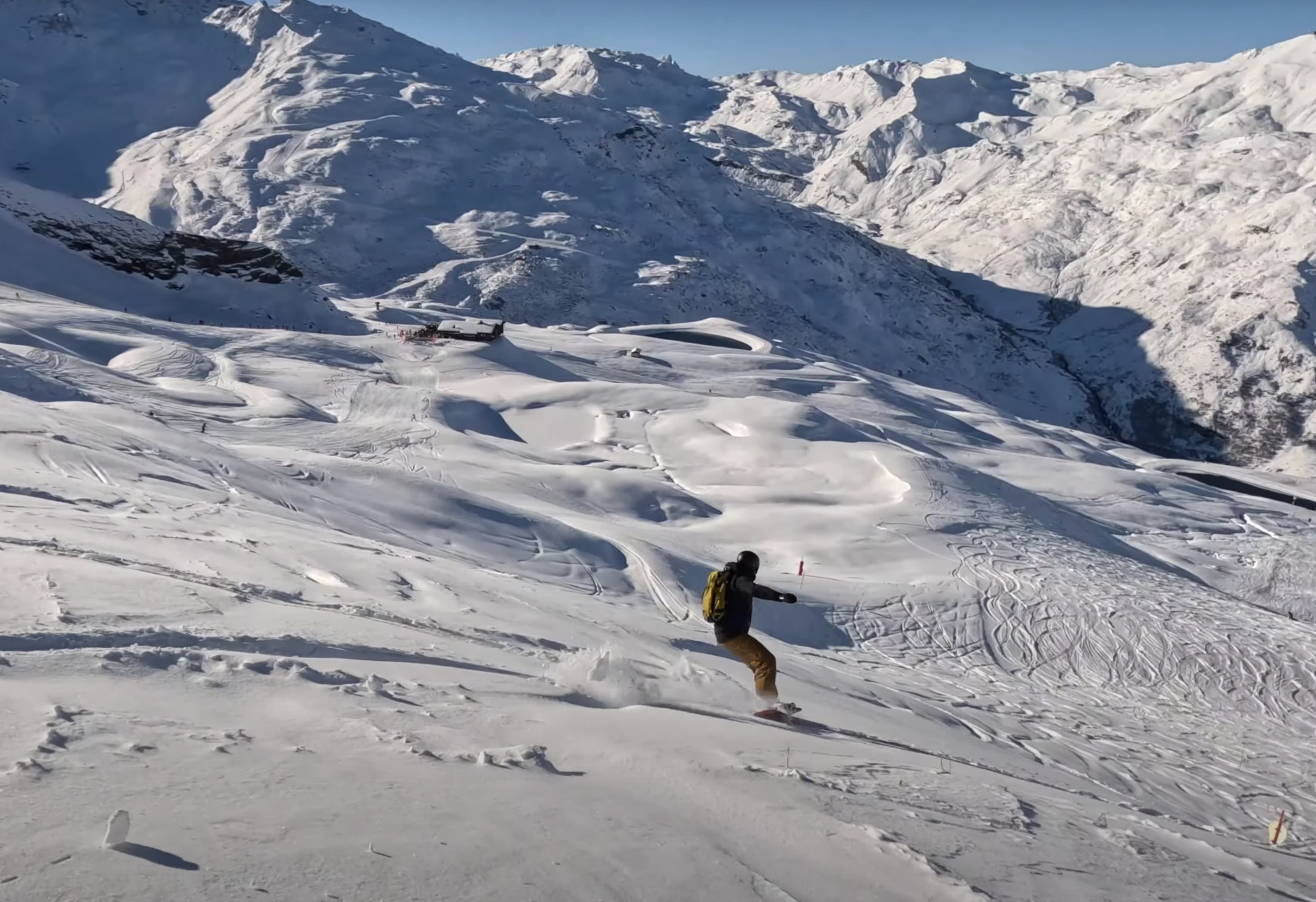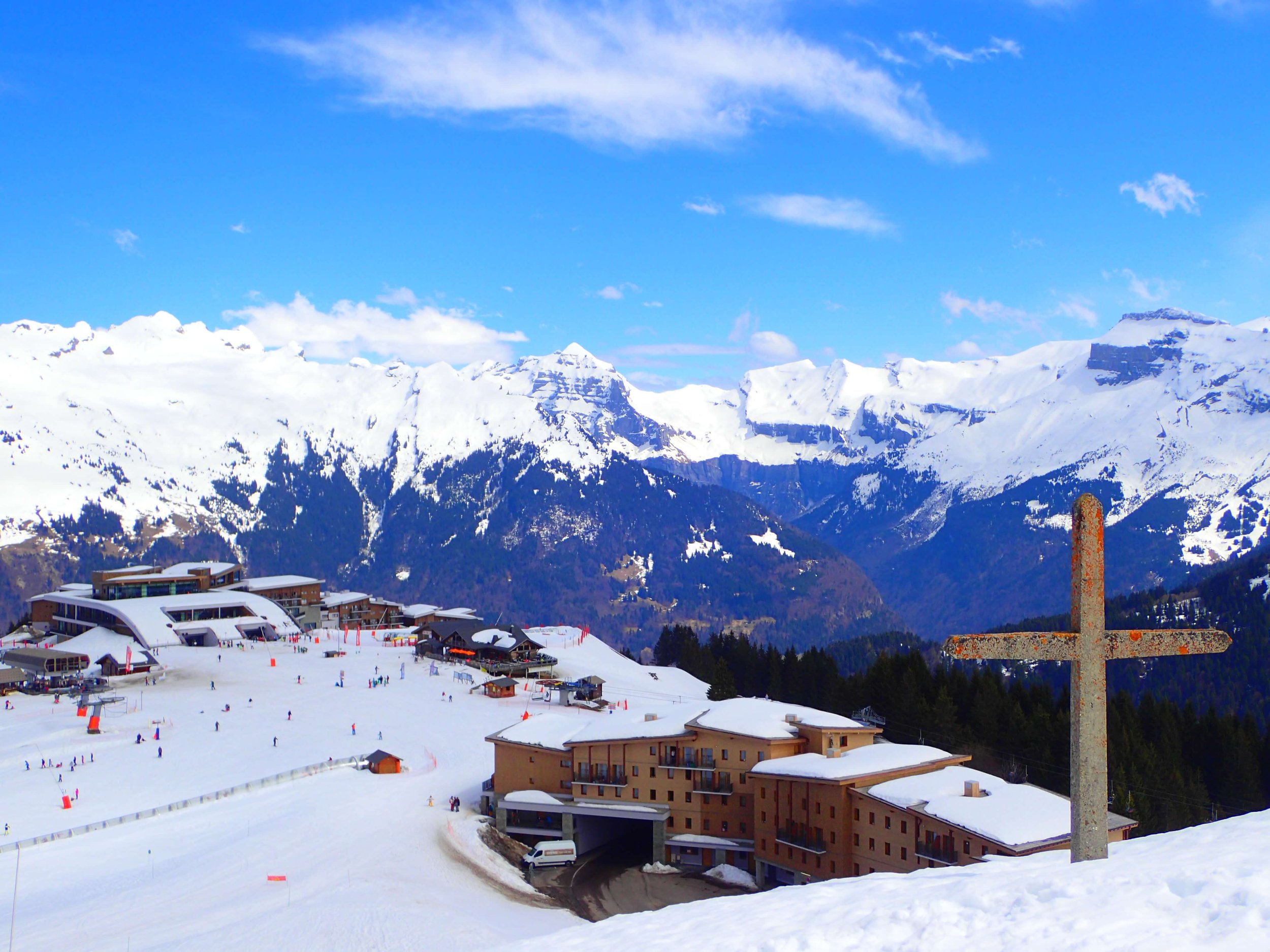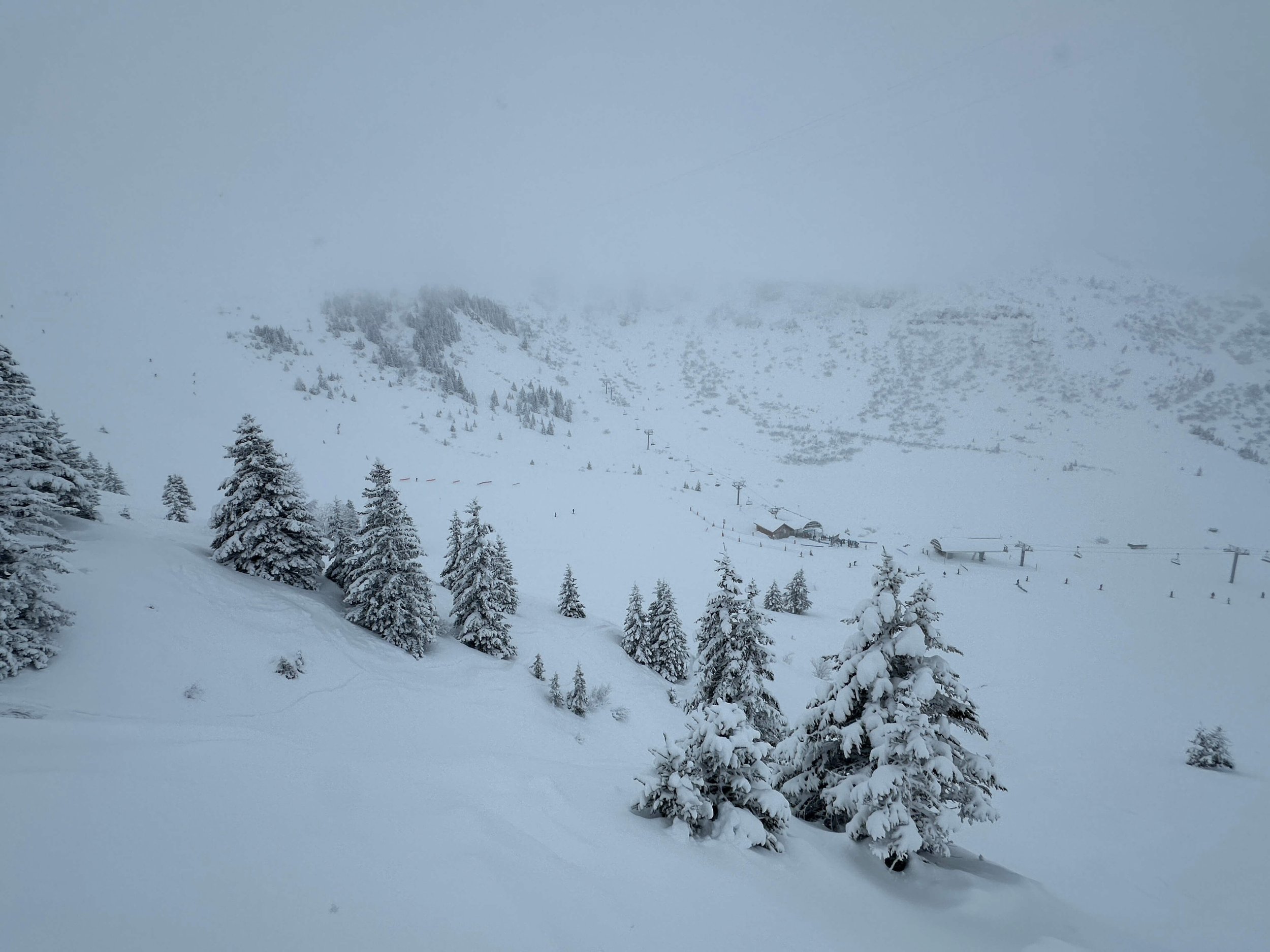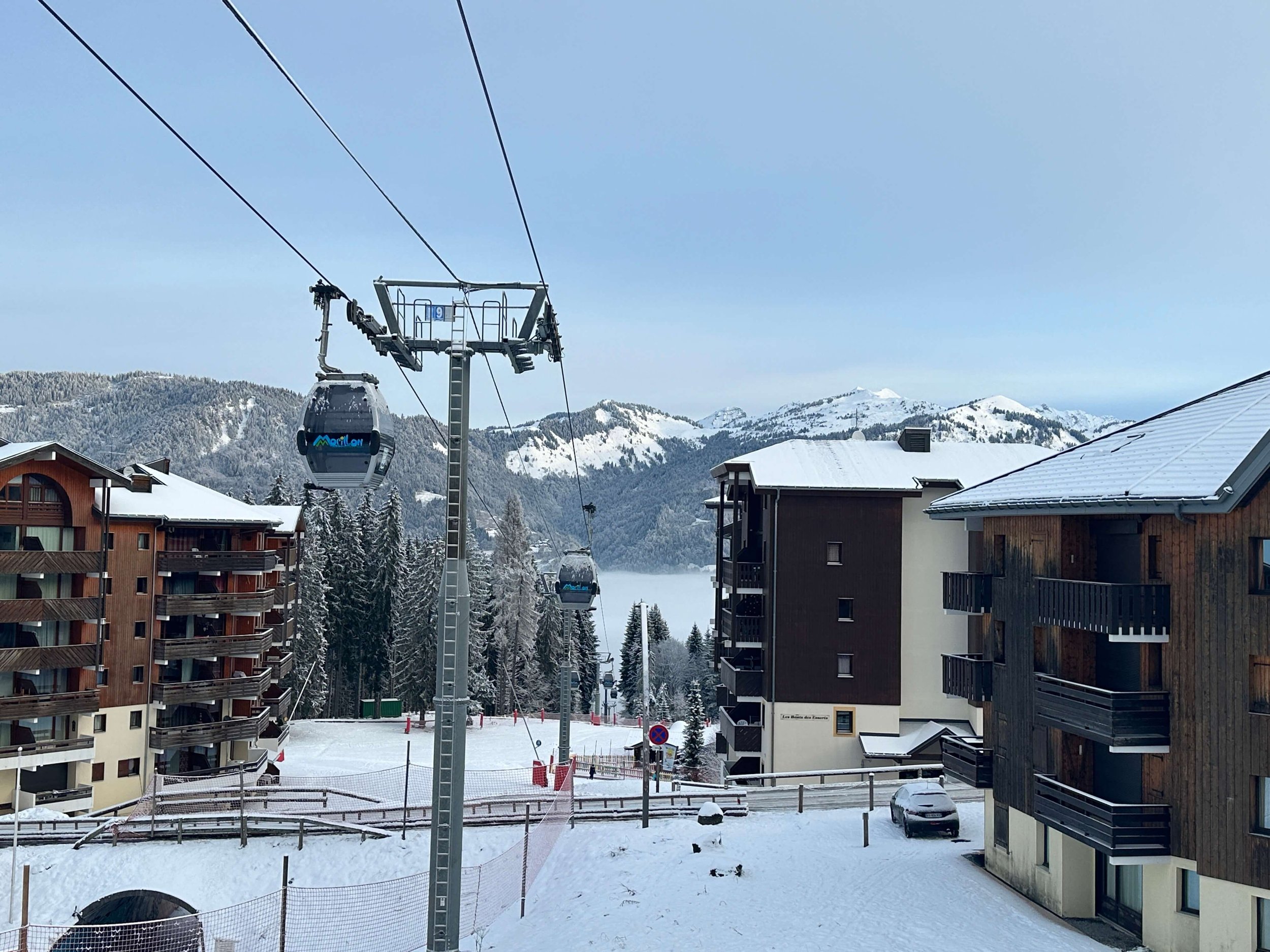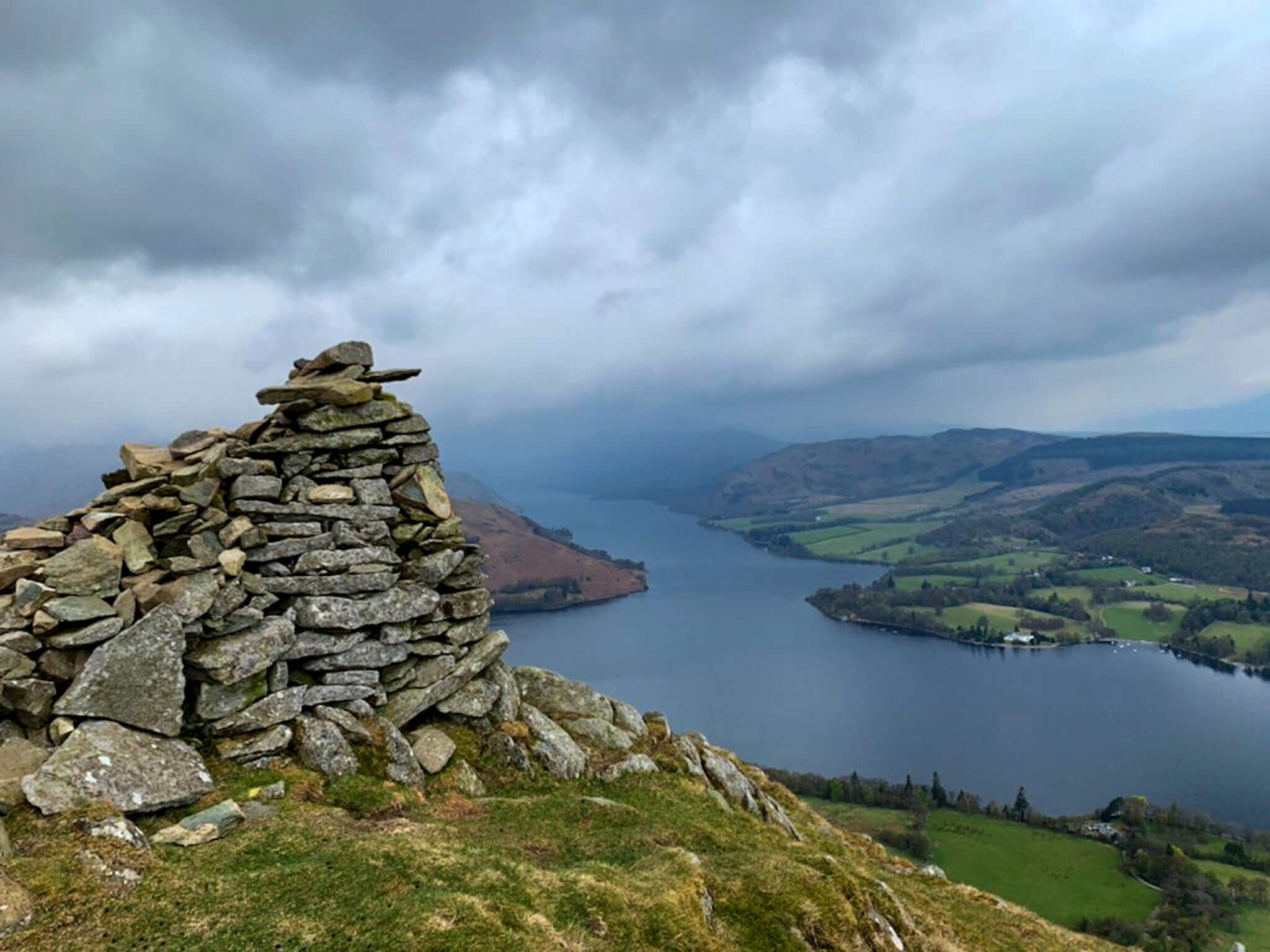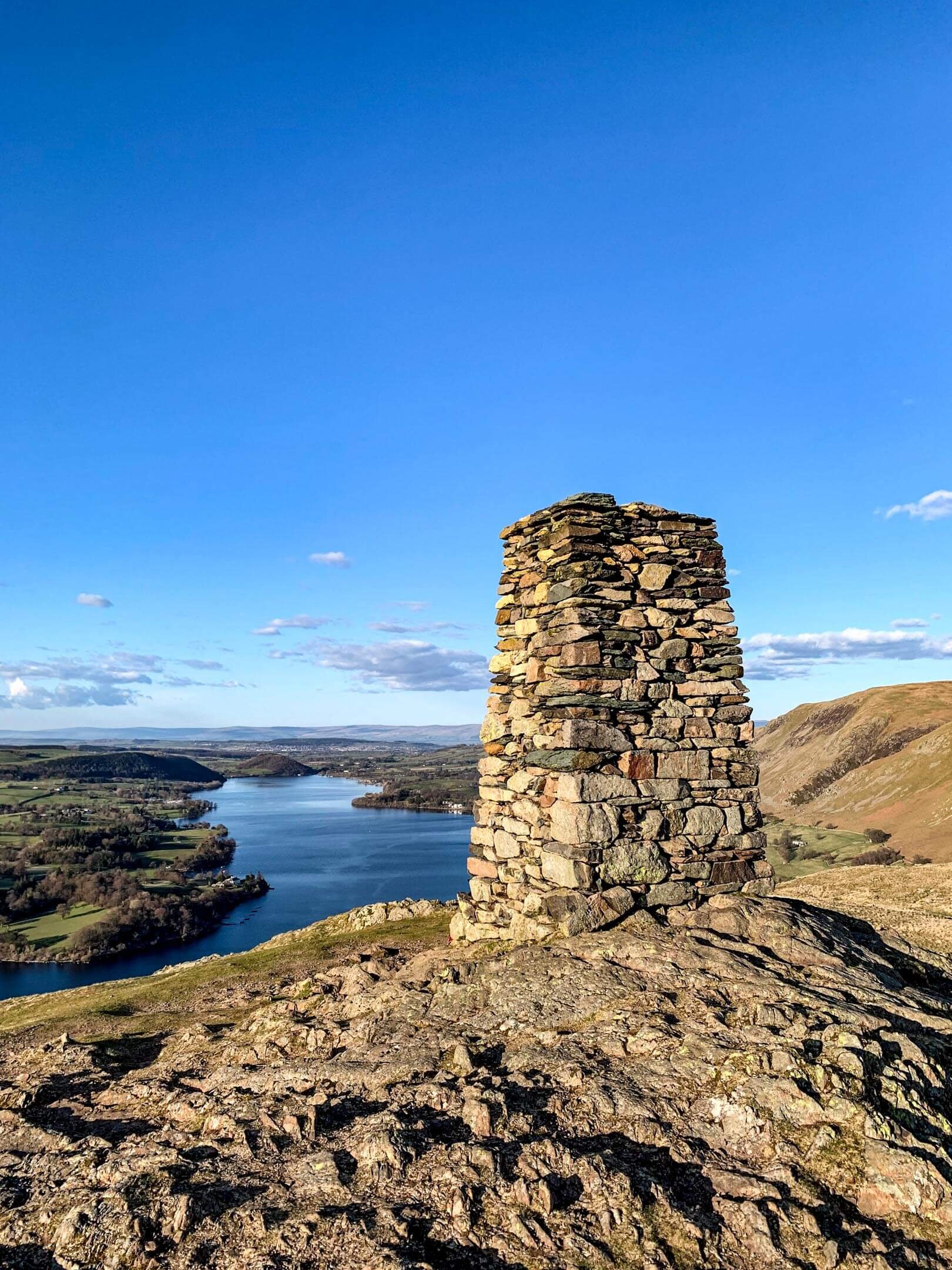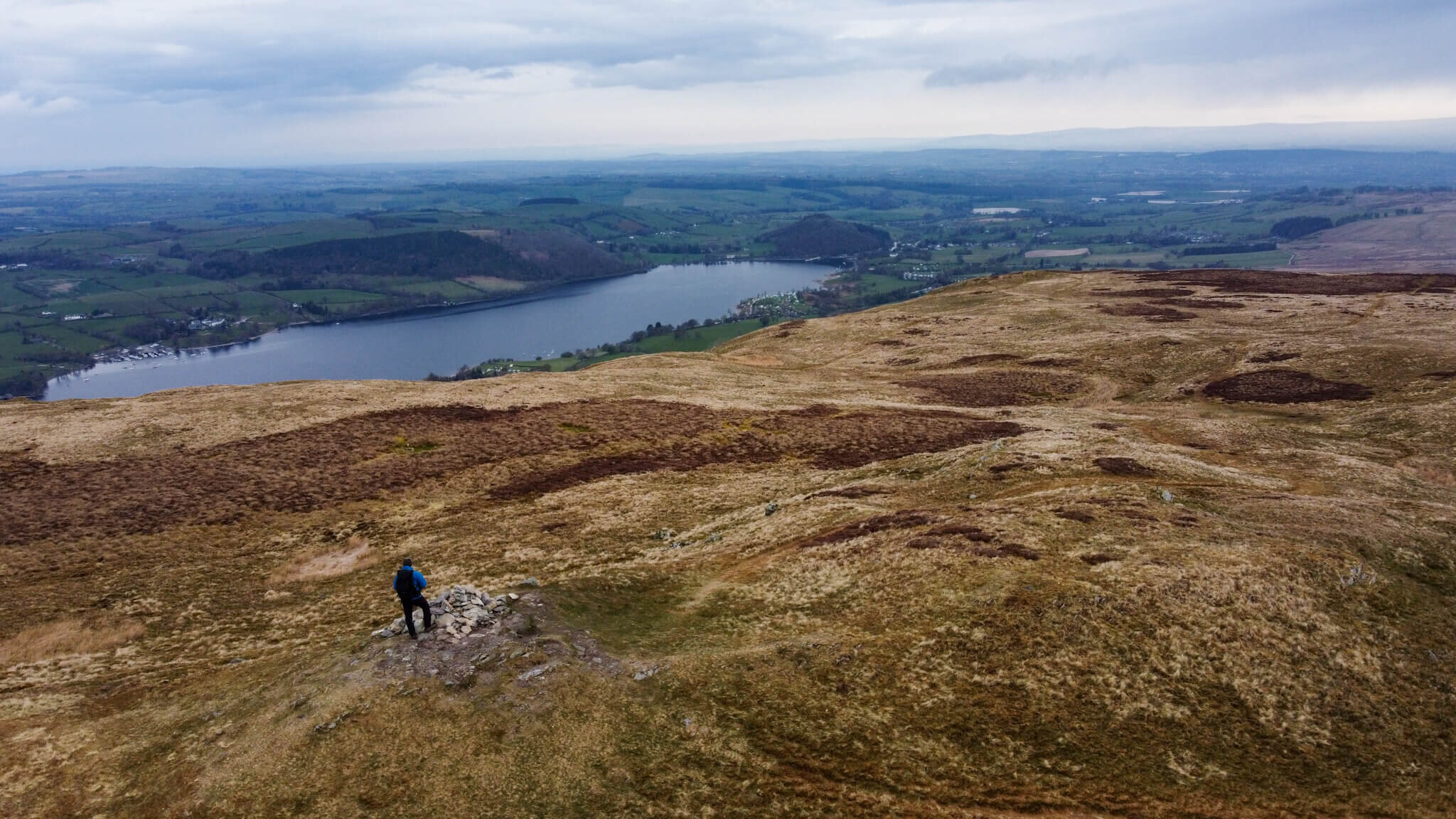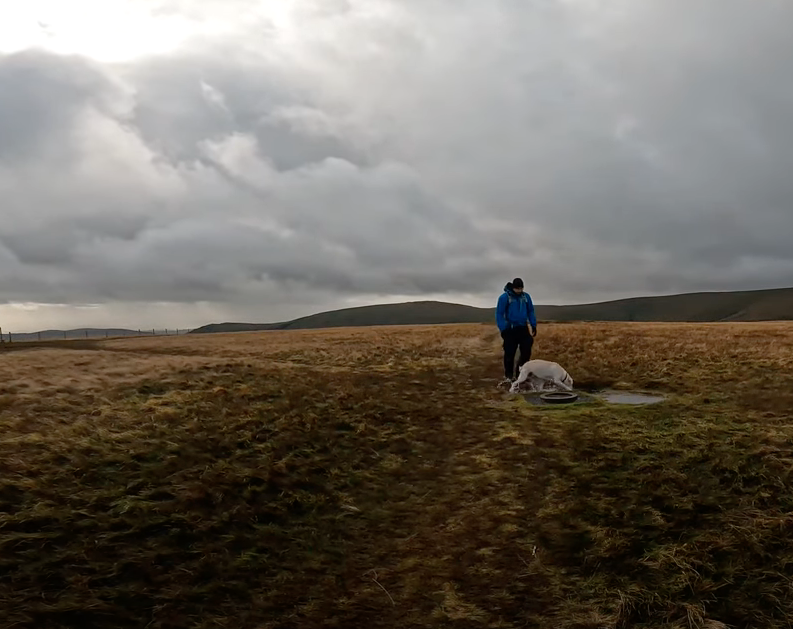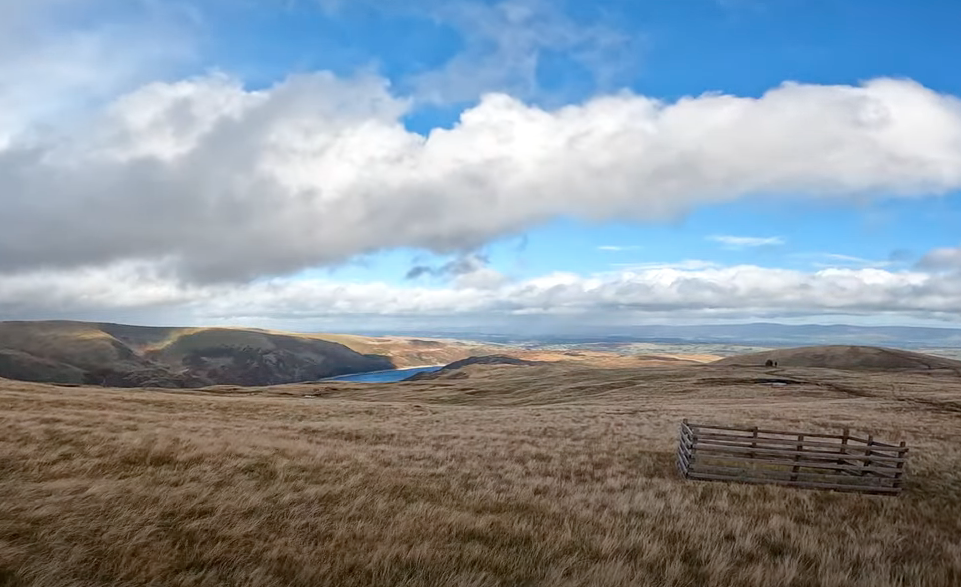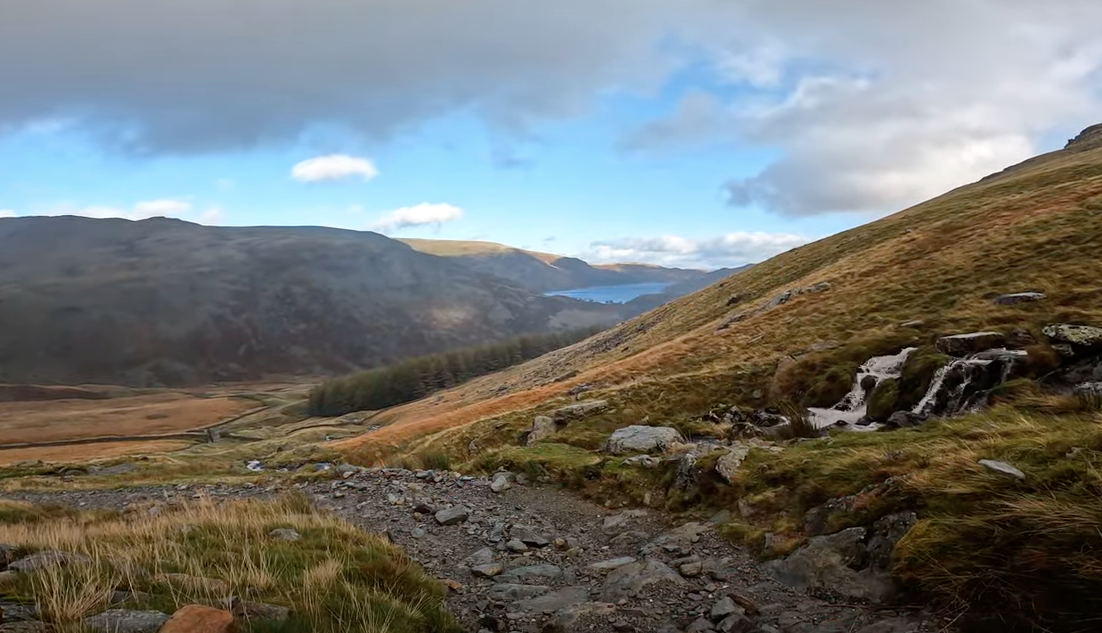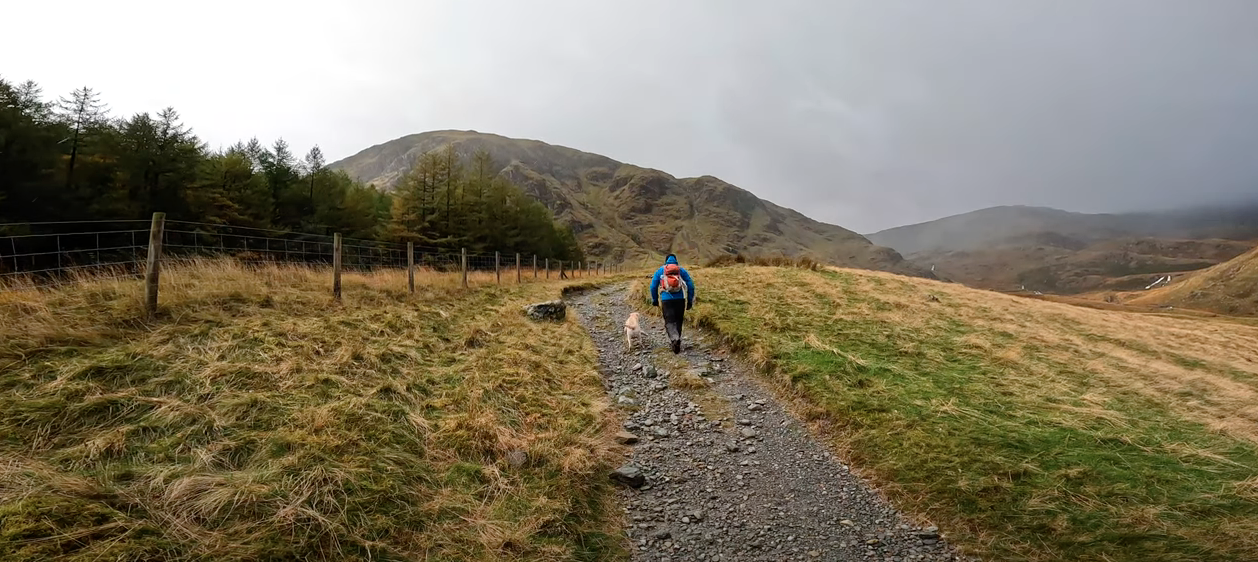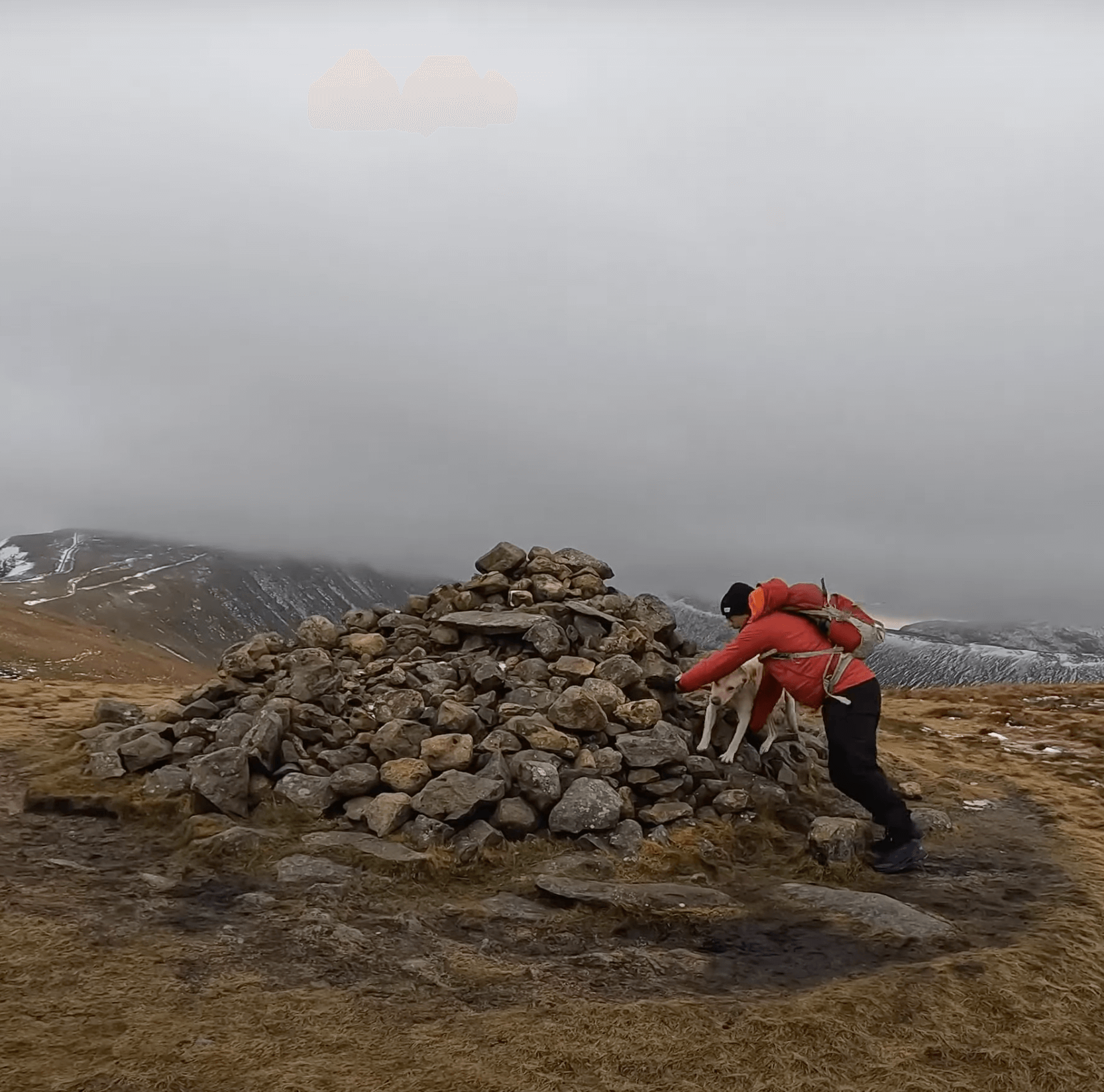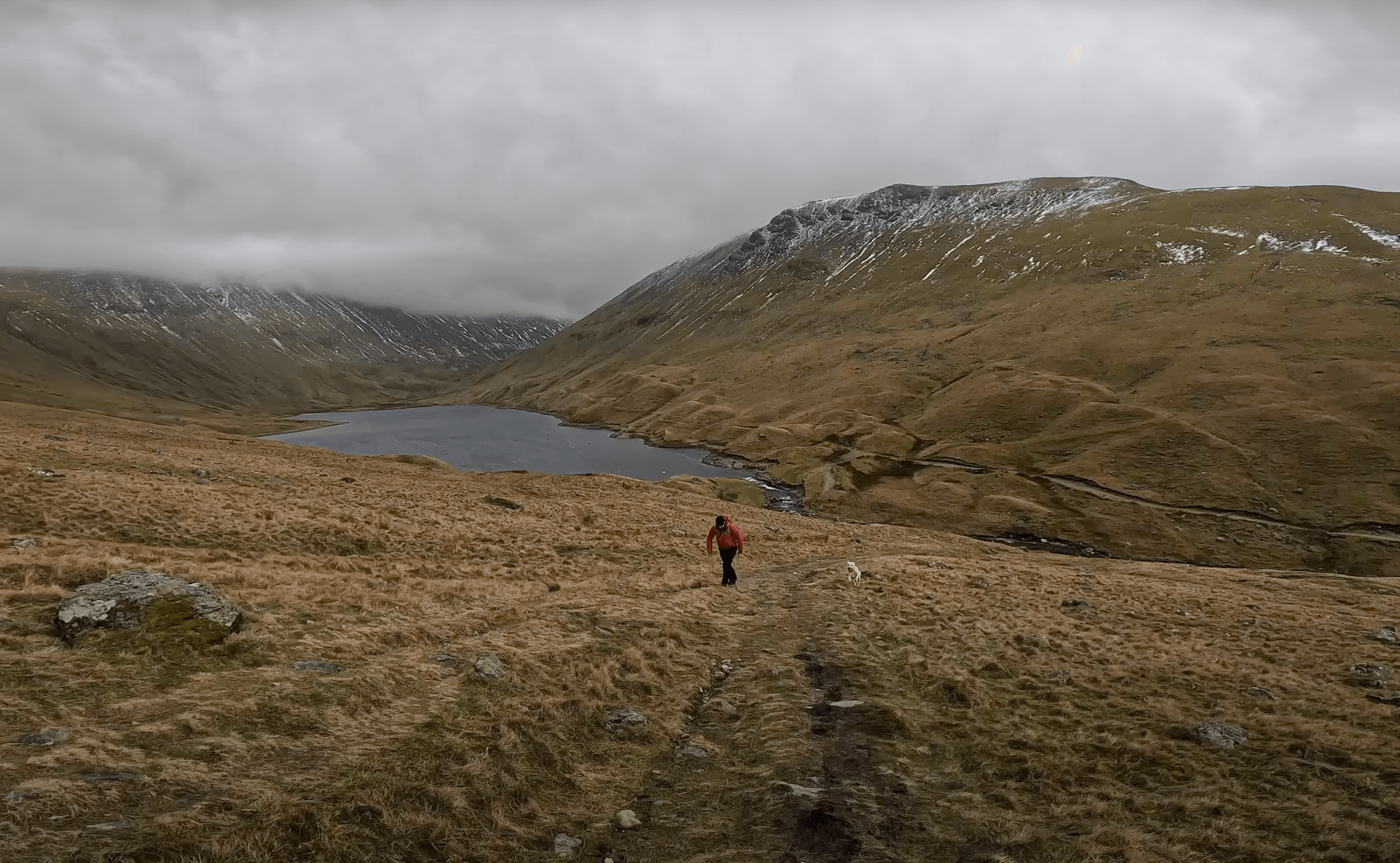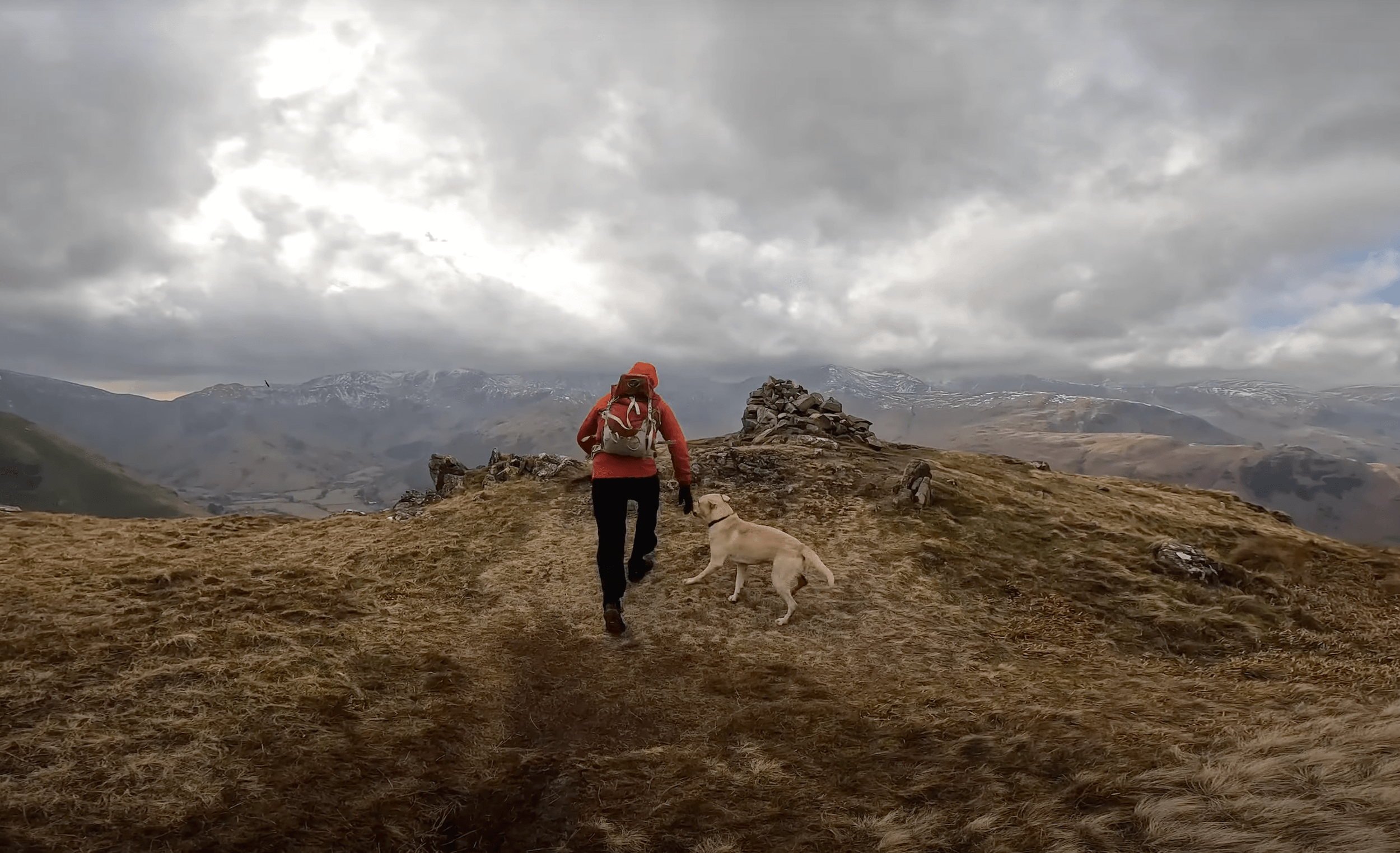OVRONNAZ SKI RESORT GUIDE
Ovronnaz ski resort, nestled in the Swiss Valais region, offers a distinctly authentic alpine experience away from the usual crowds found at the big name Swiss ski resorts. The village of Ovronnaz is known for its thermal baths and sunny terraces, but Ovronnaz ski resort is also worth the trip. The resort features mainly intermediate terrain however beginners and advanced skiers will also find pistes to suit suitable their ability. In total, 30km of empty slopes can be found with incredible views of the Swiss Alps. Unlike the larger, more commercialized resorts, Ovronnaz provides a peaceful change of pace, making it an great destination for skiers seeking quality snow, stunning views of the Rhone Valley, and a taste of traditional Swiss mountain hospitality.
OVRONNAZ FIRST IMPRESSIONS
I drove up to Ovronnaz from the valley and was immediately taken in by the beauty in this area. The village itself has a traditional charm however when arriving at the base area it was like there is nothing really there. The car park sits below the Jorasse chairlift and a lonely ticket office with no other real amenities. It is only once up the Jorasse chairlift where you see the resorts main restaurant and a small souvenir shop. This area is busy with skiers and snowboarders utilising the facilities and the beginners area. Once away from this area and around the resort there is a calmness to Ovronnaz.
OVRONNAZ SKI AREA
Ovronnaz ski area offers around 30km of mostly intermediate pistes, set against the stunning backdrop of the Valais Alps. With a vertical drop of approximately 1100m, the resort provides the opportunity to combine some pretty awesome pistes for a long run top to bottom. If you do not believe me check this video here. Ovronnaz is a particular favourite amongst the Magic Pass crowd for after a storm so if you hit it at the right time you could find yourself enjoying some incredible powder laps.
Intermediate skiers and snowboarders will love Ovronnaz for the abundance of beautiful groomed pistes which when avoiding weekend crowds are suitably quiet. Ovronnaz has enough to keep the able intermediate happy. Beginners have less to occupy them, although there is a beginners area near the Jorasse top station. This small learners area has its own drag lift and is an ok spot to learn your first turns. Away from the beginners area, a couple of gentle blues near the Petit Pré chair can keep advancing beginners entertained. Advanced terrain is limited however there are a couple of black routes in Ovronnaz. The real challenge for the more able skiers and snowboarders can be found in the freeride posibilities within the area.
WATCH THE FULL REVIEW
LIFTS AT OVRONNAZ
In Ovronnaz the lifts are not going to break any speed records, especially the Jorasse chairlift from the base area, however they do suitably handle the demands of the ski resort. The 4 chairlifts in Ovronnaz, include the new Petit Pré chairlift, which has been installed to replace an old draglift and improve the visitor experience. The lifts in Ovronnaz are fine, and during the week when it is quiet you wont be longing for bigger faster lifts. In addition to the four chairlifts, the Tsantonnaire drag lift accesses Ovronnaz highest lift accessible point at 2427m. The Tsantonnaire is an experience not to miss, its steepish climb, long duration and bend at the top is a badge of honour for any snowboarder who is successful in reaching the top. The only downside to the Tsantonnaire was the queue to ascend it… even on a quiet day.
Tsantonnaire Drag Lift Ovronnaz
WHERE TO SKI IN BAD WEATHER OVRONNAZ
This wasn’t an issue on my visit as I was blessed with bright bluebird skies for the duration of my visit. However, looking at the Ovronnaz ski area I can see with the lack of trees on the upper mountain it could be difficult to navigate in adverse weather. If I was in Ovronnaz during a storm, I would head to the area under the Col Express chairlift. This part of the resort may provide suitable context with the widely spaced trees in this area. Similarly the resort runs under the Jorasse chair are lined with trees so may provide a suitable option.
Trees under the Col-Express Chairlift
OVRONNAZ PISTE MAP
Ovronnaz Piste Map
OVRONNAZ GALLERY
OVRONNAZ SEASON DATES
Ovronnaz ski resort in Switzerland usually opens its winter season in early December and operates until late April. Thanks to its advantageous altitude and location, the resort offers consistent snow conditions throughout the winter months. The heaviest snowfall typically happens in January and February, making these months the best time to visit for excellent snow coverage. Visitors can enjoy Ovronnaz’s well-maintained pistes, often covered in a generous layer of fresh snow during this peak period. Ovronnaz ski resort receives an average annual snowfall total of approximately 450 cm ensuring its slopes are well-covered throughout the season.
TRAVEL TO OVRONNAZ
WHERE IS OVRONNAZ SKI RESORT?
Ovronnaz ski resort is situated in the Swiss canton of Valais, perched on a sunny terrace overlooking the Rhône Valley. It enjoys a strategic location approximately 1 hour and30 minutes by car from Geneva Airport, making it an accessible destination for international travelers seeking adventure. The resort lies close to the local towns of Sion and Martigny, both within a 30-minute drive; Sion serves as the regional capital with cultural attractions and amenities, while Martigny offers a gateway to the nearby vineyards and Roman history. Ovronnaz’s geographical setting provides stunning panoramic views of the surrounding peaks and easy access to the broader Valais region, blending convenience with scenic mountain charm.
GETTING TO OVRONNAZ SKI RESORT
Getting to Ovronnaz ski resort in Switzerland can be achieved smoothly through various travel options. The nearest major airport is Geneva Airport, about 1.5 to 2 hours away by car or public transport, making it the preferred gateway for international travelers. From Geneva, visitors can take a train to Martigny, a hub on the Swiss rail network, and then transfer to a local train or bus towards Ovronnaz. The train journey offers scenic views and runs regularly, ensuring convenient connections. Alternatively, self-driving from Geneva allows flexibility and direct access to the resort, with well-maintained roads suitable for winter driving conditions. For those arriving by air further afield, Zurich Airport is another option though it involves a longer transfer time. Regardless of the mode chosen, early planning is recommended, especially during peak ski season, to secure transport and enjoy a seamless journey to Ovronnaz.
Flying is and will remain the easiest and quickest way to reach a ski resort however, it also has the largest impact on your Carbon footprint.
OVRONNAZ LIFT PASSES
At Ovronnaz, lift pass prices offer excellent options for both short visits and extended stays. A one-day lift pass costs CHF 55 for adults, providing full access to the ski area for a single day of skiing or snowboarding. For those planning to immerse themselves in the mountains, a six-day lift pass is available at CHF 275 for adults, offering great value over multiple days on the slopes. Additionally, visitors should consider the Magic Pass, which includes Ovronnaz among many other resorts. This pass represents exceptional value, granting access to a wide range of ski areas across Switzerland and neighbouring countries, making it an ideal choice for travellers looking to explore multiple destinations during their ski season.
OVRONNAZ PROS
Ovronnaz has varied ski terrain suitable for all skill levels, from beginners to experts however is best suited to intermediate skiers.
Ovronnaz has reliable snow conditions due to high elevation and consistent snow record.
The lift system is suitable for the resorts needs with recent upgrades to the lifts including the introduction of the Petit Pré
Ovronnaz village has thermal spas which are perfect for unwinding after a days skiing.
Ovronnaz is included on the Magic Pass, the worlds best value ski pass. This means skiing in Ovronnaz can be linked with days at other nearby Swiss ski resorts.
OVRONNAZ CONS
Not much in the way of beginner friendly terrain can be found in Ovronnaz.
The slow Jorasse chairlift could do with updating to uplift visitors from the base area quicker.
If you find value in this content please consider supporting the website by clicking the image below and buying me a coffee.
OVRONNAZ FREQUENTLY ASKED QUESTIONS
Where is Ovronnaz ski resort located?
Ovronnaz is located in the Swiss Alps, in the canton of Valais. It sits on a sunny plateau overlooking the Rhone Valley.
What is the best time to visit Ovronnaz for skiing?
The peak ski season runs from December to April, with the best snow typically found from January through March.
How many ski runs does Ovronnaz have?
Ovronnaz offers around 30 kilometers of ski slopes, with runs suitable for beginners, intermediates, and advanced skiers.
Is Ovronnaz good for beginners?
I wouldn’t say that Ovronnaz is great for beginner skiers and snowboarders. There is a small learners area and besides from that not too much suitable terrain for learning. I would recommend other Magic Pass ski resorts like Vercorin, Saas Fee or Les Diablerets over Ovronnaz as a beginners resort.
What types of lifts are available in Ovronnaz?
The resort has a mix of chairlifts and surface lifts to access various parts of the mountain. The lifts in Ovronnaz include the newer Petit Pré lift and the less new Tsantonnaire drag lift.
Are there activities besides skiing?
Yes, Ovronnaz offers snowshoeing, winter hiking trails, and a wellness center featuring thermal baths, making it a well-rounded destination.
How accessible is Ovronnaz?
The resort is about a 1.5-hour drive from Geneva Airport and easily reachable by train and bus connections from nearby towns.
What accommodations are available?
There is a range of lodging options including hotels, chalets, and apartments, many of which offer ski-in/ski-out convenience.
Is Ovronnaz suitable for families?
Absolutely, with kid-friendly slopes, ski schools, and various family-oriented activities, Ovronnaz is ideal for a family ski holiday.
Does Ovronnaz have après-ski options?
Although quieter than larger resorts, Ovronnaz offers cozy bars and restaurants where visitors can relax after a day on the slopes.
OVRONNAZ FINAL THOUGHTS
I am glad that I visited Ovronnaz and would certainly return to ski the odd day in the right conditions. In comparison to some other favourites on the Magic Pass, Ovronnaz pales in comparison, but the village and ski area are certainly worth the visit. I feel that to make the most of a visit to Ovronnaz I would like to revisit with my splitboard to explore some of the freeride terrain available.
If you found value in this content and would like to support my adventures, consider buying me a coffee; it helps keep the blog running and fuels my passion for exploring the world's mountains.
The Complete Three Valleys Ski Area Guide
The Three Valleys in the French Alps is one of the largest and most renowned ski areas in the world. Spanning over 600 kilometers of pistes across eight interconnected ski resorts, the Three Valleys offers an unparalleled skiing experience for skiers and snowboarders of all levels. From the charming village of Courchevel to the lively resort of Méribel, this guide will provide you with a comprehensive overview of the Three Valleys ski area, including detailed information on each resort, the best runs, and insider tips to make the most of your ski vacation.
Val Thorens Village Shops
THREE VALLEYS FIRST IMPRESSIONS
The Three Valleys in the French Alps is a truly massive ski area, with over 600 kilometers of pistes spread across eight interconnected ski resorts. As you step onto the slopes, the sheer scale of the terrain can feel almost overwhelming, with endless runs, lifts, and off-piste opportunities beckoning in every direction. However, this vastness is also the Three Valleys' greatest strength, as it means you can continue to explore for days on end, always discovering new and exciting areas to ski or snowboard. Whether you're a seasoned veteran or a first-time visitor, the sense of adventure and the promise of uncovering something new around every corner is palpable, making the Three Valleys a truly captivating and immersive ski destination.
THREE VALLEYS SKI AREA
The Three Valleys ski area is one of the largest and most renowned ski destinations in the world. Encompassing eight individual ski resorts, the Three Valleys offers a staggering 600 kilometers of pistes and 328 ski lifts.
The eight resorts that make up the Three Valleys are Courchevel, Méribel, Les Menuires, Val Thorens, Orelle, Saint-Martin-de-Belleville, La Tania, and Brides-les-Bains. Each resort has its own unique character and terrain, catering to skiers of all abilities.
Courchevel, often considered the crown jewel of the Three Valleys, is renowned for its luxurious accommodations, high-end dining, and challenging terrain. With 150 kilometers of pistes and 58 ski lifts, Courchevel offers a wide range of runs, from gentle beginner slopes to steep, technical runs for expert skiers.
Méribel, the heart of the Three Valleys, is a charming resort with a traditional Savoyard architecture and a lively après-ski scene. With 150 kilometers of pistes and 42 ski lifts, Méribel caters to a wide range of skiers, from families to thrill-seekers.
Les Menuires, located at the heart of the Three Valleys, is a purpose-built resort known for its affordable accommodations and family-friendly atmosphere. With 160 kilometers of pistes and 35 ski lifts, Les Menuires offers a mix of beginner, intermediate, and advanced runs.
Val Thorens, the highest resort in the Three Valleys at an impressive 2,300 meters, is a snow-sure destination with a modern, futuristic feel. With 150 kilometers of pistes and 31 ski lifts, Val Thorens is a haven for advanced skiers, offering some of the most challenging terrain in the region.
Orelle is often forgotten as its sits in the fourth valley the other side of Val Thorens. For me, Orelle is a gamechanger and can be an affordable base to visit Val Thorens and the extended Three Valleys ski area. Orelle stands up in its own right with some great off-piste and some exciting long pistes that ensure it is worth a visit.
VAL THORENS
Nestled high in the French Alps, Val Thorens is a monster ski resort that caters to skiers and snowboarders of all abilities. With an impressive vertical drop of 2,300 meters and over 150 kilometers of pistes, this resort offers a diverse range of terrain to explore.
Val Thorens is particularly well-suited for intermediate and advanced skiers, boasting a vast network of challenging runs and off-piste opportunities. The resort's high altitude, combined with its state-of-the-art snowmaking capabilities, ensures a long and reliable ski season, with snow cover typically lasting from November through to May.
Beyond the exceptional skiing, Val Thorens is a down-to-earth base for a Three Valleys ski holiday. The resort's lively atmosphere, with its array of restaurants, bars, and après-ski activities, makes it a popular choice for those seeking an authentic mountain experience. Whether you're looking to carve fresh tracks on the slopes or simply soak up the stunning alpine scenery, Val Thorens is a must-visit destination.
To learn more about the unique charms of Val Thorens and plan your perfect ski getaway, be sure to read the comprehensive resort guide.
MERIBEL
In the heart of the renowned Three Valleys ski area, Meribel is a ski destination that offers unparalleled access to a vast network of slopes and terrain. As the central resort within the 3 Valleys interconnected system, Meribel boasts a well-balanced mix of beginner, intermediate, and advanced runs, catering to skiers and snowboarders of all skill levels.
The resort's terrain breakdown is as follows: 14% beginner, 40% intermediate, and 46% advanced, ensuring that there is something for everyone. Beginners can hone their skills on the gentle, wide-open slopes, while intermediate and advanced riders can challenge themselves on the resort's numerous steep, groomed runs and off-piste areas.
One of the primary reasons people choose to stay in Meribel is its strategic location within the Three Valleys. This interconnected ski area, the largest in the world, offers access to over 600 kilometers of pistes, 200 lifts, and a diverse range of mountain experiences. From the charming village of Meribel, skiers and snowboarders can easily access the neighboring resorts of Courchevel, Val Thorens, and La Tania, allowing them to explore the entire Three Valleys with ease.
Whether you're a seasoned skier or a newcomer to the sport, Meribel's central position within the Three Valleys makes it an ideal base for your winter adventure. To learn more about the resort's amenities, accommodation options, and the best ways to experience the Three Valleys, be sure to read the comprehensive Meribel Ski Resort Guide
COURCHEVEL
Courchevel is a world-class ski resort celebrated for its diverse terrain, luxury accommodations, and vibrant après-ski scene. Divided into several villages, each offering its own unique charm, Courchevel caters to skiers and snowboarders of all skill levels. With over 150 miles of interconnected slopes, breathtaking alpine views, and a commitment to excellent service, it stands as a premier destination for winter sports..
Courchevel is popular with beginners and intermediates who can benefit from some nice mellow slopes including the Pralong area in Courchevel 1850. Intermediates can take advantage of nearly 70% of the terrain being graded as blue or red which leaves plenty of room to explore.
Those skiers and snowboarders looking for steep runs and challenging terrain can find exactly that from the Combe du Vallon and the top of the Saulire Express. Although Courchevel is popular with beginners and intermediates this benefits the more advanced skier who can find themselves alone on the more challenging runs in the resort.
To Read more about Courchevel read the Comprehensive Courchevel Ski Resort Guide.
LES MENUIRES
Les Menuires ski resort boasts a diverse terrain that caters to skiers of all skill levels, making it an attractive destination for budget-conscious skiers. With a variety of groomed runs ranging from gentle slopes for beginners to more challenging black trails, there is something for everyone to enjoy.
Les Menuires is known for being an affordable base to visit the wider 3 Valleys ski area with excellent links to Val Thorens, Courchevel and Meribel. Les Menuires however should not be considered just an easy base for the 3 Valleys, but a quality ski area in its own right.
The local area of Les Menuires, makes up 150km of the 600km available in the 3 Valleys ski area making a huge ski area in its own right. The ski area offers 1000m of vertical drop and quality snow with skiing possible to 2800m. The Pointe de la Masse area also offers some enjoyable off-piste so should be high on the list of places to head.
To learn more about Les Menuires read the Comprehensive Les Menuires Ski Resort Guide.
BRIDES LES BAINS
Nestled at an altitude of 600 meters, Brides-les-Bains serves as a gateway to the renowned 3 Valleys ski area in the French Alps. Although there is no skiing in Brides Les Bains itself, access to Meribel is possible via the Olympe 1 and Olympe 2 gondolas.
Staying in Brides Les Bains can protect your wallet and leave more money for lift passes but this is not the only reason to stay in Brides Les Bains. The village of Brides Les Bains is well known for its thermal spas which can be the perfect apres ski activity for weary legs.
With a chilled local atmosphere filled with French charm, diverse dining options, and a potential for both relaxation and adventure, Brides-les-Bains is a great destination for skiers and snowboarders heading to the 3 Valleys.
ORELLE
Orelle could be my favourite base to explore the expansive 3 Valleys ski area with a quaint village, a nice local ski area and easy access to nearby Val Thorens, Orelle is worth consideration. In recent times, Orelle has undergone a transformation with a fast gondola installed to link Orelle to Val Thorens seamlessly.
The village has a range of economical lodging options, Orelle attracts budget-conscious skiers but without compromising the experience. I was worried that staying in Orelle would leave me isolated from the 3 Vallees. With the new lifts, this really isn’t an issue.
Locally, Orelle boasts a mix of runs that cater to all skill levels, from gentle beginner slopes to challenging pistes for advanced skiers. I personally had a fantastic time exploring the off-piste in Orelle which was really enjoyable.
Orelle itself will be a quieter experience than staying in Val Thorens, Meribel or Courcehvel which may suit families who will make the most of the quieter slopes and family friendly village.
To learn more read the Comprehensive Orelle Ski Resort Guide.
SEASON DATES
The Three Valleys ski area, one of the largest and most popular ski destinations in the world, typically opens its lifts and slopes in early December and runs through late April. Specifically, the opening date often falls on the first weekend of December, although exact dates can vary yearly depending on snowfall and weather conditions. It's common to find resorts within the area, such as Courchevel, Méribel, and Val Thorens, initiating their ski seasons with festivities and early-season discounts to attract skiers. As conditions improve and the holiday season approaches, the full range of runs and facilities are usually available by mid-December, providing a comprehensive skiing experience and optimal snow conditions for all levels of enthusiasts. Val Thorens as the highest resort in the Three Valleys has been known to open earlier than the other 3 Vallees ski areas.
THREE VALLEYS PISTE MAP
Grand Massif Piste Map
THREE VALLEYS INFRASTRUCTURE
As you would expect from a world-class ski resort, the Three Valleys invests heavily in its lift infrastructure. Across all of the ski resorts you will find high-capacity gondolas, super fast chairlifts and the more mellow magic carpets for beginners. Overall, the Three Valleys (Les Trois Vallées) is home to an impressive network of 180 ski lifts, making it one of the largest ski areas in the world.
Notable among these are the iconic Gondola de la Saulire, which provides access to some of the highest slopes at 2,738 meters, and the Grand Reverse chairlift, famous for its panoramic views of the Mont Blanc massif. Throughout the 3 Valleys the lifts work to join together the eight resorts, making it possible to ski easily between them.
Although there are some older ski lifts still lingering in the 3 Valleys, it is clear that each year the ownership is working to improve infrastructure as required. Recent examples of this are the new Orelle gondola and improve Saulire. I was particularly impressed with the lift system in Val Thorens which handled holiday crowds really well ensuring I barely waited in-line.
THREE VALLEYS ACCOMMODATION
The Three Valleys, one of the largest skiing areas in the world, offers various options for accommodations catering to families, budget travelers, and those seeking a lively nightlife. For families, Les Menuires stands out with its family-friendly amenities, ski schools, and easy access to beginner slopes, making it an excellent choice for those with children. If you're looking to save some money, Moutiers or Brides Les Bains are convenient and economical bases, providing lower-cost lodging and easy access to the ski areas. For those interested in vibrant nightlife and a party scene, Val Thorens is the place to be, boasting a host of bars and clubs that stay open late, ensuring an energetic atmosphere after a long day on the slopes. Val Thorens is also home to Club Med, which makes for a fantastic all-inclusive option directly on the slopes.
THREE VALLEYS PROS
The 3 Valleys is the largest combined ski area in the world, this means it is unrivalled in terms of variety and new places to explore.
The 3 Valleys offers something for everyone with certain villages meeting the needs of different clientele. This means that whether you are a student or work on Wall Street, you will find accommodation in your price range.
Intermediates will love the 3 Valleys for exploring between the resorts. The majority of terrain is graded as blue or red and with swift connections between the villages it’s easy to explore.
Off-Piste in the 3 Valleys is epic and there are a number of incredible runs to head to when the conditions are right!
The 3 Valleys has a long season, usually starting and finishing in Val Thorens, but there high-altitude of its resorts ensure good snow cover throughout the season.
THREE VALLEYS CONS
This one is personal for me, the money. Some parts of the 3 Valleys are flash with cash and marketed towards the world’s wealthiest visitors. For the average Joe, this can make dining and accommodation expensive when compared to other combined ski areas like the Grand Massif or Paradiski.
Crowds can be an issue during peak times at some pinch points. This however is regularly addressed by improving lift infrastructure across the ski areas.
THREE VALLEYS GALLERY
FINAL THOUGHTS
The Three Valleys is incredible. There really is so much to enjoy about a visit to the Three Valleys ski area. Sure I have my favourite areas, and there are definitely villages that I would never stay in, but ultimately that’s the magic of this place. Find the resort village that suits you and your group and use that as a base to explore this huge ski area.
DISCOVER THREE VALLEYS
THREE VALLEYSVIDEOS
RELATED POSTS
Outdoor Master Falcon Ski Goggle Review
QUALITY GOGGLES AT ENTRY-LEVEL PRICES
The Outdoor Master Falcon Ski Goggle is the flagship model from a brand that has exploded its way into the ski industry. Started as a company that wanted to produce quality products for reasonable prices they aimed to lower the barrier of entrance to a sport that we all know can be expensive. A noble aim but the reality is that if the tech doesn’t stand up to the rigours of the winter sports environment nobody will use it, so let’s take a deeper look.
In this review, I will delve deeper into what makes the Outdoor Master Falcon a fantastic ski goggle by looking at the following categories; Comfort, Lenses, Strap, Anti-Fog, Cost, and comparison to competitor goggles.
This review is my opinion of the Outdoor Master Falcon Ski Goggles, which were gifted to me. My views remain my own and I was not asked to produce this post.
If you find the review useful consider purchasing your OM gear through this referral link where you can receive 15% discount on OM products. This helps me to produce more content in the future.
ABOUT ME
Before jumping into the full review it is worth noting the following information about me as a snowboarder. I am lucky to snowboard a lot but I am not a professional. I have lots of experience riding in all terrain in all conditions and have previous snowboard shop maintenance and retail experience. I use my website to express my opinions on gear and I hope you find them useful when choosing what gear works for you.
TEST CONDITIONS
The Outdoor Master Falcon ski goggle was my goggle of choice for last winter and was worn on the majority of my days on snow. Because of its regularity of use, I was able to use the Outdoor Master Falcon ski goggles across a range of conditions as well as testing a diverse range of its lenses.
COMPETITORS
Before getting into this review you may find it useful to watch the video below where I compare the Outdoor Master Falcon to some of the biggest brands on the market. This video serves as a good overview to see what you can expect from the medium size magnetic lens goggles on the market.
COMFORT
When it comes to reviewing ski goggles you can get bogged down in all the tech however it is important to remember the number one key factor has to be comfort. If the goggle doesn’t feel comfortable for you then it will annoy you all day long.
The Outdoor Master Falcon Ski Goggles are a medium-sized frame that offers a good fit for a range of faces, as always it is best to try your goggles on to check that the nose bridge and other key areas are a good fit for you.
The Outdoor Master Falcons frame has a triple-layer foam which compares favourably to other high-end brands. This foam is soft on the face and supple enough to ensure a good fit to your face contours.
LENSES
The OM Falcon utilises a magnetic lens change that is super simple. Literally pull the lens off and drop the other lens in place. I love the lens change on this goggle and have had no issues with the magnets failing if I take a tumble.
One major plus for the OM Falcon ski goggles is that they come with a Zeiss SONAR lens. SONAR lenses boost contrast by filtering blue light which makes them a better option than a regular lens if you want to see every bump and contour in the snow.
SONAR lenses have been used by companies such as ANON and POC on more expensive ski goggles such as the ANON M4 which retails for over £200 more in the UK.
The Outdoor Master Falcon also matches premium brands by providing two lenses with each goggle purchase. This means that you always get a low-light lens for the cloudy overcast days and a lens to use in bluebird conditions.
The video below gives a good overview of the Outdoor Master Falcon lens range however my thoughts can be compressed into the following.
Green - Best Low Light Lens I have used
Red - brilliant all-round everyday lens
Sonar Dark Smoke - great on sunny days.
FIELD OF VIEW
An important category for me when choosing ski goggles in Field of View. I have always favoured larger frames that allow for increased peripheral vision both for purpose and for style. The OM Falcon has a comparable field of view to the ANON Sync and Spy Marauder but a reduced FOW compared to larger frames such as the ANON M4 or the SMITH Squad Mag XL.
The OM Falcon still allows for a wide peripheral view that offers a great view of the mountain and other skiers around you.
STRAP
There isn’t really too much to say here other than the strap does everything you would expect. With full adjustability and anti-slip silicone the strap compares favourably to that on other brands. I am a fan of the clip on SMITH goggle straps and that’s the only thing I can think of that drops my rating to 4/5.
ANTI-FOG
Again like comfort the Anti-Fog on ski goggles can make or break your day on the hill. The OM Falcon ski goggles have a few specific features that ensure a fog-free experience.
VAPOUR SHIELD
The OM Vapour Shield Treatment is a coating that is applied to the lens which absorbs moisture. This sponge-like effect ensures that any moisture in the goggle is wicked away quickly to prevent it causing issues to your vision.
TRIPLE LAYER FOAM
The Triple Layer Foam is an important factor in the OM Falcons anti-fog properties. Triple Layer Foam ensures that ventilation is possible with airflow into and out of the goggles.
PRO TIP - ENSURE A GOOD GOOGLE/HELMET FIT SO THAT THE VENTING ON THE TOP OF THE GOGGLE DOES NOT GET BLOCKED.
COST
Probably the category that has brought you here in the first place. The Outdoor Master Falcon Ski Goggles retail for £85 in the UK which quite simply is phenomenal. For the £85 you receive the goggle frame, two lenses, a protective case and two microfibre cloths. When compared to rival brands this is simply unmatched.
ANON SYNC - £200
SMITH SQUAD MAG - £219.99
SPY MARAUDER - £170
USEFUL OUTDOOR MASTER VIDEOS
FALCON E-QUICK HUE LENS OPTION
The OM Falcon Ski Goggle is also available in the E-Quick Hue Version. This version of the goggle comes with a lens that changes automatically depending on conditions. There will be a full review on this version coming soon but for now check out the video below to see the lens change between 15%VLT and 53% VLT in an instant. Honestly… mind blown!
This version retails for £117 UK and you can save 15% of all OutdoorMaster Purchases using this link.
FINAL THOUGHTS
When I was first approached by Outdoor Master before I reviewed the OM Ultra Ski Goggle I was dubious. I have always paid the big bucks and bought the so-called best brands. The Ultra impressed me, but I kept going back to my other goggles. The OM Falcon ski goggles are different! The OM Falcon not only competes with the big brands but when you consider the price point I can not make an argument for spending big on any of the big names. The OM Falcon was my go to goggle last season and I cant see that changing anytime soon.
SUPPORT FUTURE CONTENT
If you found this post useful then consider supporting future content by purchasing through the Amazon Link below or using this link to Buy me A Coffee
Courchevel Ski Resort Guide
Courchevel is known as a rich persons playground but it is more than its luxury boutiques and overpriced sandwiches. Courchevel forms an important part of the world’s largest interconnected ski area, the Three Valleys. Skiers visiting Courchevel benefit not just from the ample 150km of pistes locally, but a combined 600km spread across the Three Valleys. The Courchevel ski area offers diverse terrain, picturesque tree lined slopes and an opportunity to experience the finer things in life.
WATCH THE FULL REVIEW
COURCHEVEL FIRST IMPRESSIONS
Honestly, Courchevel at first glance made me wince. I am not someone who is bothered or interested in life’s finer things and walking through the village to the gondola’s and seeing numerous luxury boutiques and overpriced restaurants just isn’t for me. Putting the vibe to one side, and considering the ski area on its merits I can see why people rave about Courchevel. The local area is sizeable with 150km of pistes to explore which is ample for most budding skiers and snowboarders. The tree-lined beginners slopes that lead to the village look a fantastic place to learn and there is more challenging terrain around the resort to keep the rest entertained.
COURCHEVEL SKI AREA
Locally Courchevel has 150km of pistes and a huge amount of off-piste terrain. This makes Courchevel a considerable ski resort in its own right. Leg burning runs are possible with over 1600m of vertical drop possible in Courchevel ski resort.
An appealing factor for those visiting Courchevel is the mix of terrain and how the resort caters to families and groups of mixed abilities. There are numerous family areas and fun runs and there is a good mix of terrain to suit everyone. There is a good reputation within Courchevel as a good place to learn to ski and I can see this from the wide green trails that lead back into the village.
There is progression to be found in Courchevel with the majority of runs in Courchevel being graded as intermediate slopes. With 67% of the terrain in Courchevel being graded as either Blue or Red you can see why Courchevel is popular amongst many skiers and snowboarders. When you consider that Courchevel provides access to nearby Meribel and Val Thorens there are endless possibilities for the intermediate piste skier.
The popularity of Courchevel amongst beginner and intermediates skiers and snowboarders is excellent news for the more advanced. Those in search of a challenge can often find the steeper Red or Black graded slopes empty in stark contradiction the crowds found elsewhere. Courchevel offers testing steeper terrain but is also a lot of fun off-piste. The Saulire is home to some epic couloirs that provide ample challenge.
One thing is for sure, visitors to Courchevel and the 3 Valleys will not get bored of the terrain that is on offer. After multiple visits to the region I am still finding plenty of new terrain to explore and would happily return in the future.
COURCHEVEL FOR BEGINNERS
Courchevel is an excellent destination for beginner skiers, offering a variety of gentle slopes and well-groomed runs perfect for those just starting out. The Pralong area, located in the Courchevel 1850 sector, is particularly well-suited for beginners, with wide, gentle slopes and a dedicated learning area. The Bellecôte sector also features several long, easy runs that are perfect for building confidence on the slopes. As skiers progress, they can explore the more intermediate terrain in the Croisette and Chenus sectors, which provide a good challenge without being too intimidating. Overall, Courchevel's well-developed infrastructure and variety of beginner-friendly slopes make it an ideal destination for those new to skiing.
COURCHEVEL FOR INTERMEDIATES
Courchevel offers a wealth of intermediate ski runs that cater to the adventurous skier. The Verdons run, with its gentle slopes and well-groomed terrain, is a favorite among intermediate skiers, providing a thrilling yet manageable descent. For those seeking a bit more challenge, the Creux run, with its sweeping turns and occasional steeper sections, is an excellent choice that will test your skills without overwhelming. Additionally, the Biollay run, known for its diverse terrain and stunning views, is a must-try for intermediate skiers looking to explore Courchevel's diverse landscape.
COURCHEVEL FOR ADVANCED
Courchevel is how to he Suisse and Vizelle pistes which are renowned for their steep gradients and challenging terrain, providing an adrenaline-fueled experience for seasoned skiers. Those seeking an extra challenge can venture onto the infamous Combe du Vallon, a narrow, winding run that tests the skills of even the most accomplished athletes. For those looking to push their limits, the Saulire Express lift grants access to the resort's most extreme slopes, from here there are a number of couloirs which will provide ample challenge.
LIFTS COURCHEVEL
The lift infrastructure in Courchevel is modern with plenty of newer lifts being installed to regularly upgrade the current offering. Still, there are pinch points with crowds at some of the older gondolas and closer to the beginner trails. One thing about the 3 Valleys, is that they are continually working to upgrade their lifts to improve customer experience.
In total, there are 58 lifts across the Courchevel ski area which goes some way to demonstrating the incredible size of the resort.. From the state-of-the-art Saulire Express gondola to the iconic Verdons chairlift, Courchevel's lift system is designed to maximize convenience and minimize wait times, ensuring a smooth and enjoyable skiing experience for its guests.
WHERE TO SKI IN BAD WEATHER COURCHEVEL
Navigating the slopes during a whiteout can be a challenging experience, but there are a few areas that stand out as the best options. The Saulire sector, with its wide, well-groomed runs offers excellent visibility and reliable snow conditions even in poor weather. The Verdons Nord area, with its gentle, tree-lined slopes, can also provide a more sheltered and visually-appealing experience when visibility is limited.
COURCHEVEL PISTE MAP
Courchevel Piste Map
COURCHEVEL GALLERY
COURCHEVEL VILLAGES
SAINT-BON
Saint-Bon can be considered the birthplace of Courchevel with the resorts first hotel being constructed here in 1908. Saint-Bon is a traditional mountain village that is a quieter base for your Courchevel ski holiday. Staying in Saint-Bon however doesn’t mean you are not connected with regular buses running between Saint-Bon and the other Courchevel Villages.
COURCHEVEL LE PRAZ
Home to Frane’s only Olympic ski jumps, Courchevel Le Praz offers something a little different. With a mountain village feel the Chalets and narrow streets here give the village a quaint feel. Still you can be in the centre of Courchevel in 8 minutes with an easy connection to Courchevel 1850 by gondola.
COURCHVEVEL LA TANIA
La Tania is the most modern of the Courchevel ski villages. This car-free mountain village is a great base for families with new apartments and a toboggan run. The village of Courchevel La Tania has everything you need for a ski holiday base.
COURCHEVEL 1550
Courchevel 1650 is a great base for those wanting to be in the middle of everything but with a more relaxed vibe than 1850. Courchevel 1550 is another great base for families with the toboggan run offering 300m of vertical drop and the Aquamotion swimming pool nearby.
COURCHEVEL MORIOND
Courchevel Moriond
COURCHEVEL SEASON DATES
Courchevel typically opens its slopes in early December and remains operational until late April. The resort's high elevation and strategic location ensure reliable snow conditions throughout the winter season, with the peak snowfall typically occurring in January and February. For the best chance of enjoying optimal snow coverage and weather, the ideal time to visit Courchevel is during the months of January and February, when the resort's 150 kilometers of groomed runs are blanketed in a thick layer of powdery snow.
TRAVEL TOCOURCHEVEL
WHERE IS COURCHEVEL SKI RESORT?
Courchevel is a ski resort located in the French Alps, nestled within the Tarentaise Valley in the Savoie region. This prestigious destination is part of the expansive Trois Vallées ski area, the largest connected ski domain in the world, offering over 600 kilometers of groomed pistes and access to some of the most challenging and diverse terrain in Europe. Courchevel is divided into five distinct villages, each with its own unique character and amenities, catering to a wide range of skiers and snowboarders. From the chic and glamorous Courchevel 1850, to the more family-friendly Courchevel 1550, the resort provides an exceptional skiing experience complemented by world-class dining, shopping, and accommodation options.
GETTING TO COURCHEVEL BY AIR
Traveling to Courchevel by air is a convenient and efficient way to reach this renowned ski destination in the French Alps. The closest major airport is Chambéry-Savoie Airport, located approximately 45 minutes from Courchevel. Alternatively, skiers can fly into Lyon-Saint Exupéry Airport, which is about 1.5 hours away. From either airport, visitors can arrange for private transfers or utilize public transportation options, such as shuttle services or taxis, to complete the journey to Courchevel.
Despite being further away, Geneva (2.5 hours) is the airport of choice for most visitors to Courchevel and the Three Valleys. Geneva has a more regular flight schedule which ramps up through the winter season with many transfer companies operating out of the arrivals area at Geneva airport.
It's important to note that during the peak ski season, transportation can be in high demand, so it's advisable to plan and book your travel arrangements well in advance.
Flying is and will remain the easiest and quickest way to reach a ski resort however, it also has the largest impact on your Carbon footprint.
GETTING TO COURCHEVEL BY TRAIN
Travelling to Courchevel from the UK by train is a great scenic option. The journey typically begins at a major train station in England, such as London's St. Pancras International, where passengers can board the Eurostar service to Paris. From there, skiers can connect to a regional train that will take them directly to Moutiers, the closest station to Courchevel. Once at Moutiers, skiers and snowboarders can easily access the slopes of Courchevel via a short transfer, making the train a practical and enjoyable way to reach this premier alpine destination.
Getting the train to the French Alps is a fantastic way to reach your ski holiday destination with many advantages. Firstly there are no luggage weight restrictions or baggage fees on these services so travellers heading to the ski resort can pack their ski gear without additional charges. Secondly, you can enjoy the ride knowing that you are travelling in a eco friendly way. Finally, the train is a scenic route that allows you to see much of France before arriving in the French Alps.
GETTING TO COURCHEVEL BY CAR
The drive to Courchevel from the UK, spanning approximately 600 miles from Calais to Courchevel, offers a scenic route through the picturesque countryside of France, with the snow-capped peaks of the mountains gradually coming into view as you approach your destination. I have always enjoyed the freedom of driving to a ski resort and have often tagged on a overnight city stop along the way.
Most brits driving to the French Alps will arrive in Calais France via the Ferry or Le Shuttle. From Calais, the drive takes around 9 hours depending on conditions and in all honesty can feel like a long slog along the motorway. The drive becomes more interesting as you arrive closer to the French Alps as you wind your way past mountain villages on your way to Courchevel.
You do not need a car in Courchevel however it can be useful as I found on this day in Orelle when the lifts stopped and I was able to drive to Brides Les Bains and ski in Meribel instead.
COURCHEVEL LIFT PASSES
Skiers visiting Courchevel have several lift pass options to choose from. A 1-day ski pass for the Courchevel ski area costs €55 for adults and €44 for children. For those planning an extended stay, a 6-day ski pass is available for €275 for adults and €220 for children. Courchevel is part of the expansive 3 Valleys ski area, which offers access to over 600 kilometers of slopes. Skiers can purchase a 3 Valleys ski pass for €62 per day for adults and €50 per day for children, providing access to the entire interconnected ski region.
Additionally, skiers who hold an Epic Pass can ski in the 3 Valleys and Courchevel for 7 days at no additional charge. Just take your Epic Pass and ID to the ticket office.
COURCHEVEL PROS
Courchevel has an extensive ski terrain with over 150 km of pistes in addition the wider 3 valleys ski area.
There is a variety of slopes in Courchevel which caters to all skill levels, from beginner to expert.
Courchevel has excellent snow conditions throughout the season due to high elevation and snowmaking capabilities.
Courchevel has a modern lift system with 58 lifts providing quick and efficient access to the slopes.
Courchevel is a vibrant and lively ski town with high-end shopping, dining, and nightlife options that appeals to many visitors.
Courchevel has good access to airports with convenient transfers from Chambéry, Lyon, and Geneva.
Courchevel offers well-developed infrastructure with purpose built villages that cater to families, singles or groups of visitors.
Whether I like it or not, Courchevel has a reputation as an upscale and prestigious ski destination that attracts skiers from world-wide.
COURCHEVEL CONS
Courchevel is an extremely expensive ski resort with high prices for lodging, dining, and lift tickets.
Courchevel can suffer from crowded slopes, especially during peak holiday seasons.
Lack of affordable dining and accommodation options for budget-conscious travelers like myself. Consider staying in Val Thorens and visiting Courchevel.
Despite having many modern lifts, there are still a few oldies hanging around that need replacing.
If you find value in this content please consider supporting the website by clicking the image below and buying me a coffee.
COURCHEVEL FREQUENTLY ASKED QUESTIONS
What is the elevation range of the Courchevel ski area?
The Courchevel ski area has an elevation range of 1,300 meters (4,265 feet) to 2,738 meters (8,980 feet).
How many ski runs and lifts are there in Courchevel?
Courchevel offers 150 ski runs served by 60 ski lifts, including 10 gondolas, 17 chairlifts, and 33 surface lifts.
What is the ski season duration in Courchevel?
The ski season in Courchevel typically runs from early December to late April, depending on snow conditions.
Are there any terrain parks in Courchevel?
Yes, Courchevel has several terrain parks catering to different skill levels. There is a family park with a fun run located in Courchevel
What is the average snowfall in Courchevel?
Courchevel receives an average annual snowfall of around 6 meters (20 feet), ensuring excellent skiing conditions throughout the season.
Are there any off-piste skiing opportunities in Courchevel?
Yes, Courchevel offers numerous off-piste skiing opportunities, with a variety of ungroomed and challenging terrain for experienced skiers. From the steep, technical chutes of the Saulire sector to the wide-open bowls of the Vizelle area, Courchevel's off-piste offerings cater to a range of skill levels.
What is the closest airport to Courchevel?
The closest airport to Courchevel is Chambéry-Savoie Airport, located approximately 90 kilometers (55 miles) from the ski area.
Are there any ski schools or lessons available in Courchevel?
Yes, Courchevel has several ski schools and offers a wide range of lessons for skiers of all levels, from beginners to advanced. The resort's ski schools are renowned for their exceptional instruction, with experienced and certified instructors who cater to both children and adults.
What are the dining and après-ski options in Courchevel?
Courchevel boasts a diverse range of dining options, from traditional French cuisine to international fare, as well as lively après-ski bars and nightlife. One of the crown jewels of Courchevel's dining landscape is Le Chabichou, a two-Michelin-starred restaurant helmed by the renowned chef Michel Rochedy. Another must-visit destination for food enthusiasts is Le Café des Prés, a cozy and inviting restaurant that has earned a reputation for its exceptional regional specialties.
Are there any non-skiing activities available in Courchevel?
Beyond the world-class skiing and snowboarding, this picturesque alpine town boasts a vibrant culinary scene, with Michelin-starred restaurants and charming local eateries serving up delectable regional cuisine. Adventurous travelers can embark on guided snowshoeing excursions, exploring the winter landscapes. Additionally, the town's luxurious spas offer the perfect respite, with rejuvenating treatments and wellness experiences that rejuvenate both body and mind. Whether you're seeking gastronomic delights, cultural enrichment, or simply a chance to unwind, Courchevel's off-snow offerings ensure that your winter getaway is truly unforgettable.
COURCHEVEL FINAL THOUGHTS
Personally I would choose to stay elsewhere in the Three Valleys and sadly this is not a decision based on the actual skiing and snowboarding. With plenty on offer in Courchevel that make it an incredible ski holiday destination this is perhaps a sour outlook however, I left Courchevel feeling that I didn’t really fit in. The restaurants were well above my price range and I certainly prefer the more down-to-earth feel of Val Thorens.
I would love to hear from you if you feel I have missed the point on Courchevel or if there are more affordable ways to ski here? Drop your thoughts in the comments.
If you found value in this content and would like to support my adventures, consider buying me a coffee; it helps keep the blog running and fuels my passion for exploring the world's mountains.
Meribel Ski Resort Guide
Meribel sits at the heart of the Three Valleys, the World’s largest interconnected ski area, and as such has a reputation as the best base for a Three Valleys ski holiday. From this central location it is easy to explore the 600km of pistes that the 3 Valleys ski area has to offer, but locally Meribel can also offer a good experience. The local Meribel ski area has been popular with British skiers for decades and with exceptional terrain, extensive accommodation options and pretty much everything you’d want/need on a ski holiday easily to hand I can’t see that changing anytime soon.
WATCH THE FULL REVIEW
MERIBEL FIRST IMPRESSIONS
Riding down into Meribel it was clear that during peak times you can suffer from lifelines in Meribel. Being the central valley you not only have the skiers and snowboarders enjoying the local area, but additionally you have those just passing through to reach Val Thorens or Courchevel. To me, it felt that Meribel suffers from lift lines more than the neighbouring resorts, but my first visit was also during a peak week.
Liftlines normally mean one of two things, poor infrastructure or in the case of Meribel, excellent terrain and a village that lots of people want to visit. Meribel is potentially a victim of its excellent location and fantastic facilities, leading to a glowing reputation as a reliable ski holiday destination. There is so much to love about Meribel, so let’s dive straight in.
MERIBEL SKI AREA
Meribel ski resort is huge. The 150km of local terrain would be enough to stand alone as a top European ski area. When you think that an additional 450km of pistes are available in nearby ski resorts the appeal of Meribel jumps out. Locally, there is also 1852m of vertical drop ensuring that Meribel has some leg burning decents, such as those off Mont Vallon.
Meribel ski area offers a good mix of beginner, intermediate and advanced terrain with a decent terrain park thrown in for good measure. The wide runs in Meribel are appealing to beginners and with plenty of green and blue graded pistes, Meribel is a great resort to learn to ski in with the majority of terrain close to Meribel centre graded as green or blue.
Intermediates will enjoy exploring Meribel with long blues and reds possible from the Pas Du Lac, Cote Brune and pretty much everywhere else in Meribel. As an intermediate visiting the Three Valleys Meribel provides an easy base from which to explore nearby Courchevel and Val Thorens.
Advanced skiers may not see many black trails jumping off the piste map but Meribel does offer some really fun off-piste. Mont Vallon is serviced by a modern gondola and offers the opportunity to head to the sides of the piste in search of fresh turns. Popular with many the aptly named ‘Go Pro Couloir’ is popular at the top of the Saulire Express.
Running alongside the Chatelet lift is the Meribel terrain park. Freestyle isn’t a massive focus in Meribel, however there was more than enough in the Meribel terrain park to keep the freestyle focussed happy. Multiple jump lines, a rail garden and a half-pipe are all skiable in this area and make Meribel well worth a visit for some freestyle fun.
MERIBEL FOR BEGINNERS
Meribel is well-known for its beginner terrain making it an exceptional ski resort to learn in. Those learning to ski or snowboard in Meribel will benefit from the Yéti Park above Meribel Mottaret which is a nice place to start. When confidence grows, beginners really are spoilt for choice in Meribel with options all around the valley.
MERIBEL FOR INTERMEDIATES
Meribel is fantastic for intermediates and those at this stage should consider saving money and only buying the Meribel ski pass not the larger Three Valleys. Everywhere you ski in Meribel there are long blues and reds for intermediates to lap and get mileage in their legs.
If exploring the Three Valleys is part of your gameplan, then swift links to neighbouring Val Thorens make this a great first excursion from Meribel. You will enter the resort of Val Thorens to find excellent intermediate terrain that you can explore on the way to Les Menuires making for an excellent day out.
MERIBEL FOR ADVANCED
Advanced skiers or snowboarders heading to Meribel will want to make the most of the geographical location and Meribels central links to the remainder of the Three Valleys. Val Thorens, Les Menuires, Orelle, and Courchevel all have decent off-piste options, as does Meribel when the conditions are right. In Meribel, the area of Mont Vallon is most appealing to those with a hunger for off-piste. This area has two long reds which are worth a spin in addition to ample off-piste.
LIFTS MERIBEL
There are a total of 42 ski lifts across Meribel which goes some way to demonstrating the size of the ski resort. Meribel has a good mix of modern lifts that ensure that crowds can navigate their way across both sides of the Meribel Valley. 13 gondolas and 17 ski lifts make up the majority of the infrastructure with a number of surface lifts coming in the shape of Magic Carpets or button lifts.
WHERE TO SKI IN BAD WEATHER MERIBEL
Every ski resort is prone to its bad weather days therefore knowing where to head on these occasions is paramount to your enjoyment. Luckily, unlike its neighbour Val Thorens, Meribel has a number of nice treelined areas that are perfect for storm days. Head towards the Altiport area where trees provide a good level of contrast for whiteout conditions.
MERIBEL PISTE MAP
MERIBEL GALLERY
MERIBEL VILLAGES
MERIBEL VILLAGE
Méribel Village, nestled at an altitude of 1,400 meters, serves as a charming gateway to the expansive Trois Vallées ski area, one of the largest in the world. It is conveniently located just a short ride from the larger Méribel center, offering easy access to a plethora of slopes catering to all skill levels, with direct lifts leading into the broader ski domain. Off the slopes, the village boasts a variety of cozy amenities, including well-regarded dining options like Le Comptoir de la Montagne, known for its hearty mountain fare, and La Table de l’Ours, which offers a delightful blend of local and international cuisine. For après-ski, the lively pub scene includes popular spots such as Le Pub, where visitors can unwind with a drink and enjoy live music. Accommodations range from luxurious chalets to more budget-friendly options, providing a perfect blend of comfort and accessibility for all types of travelers.
MERIBEL MOTTARET
Meribel Mottaret is located in the heart of the Three Valleys ski area in the French Alps, offering direct access to over 600 kilometers of interconnected slopes. This charming ski village is positioned at a high altitude, ensuring excellent snow conditions throughout the season. For dining, La Brizolée is a popular choice, known for its Savoyard specialties, while the cozy Restaurant Le Marmite serves both traditional French and international dishes. After a day on the slopes, the lively Le Cactus bar is a favorite among skiers for its vibrant après-ski atmosphere. Accommodations in Meribel Mottaret range from luxurious hotels like the Hotel Le Mottaret to more budget-friendly chalets and apartments, catering to various preferences and budgets.
BRIDES LES BAINS
Brides Les Bains serves as an excellent budget-friendly base for skiers eager to explore the renowned Meribel and the broader Three Valleys region. Located just a short gondola ride away from the heart of Meribel, this charming spa town offers affordable accommodation and dining options, making it an attractive choice for those looking to maximize their skiing experience without breaking the bank. Visitors can enjoy the extensive ski terrain that the Three Valleys has to offer while benefiting from the lower prices found in Brides Les Bains, ensuring that a fantastic skiing adventure doesn't have to come with a hefty price tag. With its convenient access to one of the world's largest ski areas, Brides Les Bains proves that you don't need to compromise on quality for savings.
LES ALLUES
Nestled in the heart of the French Alps, the Village of Les Allues offers a charming base for skiers eager to explore the expansive Three Valleys ski area. With its convenient gondola linking directly to Méribel, skiers can easily access a diverse range of slopes and stunning alpine scenery. This connection is particularly advantageous for those looking to maximize their skiing experience, as it opens up immediate access to an extensive network of runs suitable for all skill levels, from novice to expert. Furthermore, the picturesque village vibe of Les Allues provides a peaceful retreat after a day on the slopes, making it an appealing option for those who wish to balance adventure with relaxation.
MERIBEl SEASON DATES
Meribel typically opens for the winter season in early December, with the resort generally welcoming skiers and snowboarders by the second weekend of the month. The season usually runs until late April, often closing around the last weekend of the month, depending on snow conditions. For those looking to enjoy the best of what Meribel has to offer, the ideal month to visit is February. This month typically boasts the most reliable snow coverage and a blend of vibrant après-ski activities, making it a popular choice among visitors seeking both fantastic skiing and lively entertainment.
TRAVEL TO MERIBEL
WHERE IS MERIBEL SKI RESORT?
Meribel ski resort is located in the heart of the Three Valleys, one of the largest ski areas in the world, situated in the Savoie region of the French Alps. Nestled at an altitude of approximately 1,450 meters (4,757 feet), Meribel boasts a charming village atmosphere with traditional alpine architecture. It is surrounded by breathtaking mountain scenery and offers direct access to over 600 kilometers (373 miles) of ski slopes that cater to all skill levels. The resort is easily accessible by road and is close to the popular town of Courchevel and the bustling resort of Les Menuires, making it a prime destination for skiers and snowboarders alike.
GETTING TO MERIBEL BY AIR
To reach Meribel from the UK by air, travelers should book a flight to either Geneva Airport or Chambery Airport, with Geneva being the most commonly used option due to its larger number of international flights and proximity to the resort. From Geneva, it’s approximately a 2.5 to 3-hour drive to Meribel, and various transfer services—including shuttles, private taxis, and car rentals—are readily available. For travelers from the US, consider flying into major European hubs such as London or Paris before connecting to a direct flight to Geneva or Chambery. Be sure to check the seasonal service availability as direct flights may vary. Once in the Alps region, local transportation options provide convenient access to this beautiful ski resort.
Flying is and will remain the easiest and quickest way to reach a ski resort however, it also has the largest impact on your Carbon footprint.
GETTING TO MERIBEL BY TRAIN
To reach Méribel by train from the UK, begin your journey by taking a Eurostar service from London St Pancras International to Paris Gare du Nord. Upon arrival in Paris, transfer to Gare de Lyon, where you can catch a TGV high-speed train heading to Moûtiers-Salins-Brides-les-Bains. The TGV trip usually takes around five hours, so be sure to check the schedule ahead of time. Once you arrive at Moûtiers, you can take a local bus or taxi for the final leg of your journey, which is approximately a 30-minute ride to Méribel. It’s advisable to book your train tickets in advance, especially during the peak ski season.
GETTING TO MERIBEL BY CAR
To get to Méribel by car from the UK, start your journey by taking the Eurotunnel or a ferry from Dover to Calais. Once in France, follow the A26 motorway towards Reims, then merge onto the A5 heading south. Continue on the A6 towards Lyon, and from there, take the A43 to Albertville. After reaching Albertville, follow signs for the D90 until you reach Moûtiers. From Moûtiers, take the D915 which will lead you directly to Méribel. The entire journey typically takes around 12 to 14 hours, depending on traffic and stops, so it's wise to plan for a full day of travel. Make sure to check the road conditions, especially during winter months, as snow can impact driving routes.
GETTING TO MERIBEL BY COACH
When planning your coach travel to Méribel from the UK, several options stand out for their convenience and comfort. Companies like Eurolines and FlixBus provide direct services from major cities such as London and Birmingham, typically requiring a change at key hubs like Paris or Geneva. The journey offers a scenic route through the French countryside, with travel times ranging from 18 to 24 hours depending on the connections. Coaches are equipped with comfortable seating, onboard restrooms, and often free Wi-Fi, ensuring a pleasant trip. For a hassle-free experience, booking a return fare in advance can secure your spot and potentially save on costs, especially during peak ski seasons. Be sure to check for any special services and luggage allowances as well, which are crucial when packing ski equipment.
MERIBEL LIFT PASSES
Meribel offers a variety of lift pass options to cater to different skiing needs. The local area pass, known as the Meribel Valley lift pass, typically costs around €60 per day for adults, providing access to about 150 kilometers of slopes specifically within the Meribel area. In contrast, the Three Valleys lift pass, which encompasses Meribel, Courchevel, and Val Thorens, is priced around €65 to €70 per day for adults, granting access to an extensive 600 kilometers of interconnected ski runs, making it a popular choice for those wanting to explore multiple resorts.
Additionally, skiers who hold an Epic Pass for the winter season can enjoy access for 7-days of skiing in Meribel as part of the broader Epic Pass program, which allows for skiing at various resorts worldwide, though specific details and availability should be confirmed prior to planning. Discounts may also be available for families or multi-day purchases, so it’s advisable to check the official lift pass website for the latest deals and offers.
MERIBEL PROS
Extensive Ski Area: Part of the Three Valleys, the largest ski area in the world, offering over 600 kilometers of pistes.
Variety of Terrain: A wide range of slopes for all skill levels, from beginners to advanced skiers.
Charming Alpine Village: Picturesque architecture with a warm and welcoming atmosphere, complemented by numerous shops and restaurants.
Apres-Ski Options: Vibrant apres-ski scene with bars, cafes, and entertainment options to enjoy after a day on the slopes.
Great Snow Conditions: Typically reliable snow conditions and a long ski season, thanks to its north-facing slopes and snow-making capabilities.
Family-Friendly: Facilities and programs tailored for families and children, including ski schools and childcare options.
Access to Other Resorts: Easy access to nearby resorts like Courchevel and Val Thorens, allowing for diverse skiing experiences.
MERIBEL CONS
Pricey Accommodation: Known for its high-end lodging options, which can be expensive, especially during peak season.
Crowds During Peak Times: Can become very busy, particularly during school holidays and on weekends, leading to long lift lines.
Limited Off-Piste Terrain: While great for on-piste skiing, off-piste options can be less appealing due to avalanche risks and potential challenges.
Variable Weather Conditions: Weather can be unpredictable, with low visibility and poor conditions occasionally impacting skiing experience.
Transportation Costs: Potentially high costs for transportation if staying in nearby areas rather than directly in Meribel.
Nightlife Limitations: While there is a lively apres-ski scene, nightlife may not be as vibrant for those seeking late-night entertainment.
Accessibility:
If you find value in this content please consider supporting the website by clicking the image below and buying me a coffee.
MERIBEL FREQUENTLY ASKED QUESTIONS
WHAT IS THE BEST TIME TO VISIT MERIBEL?
The peak ski season in Meribel typically runs from mid-December to early April, with the best snow conditions usually found from January to March. However, the resort can be enjoyed year-round, with summer offering excellent hiking, mountain biking, and other outdoor activities. The shoulder seasons of late spring and early fall can also be pleasant times to visit, with smaller crowds and milder weather.
HOW DIFFICULT ARE THE SKI RUNS IN MERIBEL?
Meribel offers a diverse range of ski terrain to suit skiers and snowboarders of all abilities. Approximately 27% of the runs are classified as beginner, 41% as intermediate, and 32% as advanced. The resort is part of the expansive Trois Vallées ski area, which provides access to over 600 kilometers of pistes, including some challenging off-piste and black diamond runs for expert skiers.
WHAT IS THE BEST WAY TO GET TO MERIBEL?
The closest major airport to Meribel is Chambéry Airport, located about 90 minutes away by car or shuttle. Other options include Grenoble Airport, Lyon Airport, and Geneva Airport, all of which are within a 2-3 hour drive of the resort. Many visitors choose to rent a car or utilize the resort's shuttle services and public transportation options to reach Meribel.
WHAT IS THE AVERAGE COST OF A SKI PASS IN MERIBEL?
Ski pass prices in Meribel can vary depending on the length of the pass, the time of year, and any discounts or packages available. As a general guideline, a one-day adult lift pass typically ranges from €50 to €65, while multi-day and season passes can offer significant savings. It's recommended to check the resort's website or speak with a local travel agent to get the most up-to-date pricing information and explore any available discounts or package deals.
WHAT ARE THE BEST FAMILY ACTIVITIES IN MERIBEL?
Meribel is renowned for its family-friendly atmosphere and amenities. In addition to the well-groomed ski runs, the resort offers a variety of non-skiing activities, such as sledding, ice skating, snowshoeing, and snowmobiling. The resort also has several childcare facilities, ski schools, and après-ski options catered to families. Off the slopes, visitors can enjoy activities like swimming, bowling, and visiting the resort's adventure parks and recreational centers.
IS MERIBEL EXPENSIVE?
Visiting Méribel can be considered expensive compared to many other ski resorts, primarily due to its reputation as a high-end destination in the French Alps. Accommodations range from luxury chalets to more budget-friendly hotels, but even the latter can still be pricey during peak season. Lift passes, equipment rentals, and dining options also reflect the premium experience that Méribel offers. However, savvy travelers can find ways to moderate costs, such as booking in advance, exploring package deals, or visiting during off-peak periods. Overall, while it is possible to manage expenses, a trip to Méribel typically requires a higher budget to fully enjoy the resort’s renowned amenities and services.
WHICH AIRPORT DO YOU FLY TO FOR MERIBEL?
The airport of Chambery is indeed the closest option for those heading to Meribel, especially during the winter season when ski traffic peaks. However, travelers should be prepared for the limited choice of flights, which can make planning a bit challenging.
On the other hand, flying into Geneva or Lyon offers more flexibility with a greater number of flight options. While the transfers from these airports to Meribel are longer—averaging around two to three hours—they generally provide cheaper fares and more frequent services. The scenic drives through the Alps can also be a rewarding experience, making the journey part of the adventure.
For those considering the best travel options, weigh the convenience of a shorter transfer against the potential savings and variety of flights available at the larger airports.
MERIBEL ACTIVITIES
When visiting Meribel, you can enjoy a wide range of activities beyond skiing and snowboarding. In the winter, try snowshoeing through scenic trails, take part in exhilarating sledding experiences, or relax with a day of wellness at a local spa. For those seeking a thrill, ice climbing offers a unique adventure on frozen waterfalls, while paragliding provides stunning aerial views of the majestic Alps. In the summer, hiking and mountain biking take center stage, with picturesque trails suitable for all skill levels. Additionally, Meribel’s vibrant village hosts lively markets, gourmet dining, and cultural events that showcase the local flavor, ensuring an enjoyable experience year-round.
MERIBEL FINAL THOUGHTS
In conclusion, Meribel ski resort truly stands out as a premier destination for winter sports enthusiasts. With its stunning alpine scenery, extensive ski runs that cater to all levels, and a vibrant après-ski scene, Meribel offers a well-rounded experience that is hard to match. From the charming chalet-style architecture to the easy access to the expansive Three Valleys ski area, every aspect of the resort enhances the overall adventure. Whether you're carving fresh tracks on pristine snow or unwinding in a cozy bar, Meribel is a place that will make you want to visit again.
If you found value in this content and would like to support my adventures, consider buying me a coffee; it helps keep the blog running and fuels my passion for exploring the world's mountains.
Outdoor Master Falcon E-QUICK HUE Ski Goggle Review
WHAT I THOUGHT WAS A GIMMICK IS ACTUALLY A GAME CHANGER
Let’s get straight to the point, when I first saw these goggles I thought it was an absolute gimmick. I had seen photochromic lenses before and had always liked the idea of a one goggle that fits every scenario idea but a microchip… really? Well after two weeks of use for some quality spring skiing in the Grand Massif, this lens may have just revolutionised how I feel about ski goggle lenses.
If you would like to read a more in-depth review about the Outdoor Master Falcon Ski Goggles you can find my full review here. This post will focus more on the E-Quick Hue Lens technology and whether it is worth the upgrade.
This review is my opinion of the Outdoor Master Falcon Ski Goggles, which were gifted to me. My views remain my own and I was not asked to produce this post.
If you find the review useful consider purchasing your OM gear through this referral link where you can receive 15% discount on OM products by using code SIM15 at checkout. This helps me to produce more content in the future.
ABOUT ME
Before jumping into the full review it is worth noting the following information about me as a snowboarder. I am lucky to snowboard a lot but I am not a professional. I have lots of experience riding in all terrain in all conditions and have previous snowboard shop maintenance and retail experience. I use my website to express my opinions on gear and I hope you find them useful when choosing what gear works for you.
TEST CONDITIONS
The E-Quick Hue version of the Outdoor Master Falcon ski goggles was my goggles of choice for my late-season snowboard trip to Flaine in the Grand Massif. During this trip, I had a good mix of bluebird skies, overcast days and some insane powder days. The E-Quick Hue lens was brilliant across the majority of these conditions.
COMPETITORS
If you are interested in learning how the OM Falcon ski goggles compare to some of the major competitors be sure to check out the video below.
THE TECHNOLOGY
The OM Falcon E-Quick Hue Goggle Lens utilises solar energy to powder the LCD Photochromic lens. The goggle lens uses a built-in microchip to detect the brightness out on the mountain and then quickly assigns the lens to react to the correct VLT. The lens has a VLT range between 15.2% to 54.3% which covers everything from bright sunshine to cloudy days. The really impressive thing is that the transition takes 0.1 seconds meaning the lens adjusts automatically when riding between sun and shade. This is something that no other lens on the market can rival. Check out the lens change by viewing the Youtube Short linked here.
In the below video, I am wearing the Outdoor Master Falcon E-Quick Hue Lens on an overcast powder day in Flaine Grand Massif.
FIELD OF VIEW
One real positive of the Outdoor Master Falcon ski goggles is that they offer a great field of view with exceptional peripheral vision. My main concern with the E-Quick Hue lens was that the microchip which sits centrally on the goggles lens would obscure your view. My feeling is that yes you know it is there, but when you are riding about I didn’t find myself thinking about it. I was impressed with how little the microchip impacted my vision, however, if they were to redesign the goggles I would suggest placing the chip towards the periphery of the lens.
COST
The E-Quick Hue version of the Outdoor Master Falcon Ski Goggles does come at an extra cost when compared to the original OM Falcon. The E-Quick Hue version costs £117 in the UK versus £85 for the original version. I feel this still represents great value for money when you consider that the rival brands all offer similar goggles for closer to the £200 mark.
ANON SYNC - £200
SMITH SQUAD MAG - £219.99
SPY MARAUDER - £170
USEFUL OUTDOOR MASTER VIDEOS
FINAL THOUGHTS
As I mentioned at the beginning of this post, when I first saw these lenses with the microchip I thought this has to be a gimmick. After use, it was clear to me that this was the most sensible choice of lens for most occasions on the mountain. It just meant no faff or carrying a spare lens. The only time I opted for a different lens was when I knew it would be cloudy all day and I swapped it out for the OM Falcon Green lens which is excellent for those conditions.
Another consideration is whether the OM Falcon E-Quick Hue is worth the extra outlay. For most people, the answer to this is probably no. The original Outdoor Master Falcon Ski Goggles come in at £32 cheaper in the UK and that includes two lenses. Granted the E-Quick Hue lens negates the need to have a spare lens with you but if you are snowboarding a few weeks a year then the original version will do you well.
SUPPORT FUTURE CONTENT
If you found this post useful then consider supporting future content by purchasing through the Amazon Link below or using this link to Buy me A Coffee
A Guide To Snowboarding In France
France is renowned as a world-class skiing destination which makes it popular not only with the British ski family but with skiers and snowboarders around the world. A snowboarding trip to France offers the opportunity to visit some of the most incredible mountains, with large combined ski areas, and some of the best facilities. France offers many ski in ski out villages at some of the biggest name resorts in skiing, it is hard to argue that France is anything but a premiere ski holiday destination.
Photo Credit @yourlifestylebusiness
France is home to around 200 ski resorts split between the French Alps and the Pyrenees, with many bordering neighbouring ski areas in Italy and Switzerland. Skiing between resorts in France and local neighbour countries is becoming a theme in France with many areas joining together to offer extended ski areas by combining multiple ski resorts and villages. France is home to some of the largest combined ski areas in the world with the 3 Valleys, Paradiski, Port Du Soleil, Grand Massif, & Les Sybelles being just a few.
With a seemingly endless choice of world-class skiing choosing where to ski in France can seem overwhelming. Luckily, Frances ski resorts can differ greatly meaning that they can cater for specific requirements or needs narrowing down the options.
Most of the so-called French mega-resorts will allow skiers and snowboarders to cover huge distances throughout your holiday ensuring that you make the most of the lift pass. These resorts are also bases for large ski schools that can help beginners access ski lessons in France. This mix allows France to cater to the whole family/group meaning holidays with skiers and snowboarders of varying abilities should not be a problem.
French ski resorts also invest heavily in the infrastructure ensuring that their ski areas remain modern and that connections between resorts run smoothly. Whether it is new fast gondolas or fresh accommodation that is going up, French ski resorts offer fantastic facilities.
THE FRENCH ALPS
The French Alps border the other European giants of skiing Switzerland and Italy, offering many resorts with cross-border skiing opportunities. The ski resorts of the French Alps, not only offer some of the biggest names but also some of the most expansive terrain available. The French Alps are home the the Three Valleys, Paradiski, Espace Killy, Grand Massif and many more combined ski areas.
A huge factor in the popularity of the French Alps is the accessibility for British tourists. Regular ski transfers are available in winter from the major airports in Geneva, Lyon, Chambery and Grenoble. Alternatively, the ski resorts of the French Alps are connected to London by the ski train that runs via Paris into Bourg St Maurice.
It is possible to ski and snowboard in the French Alps in the winter and summer with some of the highest ski areas offering glacier skiing in Les Deux Alpes and Val d’Isere.
THE FRENCH PYRENEES
The French Pyrenees is often overlooked in favour of the Alps, however the Pyrenees has a number of excellent ski resorts to suit all abilities. As a generalisation, French Pyrenees ski resorts tend to be smaller than those in the alps, with less infrastructure. This doesn’t need to be a negative though with ski resorts in the French Pyrenees tending to remain uncrowded and cheaper than their French Alps counterparts. The Pyrenees doesn’t have the big names, but it does have snow-sure resorts with some excellent skiing and snowboarding. I have had some great weeks skiing in the French Pyrenees in the resort of Gourette and I look forward to exploring even more of the Pyrenees soon.
COMBINED SKI AREAS FRANCE
THREE VALLEYS
The Three Valleys is the largest combined ski area in the world offering 600km of pistes between the ski resorts of Val Thorens, Meribel, Courchevel, Les Menuires and St Martin de Belleville. Each of the resorts offers something
GRAND MASSIF
Five Resorts combine to make the Grand Massif ski area with the best known being Flaine. Flaine is joined by; Samoëns, Les Carroz, Morillon and Sixt to form this exciting ski area. The Grand Massif is perfect for Brits with short transfer times from Geneva Airport.
PORTES DU SOLEIL
The Portes Du Soleil is a combination of 12 ski resorts split across the border of France and Switzerland. Snowboarding in the Portes Du Soleil includes access to Avoriaz where you can tackle the Swiss Wall or head into the Stash. The Portes du Soleil is a short transfer from Geneva.
Coming Soon
LES SYBELLES
Les Sybelles is the 4th largest ski area in France combining six French Ski Areas. Les Seybelles offers 310km of ski trails accessible via the same lift pass ensuring its place as Top 10 largest ski area in the world!
Coming Soon
FRENCH SKI RESORT GUIDES
Coming Soon
Coming Soon
Coming Soon
Coming Soon
Coming Soon
Coming Soon
HOW TO GET TO FRENCH SKI RESORTS
The most popular way to travel to French ski resorts is by air with most arrivals landing at Geneva Airport in nearby Switzerland. The Geneva International Airport has a regular flight schedule to many UK and European cities and this makes it the preferred entry route. It is possible to get flights into Chambery, Grenoble and Lyon airports, which can have shorter transfer times to ski resorts in the French Alps. The trade of is usually more expensive flights and less choice in transfer companies. It is also possible to visit the French Alps via the Italian airports in Milan, which for example is a 2 hr 30 min drive from Chamonix.
Search for Cheap French Ski Flights
France is also very accessible by train and some of my favourite ski trips have started by taking the train from London to my French ski destination. Whilst some are put off by the station transfer in Paris, in reality, the journey between Paris Gare Du Nord and Gare De Lyon is simple, even with luggage. Access to French ski resorts by train is excellent with Bourg St Maurice and Moutiers being fantastic entry points to the Paradiski and 3 Valleys respectively. Travelling by train to French ski resorts allows you to not worry about luggage restrictions and can consist of some beautiful scenery when close to the mountains.
Self-drive to French ski resorts is a popular option with multiple ferry crossings and train crossings via Le Shuttle possible. Although I have found the journey to French ski resorts long by car it has occasionally been the best option, especially when travelling with multiple people/pets. When driving be sure to have the correct tyres and chains as these remain legal requirements.
WHY SNOWBOARD IN FRANCE?
France gives you access to some of the largest combined ski resorts with impressive facilities and some of the best ski towns in the world. A snowboarding trip to France is likely to include ski-in-ski-out accommodation in one of the world’s most beautiful mountain ranges. Whether we are talking fast lifts, fantastic accommodation or exceptional restaurants, French ski resorts have the whole package.
One of the charms of skiing and snowboarding in France is the purpose-built mountain villages that offer on-slope accommodation. France has some of the highest ski towns in the world that not only guarantee snow throughout the season but also have a party atmosphere. Although some French ski towns are lamented for their ugly architecture (Flaine, Les Menuires) you can’t fault the location and access to door-step skiing.
A real selling point for French skiing is the large number of combined ski areas. These ski areas combine individual resorts on one lift pass allowing you to ski between the neighbouring resorts. Ski areas like the Three Valleys, Grand Massif, Paradiski and Portes Du Soleil combine huge amounts of terrain which not only makes for a diverse ski area but also exceptional value.
FRENCH MULTI-RESORT PASSES
France offers nowhere near the value of Multi-Resort Ski Passes that can be found in North America or even neighbouring Switzerland with their Magic Pass. It is worth noting that a weeks skiing in the 3 Valleys is included on Vail Resorts Epic Pass, something that I have taken advantage of during a trip to Val Thorens. Additionally, IKON Pass holders benefit from 7 days skiing at Chamonix Mont-Blanc Valley further to their numerous North American holder benefits. Realistically, there isn’t a major ski pass that will combine the resorts of France, however France does hold an ace up its sleeve… MEGA RESORTS.
France’s Mega Resorts like; Les 3 Valleys, Paradiski, Grand Massif, Espace Killy, Grand Domaine Alp d’Huez, Porter Du Soleil, and Les Seybelles offer skiing and snowboarding at multiple local resorts on one lift pass. Even more, these mega resorts are so well interconnected with great infrastructure such as modern lifts and transport routes it is possible to ski multiple resorts in one day.
Sadly, these French ski resorts know that they are offering a great package and they charge accordingly. A season pass for Les 3 Vallees for example is over €1300 but covers the 8 local ski resorts. Some value can be found in resorts that offer early bird discounts with the Grand Massif holding a sale before December that means season passes can be bought for half price.
Although there isn’t a one pass to rule them all like the Epic Pass or Magic Pass in France, France does offer multi-resort skiing. My advice is buy your passes early to save the most money.
THE FRENCH SKI SEASON
France offers a long winter of skiing usually starting in November at some of the higher ski resorts such as Val Thorens with the season getting into full swing in mid-December. The ski season in France tends to last into the middle of April with a couple of key exceptions. Les 2 Alpes and Val d’Isere are both open for summer skiing, although the dates for this are being adjusted to preserve the glaciers. One thing is sure that throughout winter France offers skiers plenty of options for snow sure ski resorts to make for a great ski and snowboard holiday.
FRENCH SKI RESORT VIDEOS
LATEST FRENCH SKI RESORT POSTS
WAS THIS POST VALUABLE?
Consider supporting future content by buyingmeacoffee using the link or QR code below.
Outdoor Master Ultra vs Falcon: Which Affordable Ski Goggles Are Right for You?
Choosing the right ski goggles is crucial for a successful and enjoyable winter sports experience, especially for skiing and snowboarding enthusiasts on a budget. With the market offering a variety of options, the Outdoor Master Ultra and Outdoor Master Falcon ski goggles have emerged as popular choices due to their affordability and impressive features. Both models boast advanced lens technology, comfort-enhancing designs, and adaptability to diverse weather conditions, making them contenders worth considering. This comparison will delve into the specifications and unique attributes of each pair, helping you determine which affordable ski goggles will best suit your needs for your next snowy adventure.
Outdoor Master Ski Goggles
In the realm of winter sports gear, ski goggles are essential for ensuring both safety and enjoyment on the slopes. Affordable ski goggles like those from Outdoor Master provide features that rival more expensive models without compromising quality. The Outdoor Master Ultra and Falcon models are prime examples, offering skiers and snowboarders an opportunity to experience high-quality lens technology at a fraction of the cost. These goggles are designed with the latest anti-fog and anti-scratch coatings, ensuring clear vision across varying weather conditions. Additionally, their comfortable fit and durable construction make them ideal for long days in the snow. By focusing on affordability without sacrificing essential features, Outdoor Master ski goggles make it possible for budget-conscious skiers and snowboarders to enjoy their trips without worrying about spending hundreds of pounds on a pair of ski goggles.
Importance of Choosing the Right Goggles
Selecting the right ski goggles is vital for any skier or snowboarder, as it directly affects safety, comfort, and overall performance/enjoyment. The right goggles not only shield your eyes from harsh UV rays and cold winds but also enhance visibility by reducing glare and improving contrast. This can be particularly important in varying light conditions, from bright sunny days to overcast or snowy weather. Moreover, well-chosen goggles prevent fogging, ensuring clear vision during intense activity. Comfort is another critical factor, as poorly fitting goggles can lead to discomfort or even pain, disrupting your focus and enjoyment on the slopes. As such, finding the right balance between fit, functionality, and style is essential. Outdoor Master ski goggles provide an excellent option by combining advanced features and comfort with affordability, making them a strong contender for those looking to invest in reliable eye protection for their winter sports adventures.
Outdoor Master Ultra Ski Goggles
Lens Technology and Features
The Outdoor Master Ultra ski goggles are equipped with cutting-edge lens technology designed to enhance visibility and protection in various weather conditions. These goggles feature a dual-layer lens with an anti-fog coating, which minimizes fogging and maintains clear vision during intense activities. The lenses also include UV400 protection, effectively shielding your eyes from harmful UVA and UVB rays. Additionally, the Ultra model boasts interchangeable lenses, allowing users to easily swap lenses to suit changing light conditions on the slopes. This adaptability ensures that you can always have optimal vision, whether you're facing bright sunlight or overcast skies. The toric lens design provides a wide field of view, enhancing peripheral vision and reducing visual distortion. With these advanced features, the Outdoor Master Ultra ski goggles offer a blend of innovation and practicality, making them a compelling choice for skiers and snowboarders seeking reliable, affordable ski goggles.
Comfort and Fit
These goggles feature a triple-layer foam padding that contours to the face, providing a snug yet comfortable fit. This padding not only adds a layer of warmth but also helps to wick away moisture, reducing the likelihood of skin irritation. The adjustable, non-slip strap ensures a secure fit, keeping the goggles in place even during vigorous activity. Additionally, the Ultra goggles are compatible with most helmet designs, making them a versatile choice for skiers and snowboarders who prioritize safety. The goggles' lightweight construction further enhances comfort by minimizing pressure on the face, allowing for extended wear without fatigue.
Performance in Various Weather Conditions
The Outdoor Master Ultra ski goggles are designed to perform exceptionally well in a wide range of weather conditions, ensuring that you remain well-equipped for any situation on the slopes. These goggles feature interchangeable lenses, allowing you to select the most appropriate lens for the current weather, whether it be bright sunlight, overcast skies, or snowy conditions. The lenses are specifically engineered with anti-fog and anti-scratch coatings, maintaining clear vision and durability even in challenging environments.
The UV400 protection guards your eyes against harmful UV rays, which can be particularly intense at higher altitudes. In addition, the toric lens shape provides a broad field of view, enhancing peripheral vision and reducing glare from the sun or reflective snow. These features combined make the Outdoor Master Ultra ski goggles a reliable choice for skiers and snowboarders who need consistent performance across varying weather conditions, ensuring safety and visibility throughout their winter adventures.
Outdoor Master Falcon Ski Goggles
Innovative Lens Design
The Outdoor Master Falcon ski goggles stand out with their cylindrical lens design that rolls back the years however everything else about this goggle is incredibly modern! Cylindrical lens goggles are my favourite style, but more than look the Outdoor Master Falcon delivers exceptional clarity and fantastic peripheral vision.
Additionally, the Falcon goggles come with a magnetic lens change system, allowing for quick and effortless swapping of lenses to adapt to changing weather conditions. This feature is especially useful for those who like to adjust their lenses as the conditions demand. The lenses are also equipped with anti-fog and anti-scratch coatings, ensuring durability and clear vision in various environments. By integrating these advanced lens technologies, the Outdoor Master Falcon ski goggles offer an exceptional visual experience.
Comfort Features and Adjustability
The Outdoor Master Falcon goggles are equipped with triple-layer foam padding, which contours to your face for a secure and cozy fit. The foam also helps to wick away moisture, preventing sweat build-up and maintaining a comfortable temperature around your eyes.
The adjustable strap is designed to be helmet-compatible, offering a secure fit that stays in place during intense activities. It features a non-slip silicone lining, which ensures the goggles remain firmly positioned, reducing the need for constant adjustments. The lightweight construction of the Falcon goggles minimizes pressure on your face, allowing for extended wear without discomfort.
These thoughtful design elements collectively provide a high level of comfort and adjustability, making the Outdoor Master Falcon ski goggles a reliable and comfortable choice for skiers and snowboarders who demand both performance and comfort in their gear.
Weather Adaptability and Visibility
The Outdoor Master Falcon ski goggles excel in weather adaptability and visibility, making them an ideal choice for diverse skiing conditions. These goggles feature a magnetic lens change system, allowing users to swiftly adapt to varying light conditions by swapping lenses in seconds. This system ensures you maintain optimal visibility whether the weather shifts from bright sunlight to overcast skies or sudden snowfall.
Learn more about the Outdoor Master Falcon lens range by watching the video below
The lenses are designed with UV400 protection, safeguarding your eyes against harmful UV rays, which are prevalent at high altitudes. Additionally, the anti-fog and anti-scratch coatings ensure clear vision and durability, even in damp or harsh environments. The toric lens design further enhances peripheral vision, reducing glare and distortion, which is crucial for navigating challenging terrains.
By combining these features, the Outdoor Master Falcon ski goggles provide reliable performance and visibility across all weather conditions, ensuring that winter sports enthusiasts can focus on their adventures without compromise.
Comparing Ultra and Falcon Goggles
Key Differences in Lens Technology
When comparing the lens technology of the Outdoor Master Ultra and Falcon ski goggles, several key differences emerge, each catering to specific user needs. The Ultra goggles feature spherical lenses, which provide a wide field of view and enhance peripheral vision, making them ideal for skiers who value expansive sightlines. The Falcon goggle conversely boast a cylindrical lens design which still offers great performance on the slopes. When it comes to the Cylindrical vs Spherical debate for me it comes down to style preference with me personally not noticing too much in the way of performance between the two styles.
Both the Ultra and the Falcon goggles boast a magnetic lens change system offers a quick and convenient way to adapt to changing light conditions. Being able to adapt your lenses easily on the slopes is a massive selling point for both of these Outdoor Master ski goggles variants.
A major difference between the Outdoor Master Ultra and Falcon ski goggles is that the Falcon goggles have Zeiss Sonar lenses. Outdoor Master have partnered with Zeiss to partner the Falcon goggle with this lens clarity technology. For me this is a stand out feature and should be considered seriously as a determining factor in your choice.
Comfort and Fit Comparisons
Both models offer excellent comfort features, but the choice between them may come down to personal preferences: the Ultra's emphasis on snug warmth and moisture control versus the Falcon's adjustability and minimal pressure design. Skiers can select the model that best aligns with their comfort needs and skiing style. It may be worth considering face shape as a determining factor here, the Ultra is a larger fitting goggle where the Falcon is a medium fitting goggle.
Visibility and Weather Performance
When assessing visibility and weather performance, both the Outdoor Master Ultra and Falcon ski goggles excel in their own ways. The Ultra goggles, with their spherical lenses, offer superior peripheral vision and reduced distortion.
The Falcon goggles are available in two versions… one which automatically adjust the VLT of the lens based on weather conditions. This partnered with a good range of lenses including Sonar make the Falcon my choice for visibility and weather adaptability.
Both models provide excellent visibility, but the choice between them depends on whether consistent or adjustable lens capabilities are needed, allowing skiers to optimize their vision based on the day's conditions.
Making Your Decision
Budget and Feature Considerations
When deciding between the Outdoor Master Ultra and Falcon ski goggles, budget and desired features play a significant role. Both goggles offer excellent value, but the Ultra model is generally more budget-friendly, making it an attractive choice for those looking for high-quality performance without breaking the bank. The Ultra provides all the essential features such as spherical lenses for wide peripheral vision and anti-fog coatings, which are crucial for most skiing conditions.
The Falcon goggles, while slightly more expensive, offer enhanced features that justify the cost for certain users. The magnetic lens change system is a standout feature, providing versatility for those skiing in variable weather conditions. Additionally, the Sonar lens design of the Falcon enhances visual clarity, which may be worth the investment for more serious or frequent skiers.
Ultimately, your choice should reflect a balance between your budget constraints and the specific features that will enhance your skiing experience, ensuring you get the best value for your needs.
Final Recommendation and Discount Code
After weighing the features and performance of the Outdoor Master Ultra and Falcon ski goggles, your final decision should align with your specific needs and skiing preferences. For budget-conscious skiers who prioritize ample vision and essential protective features, the Ultra goggles are an excellent choice. They provide all the basics needed for a great skiing experience without the higher price tag.
For those who ski frequently or in unpredictable weather conditions, the Falcon goggles offer superior adaptability and clarity, thanks to their magnetic lens change system and Sonar lenses. These features ensure that you are prepared for any conditions that the slopes may present.
Regardless of your choice, you can maximize your savings by using the discount code "SIM15" at OutdoorMaster.com to receive a 15% discount on your purchase. This offers an added incentive to invest in the pair of goggles that best suits your needs, ensuring both value and performance for your winter adventures.
Recommended Video
How do Outdoor Master compare to the big brands? Well pretty favourably, just watch this comparison video that compares OM ski goggles to Spy, Smith and Anon ski goggles with similar features.
Yoke | Wainwrights Far Eastern Fells
FROSWICK
Yoke is a prominent peak in the Far Eastern Fells, forming part of the renowned Kentmere Horseshoe route. The ascent typically begins from the village of Kentmere, following a path that climbs steadily through open fields and rocky terrain. The climb is moderately challenging, with some steep sections that provide a good workout. Upon reaching the summit, marked by a cairn, you are rewarded with extensive views. To the west, the vista includes the dramatic ridges of the High Street range, while to the east, the rolling hills stretch towards the Pennines. The southern aspect offers a sweeping view over Windermere and the surrounding valleys. The combination of challenging ascent, stunning scenery, and strategic importance makes Yoke a must-visit for any hiker exploring Wainwright’s Far Eastern Fells. Its commanding views and rugged terrain make it a standout destination.
YOKE INFORMATION
HEIGHT IN METRES 706m
HEIGHT IN FEET 2316ft
RANGE Far Eastern Fells
GRID REFERENCE NY 437067
Have you walked Yoke? Let me know what you thought of the views below.
YOKE GALLERY
WHERE TO STAY
Yoke is well placed to be completed from the villages of Kentmere or Troutbeck but equally is only a short drive (15 minutes) from Windermere. This means that Yoke has a number of accommodation options nearby.
YOKE RELATED POSTS
WAINWRIGHT’S GUIDES
YOKE MAP
Ill Bell | Wainwrights Far Eastern Fells
ILL BELL
Ill Bell is a striking and prominent fell, part of the famous Kentmere Horseshoe, offering a rewarding climb with spectacular views. The ascent typically starts from the village of Kentmere, following a path that leads through grassy slopes and rocky outcrops. The climb is moderately challenging, with steep sections that make for a enjoyable hike. Upon reaching the summit, marked by three impressive cairns, you are greeted with breathtaking vistas. To the west, the entire horseshoe ridge unfolds, with views extending to the Helvellyn range and beyond. To the east, the panorama includes the rolling hills of the Far Eastern Fells and the distant Pennines. The southern view offers a sweeping look over Windermere and the surrounding valleys. Ill Bell is renowned for its dramatic scenery and the sense of accomplishment it provides. Its central location within the Kentmere Horseshoe makes it a key highlight of the route, making it a must-visit for any hiker exploring Wainwright’s Far Eastern Fells.
ILL BELL INFORMATION
HEIGHT IN METRES 757m
HEIGHT IN FEET 2484ft
RANGE Far Eastern Fells
GRID REFERENCE NY 436077
Have you walked Ill Bell? Let me know what you thought of the views below.
ILL BELL GALLERY
WHERE TO STAY
This walk is well placed to be completed from the villages of Kentmere or Troutbeck but equally is only a short drive (15 minutes) from Windermere. This means that Ill Bell has a number of accommodation options nearby.
ILL BELL RELATED POSTS
WAINWRIGHT’S GUIDES
ILL BELL MAP
Froswick | Wainwrights Far Eastern Fells
FROSWICK
Froswick is a captivating fell, situated in the heart of the Far Eastern Fells and forming part of the renowned Kentmere Horseshoe. The ascent typically begins from Kentmere village, following the scenic route that takes in the summits of Yoke and Ill Bell before reaching Froswick. I however summited Froswick from the village of Troutbeck. The climb is moderately challenging, with steep sections and rocky paths that demand careful navigation. As you approach the summit, marked by a modest cairn, the panoramic views are simply breathtaking. To the north, the expansive vista includes the imposing High Street range, while to the south, the rolling hills of the Kentmere valley stretch out below. The western outlook offers a mesmerizing view over Windermere and beyond. Froswick’s central location within the horseshoe makes it a pivotal point of the hike, providing a sense of accomplishment and awe. Its dramatic scenery and strategic position make Froswick a must-visit for anyone exploring Wainwright’s Far Eastern Fells.
FROSWICK INFORMATION
HEIGHT IN METRES 720m
HEIGHT IN FEET 2362ft
RANGE Far Eastern Fells
GRID REFERENCE NY 435085
Have you walked Froswick? Let me know what you thought of the views below.
Yoke, Ill Bell, & Froswick Walk
FROSWICK GALLERY
WHERE TO STAY
This walk is well placed to be completed from the villages of Kentmere or Troutbeck but equally is only a short drive (15 minutes) from Windermere. This means that Froswick has a number of accommodation options nearby.
FROSWICK RELATED POSTS
WAINWRIGHT’S GUIDES
FROSWICK MAP
Yoke, Ill Bell, & Froswick From Troutbeck | Lake District Walks
This circular walk from the village of Troutbeck encompasses three high fells that sit along a ridge with views to Windermere and the surrounding Far Eastern Fells. This near 10-mile route can be completed in either direction, however the route that I describe in this guide has the more mellow ascent so it is perhaps the easier way to complete the walk.
View Across To Yoke, Ill Bell, and Froswick along the ridge on the right
WATCH THE VIDEO
The benefit of this walk is that once upon the main ridge, the fell tops of Yoke, Ill Bell and Froswick all stand above 700m. Therefore each summit is able to provide a unique viewpoint to admire the surrounding fells and lakes with 360-degree panoramas. At 726m in height, Ill Bell is the highest point of this walk over 600m higher than the starting point of the village of Troutbeck. This walk ensures fantastic views of Lake Windermere, Kentmere Reservoir, Kentmere Pike, Shipman Knotts, Troutbeck Tongue, and Wansfell among many other points of interest.
My complete route is listed on OS Maps and can be seen HERE
WALK OVERVIEW
Start - Jesus Church, Troutbeck Village
This walk begins at Jesus Church in the Village of Troutbeck where free parking is available on the road, and via the turn nearest the bridge. There has been a church on this site for centuries with the current building being constructed in 1736. With such history, the church is worth exploring if the time allows.
View of Blencathra from outside the Church
Distance - 15.85km / 9.85 miles
Duration - 5-6hrs.
Difficulty - Moderate
Total Ascent - 803m
Map - You can find my full route here on Ordnance Surveys website
Yoke, Ill Bell, & Froswick Circular Walking Route From Troutbeck
STARTING YOUR YOKE, ILL BELL, & FROSWICK WALK
Leaving the church, head across the wooden footbridge walking away from the church. Shortly after the bridge, you will notice a bridleway on the opposite side of the road. This is the start of the Garburn Pass. The Garburn Pass is the path you will stay on all the way until you turn off near Yoke to start your ascent of the ridge.
FACILITIES
The village of Troutbeck is small and quiet with a few local facilities like pubs and places of interest. Jesus Church does have access to a toilet although whether this is open can be hit or miss, as it is really intended for the sole use of church occupants. Near to the church is Limefitt Holiday Park where you can use the toilet in the local pub.
View Towards Windermere From Yoke
WALKING ROUTE
The initial section of this walk runs along the Garburn Pass. The Garburn Pass is a well-maintained path that is popular with mountain bikers riding between Kentmere and Ambleside. The path itself was in good condition and made for fairly easy walking.
The walk along this path could easily be combined with Sour Howes and Sallows if you were looking to add extra miles to your walk. In the case of my route, I walked below Sour Howes and headed toward Buck Crag pictured below. It is here that you leave the Garburn Pass and head on your ascent towards Yoke.
Yoke as seen from the Garburn Pass
Upon leaving the Garburn Pass, the path becomes a little less even but still remains in good condition as seen below. The path winds its way towards the summit of Yoke. The walk to this point is fairly mellow and unchallenging, however, the final 100-200m ascent towards Yoke had me breathing a little heavier.
Walking Path Towards Yoke
Upon reaching the summit of Yoke, you will find a Cairn ontop of a rocky outcrop. From here, looking forwards long the route you will see Ill Bell, the routes highest point. The summit of Yoke is 706m and is a sizeable achievement for many Lake District walkers.
Walking the ridge approaching High Rigg
Leaving Yoke towards Ill Bell, the path resembles a camel’s back and you will need to descend shortly before reascending to Ill Bell Summit. It is here where views of Kentmere Reservoir begin to show to the right of the path. Looking behind you views towards Windermere, Troutbeck Tongue, and Wansfell are prominent.
View Towards Ill Bell with Kentmere Reservoir In View
The summit of Ill Bell is marked by two large cairns and one smaller cairn. This distribution of these cairns made Ill Bell stand out as completely contrasting to the other Far Eastern Fells summits.
Ill Bell Summit
This unique fell top offered my favourite views of the walk with stunning views in all directions. The view pictured below looking back towards Yoke and Windermere goes some way to demonstrating how far you will have walked to reach this point.
View From Ill Bell Towards Yoke and Windermere
Next comes the most frustrating part of this walk with close to 100m of descending before around 100m of ascending straight to the summit of Froswick. The first section of descent from Ill Bell can be rocky if leaving the summit from close to the second cairn so choose your route wisely.
View from Ill Bell towards Froswick
Once back on the path, the route from between Ill Bell and Froswick is simple with little chance of making an error. To the left of this image is Stoney Cove Pike and the ridge to the right leads towards Harter Fell.
The summit of Froswick stands at 720m and offers views towards Windermere in one direction and towards Thornthwaite Crag in the other.
View towards Windermere from Froswick
View towards Thornthwate Crag from Froswick
From Froswick fell top you head in the direction of Thornthwaite Crag, however turn left at a small cairn to descend via Scot Rake. Scot Rake leads down into the valley towards Troutbeck Park and Troutbeck Tongue.
Cairn to mark the turn down Scot Rake
The path along Scot Rake down into the valley is less well-defined and there are areas where running water can make the path slippery so beware of your footing. From here it is a simple descent into the Troutbeck Valley where you will want to end up on the left side of Troutbeck Tongue.
The path from here alongside Troutbeck Tongue is 3.5miles back to the village. You will walk past farms and end up near the Limefitt Holiday Park which is a couple of hundred metres from the starting point at Jesus Church.
My complete route is listed on OS Maps and can be seen HERE
FIND NEARBY ACCOMMODATION
YOKE, ILL BELL, & FROSWICK GALLERY
TOP TIPS FOR WALKING THIS ROUTE
Get to the parking area early, especially on weekends or during school holidays. Although the area isn’t as busy as many other main Lakeland towns, the parking can fill up quickly.
This is a long route with nearly 10 miles of walking and 800m of total ascent. Allow yourself time to complete the walk and come well prepared.
If you find value in this content please consider supporting the website by clicking the image below and buying me a coffee.
Alternatively, you can use the tip jar: https://monzo.me/simonburgess8
MORE FROM THE FAR EASTERN FELLS
Caudale Moor (Stony Cove Pike) | Wainwrights Far Eastern Fells
CAULDALE MOOR
Caudale Moor, also known as Stony Cove Pike, is a prominent fell offering extensive views and a satisfying climb. The typical route begins in the village of Hartsop, ascending via the path to Hartsop Dodd before reaching the ridge leading to Caudale Moor. The terrain is a mix of grassy slopes and rocky patches, providing a moderate challenge suitable for most hikers. Upon reaching the summit, marked by a cairn and a shelter, you're rewarded with sweeping vistas. To the north, the rugged peaks of the Helvellyn range come into view, while to the south, the Kentmere Horseshoe unfolds in all its glory. The western aspect offers a stunning panorama over Windermere and the Coniston Fells. Caudale Moor's relative isolation means you'll often find yourself alone at the summit, allowing for a peaceful and contemplative experience. This fell is a delight for those who enjoy expansive views and a sense of remoteness.
CAUDALE MOOR (STONY COVE PIKE) INFORMATION
HEIGHT IN METRES 763m
HEIGHT IN FEET 2503ft
RANGE Far Eastern Fells
GRID REFERENCE NY 417100
Have you walked Angletarn Pikes? Let me know what you thought of the views below.
CAUDALE MOOR GALLERY
WHERE TO STAY
Glenridding is a perfect base for a trip to this part of the Lake District. With easy access to Hartsop for this walk and easy access to Ullswater Lake for a nice evening stroll Glenridding has a lot to offer. Another benefit of basing yourself in Glenridding is the number of great places to eat. A personal favourite is the Orangery at the Inn on The Lake, however if you fancy a more laid back environment then head to the Ramblers Inn or Travellers Rest.
CAUDALE MOOR RELATED POSTS
WAINWRIGHT’S GUIDES
CAUDALE MOOR MAP
Walking Ullock Pike, Long Side, Carl Side and Dodd from Dodd Wood | Lake District Walks
This Route takes in four summits from Alfred Wainwrights fifth book in the Northern Fells; Ullock Pike, Long Side, Carl Side and Dodd. The Northern Fells is famous for some of its larger summits like Skiddaw and Blencathra, however this walk alongThe Edge delivers stunning views of Bassenthwaite and Derwentwater as well as views across to Skiddaw.
The walk can begin in the Dodd Wood visitor centre, however I opted to park in lay-by which some extra steps to the walk. I will provide links to both options below. Parking at the visitor centre also adds the convienience of a cafe should you require grabbing some snacks or a tea on your way up or down.
From Dodd Wood, this route takes a mellow route through the woodland until you begin your ascent up Ling How and onto The Edge. This first section is the most challenging with 300m+ ascent from Ling How onto Ullock Pike. The route however is fairly moderate and ascends slowly as the well trodden path meanders its way up to Ullock Pike.
WALK OVERVIEW
Start - Dodd Wood
Parking at Dodd Wood visitor centre or in public lay-by nearby.
Distance - 6.14 miles
Duration - 4-5hrs
Difficulty - Moderate
Total Ascent - 914m
Map - You can find my full route below on Ordanance Survey’s website.
Route from Lay-by parking with more challenging descent from Dodd to Finish here
Route from Dodd Wood visitor centre with more challenging descent from Dodd here
Route with easier descent of Dodd back through Dodd Wood here
PREPARING FOR YOURWALK
NAVIGATION
As with all good walk preparation, you will need a way to navigate on your walk. I use the OS Maps App on my phone and you can find my route here
If you are navigating using your phone be sure to do the following;
Download the map before you leave wifi - you CANT guarantee you will have signal in the mountains.
Bring a battery pack or way to charge your device.
Print a copy of the walk before you leave from the Ordance Survey Website as a back up.
I also use my Suunto Watch as a backup navigation tool, however, if you are not confident that your technology will last you should purchase the Ordnance Survey Map for your walk.
WEATHER
If there is one thing that is for certain when walking in the British Mountains is that you can never be sure of the weather. Even on days that are forecast glorious sunshine, it is best to be prepared for the worst, as conditions can change rapidly.
Check the latest weather for this walk here
WHAT TO WEAR
When hiking in the UK it is important to remain flexible and with this in mind layers are certainly your best option. Mountain environments can be unforgiving and weather can change quickly. It is normal to see winds increasing and temperatures dropping as you reach your chosen summit. Make sure to pack a spare layer for the summit.
Suitable footwear in the form of walking boots or shoes is advised, especially when conditions are less than ideal. A good pair of walking boots will offer your ankles support, keep your feet dry and ensure you have grip, especially on those wet days. Yes, you probably could make it to the top in that old pair of tennis trainers… but will your feet thank you?
WHERE TO START
The start of this walk is 10 minutes in a car from Keswick and 30 minutes from Penrith. This walk is accessible with parking facilities at Dodd Wood but equally can be done with free parking in nearby lay-bys.
FACILITIES
The base of Dodd Wood has a cafe which is open daily. You can check the relevant opening times here. The are also toilet facilities available in the Dodd Wood Car Park.
To park at Dodd Wood you will need to ‘Pay on Exit’ and you will find the pay station beside the toilet block. The car park is a 24 hour car park. All-day maximum charge is £10 and you can find other relevant parking information here.
WALKING GUIDE
The start of this walk through Dodd Wood is mellow and along well trodden paths. You will be able to enjoy the sounds of the woodlands as you are overshadowed by the large trees that stand here. The path through the sections of Dodd Wood is well-maintained and makes for an easy start to this walk.
Looking across to The Nab from under Heck Crag
As you leave the woodland and begin to head up towards The Edge you will be greeted with some fantastic views across Bassenthwaite to your left. It is here on this section where you start to gain height as you approach Ling How and the start of the ascent to Ullock Pike.
View back towards Bassenthwaite Lake.
The path to Ullock Pike is well-trodden so is clear throughout. For me this was the most challenging section of the walk but a steady amble along the winding path was more than manageable. If legs get weary on this section be sure to take a moment to look back towards Bassenthwaite or across to Skiddaw.
Once atop Ullock Pike it a mere stroll along Longside edge before you will have ticked off three of the Wainwrights on this walk. Ullock Pike, Long Side and Carl Side all reside along the short stretch and makes for and fine reward for the effort to reach the ridge.
Looking back to Ullock Pike from Longside Summit
Looking across to Dodd and Derwentwater from Longside
The descent from Carl Side is sharp but along a decent gravel path. The views from here are towards Keswick and Derwentwater.
After the aptly named White Rocks, the path bares right where a rocky section leads you down to meet Dodd Wood again. This section should be taken carefully, but offers a great sight towards the remaining goal, Dodd. It is worth noting that you can exclude Dodd from this walk if your legs are tired and take the route through the Woods back to your car. Those with the energy will meet a winding path to the summit which offers so spectacular vies.
Looking across to Dodd on the Carl Side descent.
From Dodd Summit, you have two options, the route I took (here), which has a steeper, less well-trodden path or the kinder route (here) back along the maintained route to Dodd Wood visitor centre. Whichever route you decide upon, take your time to enjoy the views from Dodd, the lowest summit on this walk with the best views.
Dodd Summit
WALK GALLERY
FIND KESWICK ACCOMMODATION HERE
ANY QUESTIONS?
Be sure to leave any questions in the comments and I will try my best to help you with your Angletarn Route. If you found this post useful and want to support me to make future content consider using the QR code to Buy Me A Coffee. All proceeds go towards supporting this website.
Thanks for stopping by and while you are here why don’t you check out some related posts below.
The Knott and Brock Crags Walk | Wainwrights Far Eastern Fells
THE KNOTT AND BROCK CRAGS FROM HARTSOPP
The Knott summit in the Lake District is part of the Far Eastern Fells and stands at 739m. Easily combined with other notable Far Eastern Fells such as; Angletarn Pikes, Rest Dodd, or Brock Crags. I approached The Knott from the village of Hartsop heading past Hayeswater along my route. You can check out my route via the following link or see the video below.
THE KNOTT WALK
THE KNOTT INFORMATION
HEIGHT IN METRES 739m
HEIGHT IN FEET 2425ft
RANGE Far Eastern Fells
GRID REFERENCE NY 437126
HAVE YOU WALKED THE KNOTT ? LET ME KNOW IN THE COMMENTS
THE KNOTT AND BROCK CRAGS ROUTE
My route started in the village of Hartsop (173m) where there is a car park with an honesty box. From the car park, there is a steady path that crosses over Hayeswater Gill before climbing further keeping the gill on your left. Just before reaching the Hayeswater Reservoir another bridge, this time wooden will take you back across the gill, and direct you to a knew path heading up towards The Knott.
The Knott is the highest point on this route and is accessed by a well-made path that winds its way up towards the summit. The summit of The Knott is marked by a Cairn. As you may see from watching the video I was not at the summit for long due to the conditions.
Heading down from The Knott, briefly along the original path you will take a turn towards Satura Crag. It is worth noting that heading to Rest Dodd is also a possibility and could be added to your route to bag an extra Wainwright.
Satura Crag is rough and rugged offering plenty of opportunity for shelter from the wind. Keeping a stone wall to your left until you find a wooden gate (without a gate) you will pass through and head across to Brock Crags. It is possible to detour from Brock Crags towards Angletarn Pikes if you would like to add a further Wainright to your route, or maybe a wild swim in the tarn.
The route down from Brock Crags finishes in the shelter of Calf Close, a woodland lining Angletarn Beck. At the base of the woodland you will cut back upon yourself and down into the village of Hartsop.
MAP
THE KNOTT RELATED POSTS
Branstree | Wainwrights Far Eastern Fells
BRANSTREE
Branstree is a remote and tranquil fell that offers a sense of wilderness and isolation. The ascent to Branstree usually begins from Mardale Head, following a path that skirts the shores of Haweswater before climbing steadily through grassy slopes. The terrain is less rugged than some of the other Far Eastern Fells, but the sense of remoteness adds to its charm. As you approach the summit, marked by a trig point, the surrounding landscape unfolds with wide, sweeping views. To the west, the imposing High Street range comes into view, while to the east, the rolling moorlands stretch out towards the Pennines. The summit plateau is expansive, offering plenty of space to sit and soak in the serene atmosphere. Branstree may not be the most challenging fell, but its quiet beauty and the sense of solitude it provides make it a rewarding destination for those looking to escape the crowds.
Branstree Fell Summit
Rising to a height of 713m Branstree is a child summit of High Street. Found in the Far Eastern Fells, Branstree is one of the 214 Wainwrights listed in the books by Alfred Wainwright. The summit of Branstree is of little interest with a fairly flat top, however, the views of surrounding fells and across Haweswater make it worth the journey.
BRANSTREE INFORMATION
HEIGHT IN METRES 713m
HEIGHT IN FEET 2339ft
RANGE Far Eastern Fells
GRID REFERENCE NYNY478099
Have you walked Branstree Fell? Let me know what you thought of the views below.
Branstree and Selside Pike Walk
BRANSTREE VIDEO
BRANSTREE MAP
BRANSTREE WALK SUGGESTIONS
BRANSTREE GALLERY
RELATED POSTS
The Knott | Wainwrights Far Eastern Fells
THE KNOTT
The Knott is a significant peak of 739m in the Far Eastern Fells, known for its strategic location and expansive views. The ascent typically begins from Hartsop, taking the route past Hayeswater and climbing steadily through grassy slopes and heather-clad paths. The climb is moderate, making it suitable for most hikers. Upon reaching the summit, marked by a small cairn, the views are impressive. To the west, you can see the entire ridge of the High Street range, including prominent peaks like Kidsty Pike. To the east, the landscape unfolds towards the Pennines, offering a sense of openness and tranquility. The southern aspect reveals the rolling hills and valleys of the Far Eastern Fells. The Knott serves as a crucial waypoint for hikers, especially those tackling the High Street ridge or the Coast to Coast Walk. Its combination of accessibility, scenic beauty, and strategic importance makes The Knott a rewarding destination for any hiking enthusiast exploring Wainwright’s Far Eastern Fells.
THE KNOTT WALK
BROCK CRAGS INFORMATION
HEIGHT IN METRES 739m
RANGE Far Eastern Fells
HAVE YOU WALKED THE KNOTT? LET ME KNOW IN THE COMMENTS
THE KNOTT ROUTE
The Knott and Brock Crags Walking Route
THE KNOTT MAP
THE KNOTT RELATED POSTS
The Knott | Wainwrights Far Eastern Fells
HARTER FELL
The sharp walk up to the summit of Harter Fell in Mardale is a good wake-up call to your body for the rest of the walk. From the car park at Haweswater Reservoir a well-maintained path leads its way, winding towards Harter Fell summit. At 778 metres high, Harter Fell is prominent and offers spectacular views back across Haweswater.
HARTER FELL, MARDALE ILL BELL, HIGH STREET, AND KIDSTY PIKE WALK
HARTER FELL INFORMATION
HEIGHT IN METRES 778m
HEIGHT IN FEET 2555ft
RANGE Far Eastern Fells
GRID REFERENCE NY 459093
HAVE YOU WALKED HARTER FELL? LET ME KNOW IN THE COMMENTS
HARTER FELL ROUTE
My route started at the car park on the banks of Haweswater reservoir. Keeping Branstree Fell (saving for another day) on your left, the path to Harter Fell is a well-maintained gravel path that winds its way towards Harter Fell. This initial section of the walk takes you a swift 500m+ from the car park to the summit.
Once at Harter Fell, the real fun begins with views back across Haweswater Reservoir and down towards Blea water. As the path approaches Mardale Ill Bell, it will go down into a depression before rising back up to Mardale Ill Bell. This part of the path crosses the Nan Bield Pass and offers views out towards Kentmere Common and the Kentmere Reservoir. The conditions on the path are rocky ( Watch the video - 3mins 28secs to see the path) so be careful of your footing here. The summit of Mardale Ill Bell is marked with a Cairn.
This route continues onwards towards its highest point, High Street at 828m. Leaving Mardale Ill Bell towards High Street is fairly dull with a simple, sometimes boggy path. At 828m the cairn at Racecourse Hill marks the summit of High Street and is fairly plain. If windy the long wall lining the roman road can offer some protection from the wind.
Keeping the wall on your left, the route continues to amble its way along High Street and could be continued towards The Knott and AngleTarn Pikes. This route however takes a sharp right towards Rampsgill Head and Kidsty Pike. It is only know writing this that I am wondering why Rampsgill Head wasnt added to this route!! Regardless, my route continued to Kidsty Pike and back down towards Hawewater Reservoir. The route down from Kidsty Pike was rocky and challenging and deserves to be treated with caution.
This route finishes with a nice amble along the edges of Haweswater and back to the car park.
APPROPIATE MAP
WAINWRIGHT’S GUIDES
HARTER FELL MAP
HARTER FELL RELATED POSTS
Bonscale Pike | Wainwright's Far Eastern Fells
BONSCALE PIKE
Bonscale Pike is a charming fell that offers breathtaking views and a relatively straightforward climb. The ascent usually begins from the village of Howtown, with a well-trodden path leading through grassy slopes and heather-clad hills. The route is gentle enough for most hikers, making it an excellent choice for those looking to enjoy the beauty of the Far Eastern Fells without too much exertion. As you reach the summit, you'll be greeted by two prominent stone towers, which serve as distinctive landmarks. The real reward, however, lies in the panoramic views over Ullswater and the surrounding peaks. On a clear day, the vista from Bonscale Pike is simply stunning, stretching from the Helvellyn range to the Pennines. The serene atmosphere and the ease of the climb make Bonscale Pike a perfect destination for a leisurely hike, offering both visual splendor and a sense of peaceful isolation.
BONSCALE PIKE INFORMATION
HEIGHT IN METRES 524m
HEIGHT IN FEET 1719ft
RANGE Far Eastern Fells
GRID REFERENCE NY 453 200
Have you walked Bonscale Pike? Let me know below…
BONSCALE PIKE VIDEO
BONSCALE PIKE MAP
FREQUENTLY ASKED QUESTIONS
Q: About Bonscale Pike?
A: Bonscale Pike is a prominent fell located in the Lake District National Park in Cumbria, England. It is part of the Ullswater Valley, offering sweeping views of the surrounding landscape.
Q: How high is Bonscale Pike?
A: Bonscale Pike reaches a height of 524 meters (1,719 feet). It may not be the highest peak in the region, but it still provides a rewarding and picturesque ascent for hikers and outdoor enthusiasts.
Q: How difficult is the hike up Bonscale Pike?
A: The ascent up Bonscale Pike is considered moderately challenging. While it does involve some steep sections, it is a popular choice for both intermediate and experienced hikers. Proper footwear and basic hiking skills are recommended.
Q: How long does it take to hike to the summit of Bonscale Pike?
A: The duration of the hike largely depends on your fitness level and pace. On average, it takes around 2 to 3 hours to reach the summit from the starting point at Howtown, including breaks for rest and sightseeing. The descent takes a similar amount of time.
Q: Are there any alternative routes to hike Bonscale Pike?
A: Yes, there are different routes you can take to hike Bonscale Pike. One popular option is to begin from Martindale, a nearby village, which provides an alternative perspective of the fell. The Martindale route is slightly longer but equally rewarding.
Q: What facilities are available near Bonscale Pike?
A: The starting point of the hike at Howtown offers limited facilities, including a small car park and restroom facilities. However, for more extensive amenities such as cafes, pubs, and shops, you may need to visit nearby towns such as Pooley Bridge or Glenridding.
Q: Can I camp or stay overnight near Bonscale Pike?
A: Yes, there are a number of campsites available close to Bonscale Pike.
Bonscale Pike Walking Route
BONSCALE PIKE RELATED POSTS
Brock Crags | Wainwrights Far Eastern Fells
BROCK CRAGS
Brock Crags is a gem among the Far Eastern Fells, offering a blend of rugged terrain and serene vistas. The ascent typically starts from Hartsop, taking hikers through picturesque valleys and along the shores of Hayeswater. As you climb, the path meanders through rocky outcrops and lush vegetation, adding a sense of adventure to the journey. The summit, marked by a small cairn, provides a dramatic viewpoint. From here, the views are spectacular, encompassing the tranquil waters of Angle Tarn, the imposing peaks of the Helvellyn range, and the distant Pennines. Brock Crags is less frequented than some of its neighbors, making it an ideal spot for those seeking solitude and unspoiled natural beauty. The combination of varied terrain and breathtaking scenery makes it a rewarding climb, perfect for hikers looking to explore the quieter corners of the Far Eastern Fells while still enjoying stunning panoramic views.
Brock Crags summit in the Lake District is part of the Far Eastern Fells and stands at 561m. Easily combined with other notable Far Eastern Fells such as; Angletarn Pikes, Rest Dodd, or The Knott. I approached Brock Crags from the village of Hartsop heading past Hayeswater along my route. You can check out my route via the following link.
BROCK CRAGS WALK
BROCK CRAGS INFORMATION
HEIGHT IN METRES 561m
HEIGHT IN FEET 1841ft
RANGE Far Eastern Fells
GRID REFERENCE NY 421137
HAVE YOU WALKED BROCK CRAGS? LET ME KNOW IN THE COMMENTS
BROCK CRAGS ROUTE
My route started in the village of Hartsop (173m) where there is a car park with an honesty box. From the car park, there is a steady path that crosses over Hayeswater Gill before climbing further keeping the gill on your left. Just before reaching the Hayeswater Reservoir another bridge, this time wooden will take you back across the gill, and direct you to a knew path heading up towards The Knott.
The Knott is the highest point on this route and is accessed by a well-made path that winds its way up towards the summit. The summit of The Knott is marked by a Cairn. As you may see from watching the video I was not at the summit for long due to the conditions.
Heading down from The Knott, briefly along the original path you will take a turn towards Satura Crag. It is worth noting that heading to Rest Dodd is also a possibility and could be added to your route to bag an extra Wainwright.
Satura Crag is rough and rugged offering plenty of opportunity for shelter from the wind. Keeping a stone wall to your left until you find a wooden gate (without a gate) you will pass through and head across to Brock Crags. It is possible to detour from Brock Crags towards Angletarn Pikes if you would like to add a further Wainright to your route, or maybe a wild swim in the tarn.
The route down from Brock Crags finishes in the shelter of Calf Close, a woodland lining Angletarn Beck. At the base of the woodland you will cut back upon yourself and down into the village of Hartsop.
The Knott and Brock Crags Walk



